Africa Journal
August 2013
Prologue
 Africa? Why Africa? That's the question M and I kept hearing as we planned for our trip to the Serengeti. First of all, it's really far away. And, as we discovered, we were limited to only one 33 pound duffel bag each because of the small plane we'd be taking as our last leg. And, for most of the 16 day trip, we'd be without electricity, the Internet, phones or even running water. And we'd be in tents. And lions might eat us. Why Africa? Read on...
Africa? Why Africa? That's the question M and I kept hearing as we planned for our trip to the Serengeti. First of all, it's really far away. And, as we discovered, we were limited to only one 33 pound duffel bag each because of the small plane we'd be taking as our last leg. And, for most of the 16 day trip, we'd be without electricity, the Internet, phones or even running water. And we'd be in tents. And lions might eat us. Why Africa? Read on...
Day 1 - 8/7/13 - Wednesday.
First Travel Day.
It was a very busy morning with all the last minute packing, dropping
off the dogs, getting to the airport and so on. We did get there with
plenty of time to spare though, and slowed down long enough to eat
lunch. Then our flight was delayed because our airplane was stuck in
Atlanta and couldn't get to us, pinned down by thunderstorms. We looked
at each other and rolled our eyes. No strangers to travel
misadventures, we figured we were off to a great start. Then when we
finally did board the plane, we discovered that the oxygen masks on our
row were not working. That's a show-stopper so the airline reassigned
us to other seats. Trouble was that three people were assigned M's
seat. Uh-oh. That seemed overly cozy. Somehow, after a rousing game
of musical chairs, it all worked out and we were on our way to Atlanta.
We even made the next flight to Amsterdam. But will our 33-pound duffel
bags make the connection, too? We'll see.
Day 2 - 8/8/13 - Thursday.
Second Travel Day.
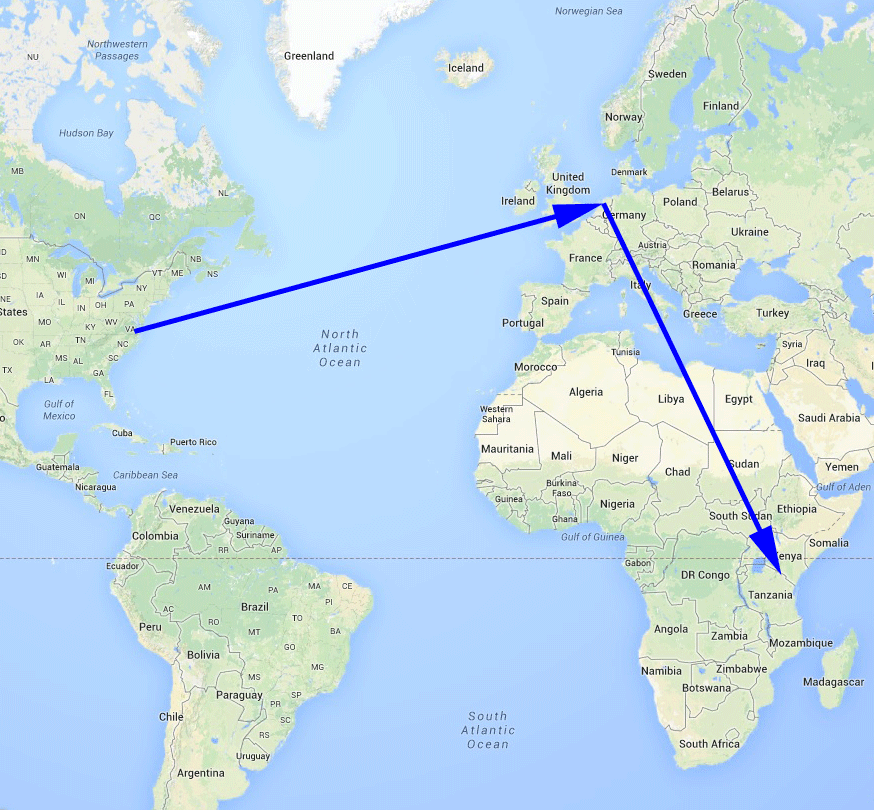 We arrived in Amsterdam without incident and made our connection to Kilimanjaro. After 9 hours crossing the Atlantic, just about the last thing we wanted to do was get on another plane for another 9 hours. Especially in coach. Africa IS really far away. We watched the sunset in flight over Kenya, which was really nice. Oranges, blues, grays... beautiful. Finally got to Kilimanjaro airport and when we stepped off the airplane, I looked at M and said "7." She knew. We've now been to all seven continents. In fact, I realized that we'd set foot in three different continents in less than 24 hours. Then I realized that this wasn't a first for me. I once did the London to Sydney run with a refueling stop in Singapore. I'm not sure whose life I'm living, but it's pretty cool and I hope he doesn't find out.
We arrived in Amsterdam without incident and made our connection to Kilimanjaro. After 9 hours crossing the Atlantic, just about the last thing we wanted to do was get on another plane for another 9 hours. Especially in coach. Africa IS really far away. We watched the sunset in flight over Kenya, which was really nice. Oranges, blues, grays... beautiful. Finally got to Kilimanjaro airport and when we stepped off the airplane, I looked at M and said "7." She knew. We've now been to all seven continents. In fact, I realized that we'd set foot in three different continents in less than 24 hours. Then I realized that this wasn't a first for me. I once did the London to Sydney run with a refueling stop in Singapore. I'm not sure whose life I'm living, but it's pretty cool and I hope he doesn't find out.
We made our way through customs without any trouble and then left the building. Apparently this is as close as they let people get to the airplanes without a ticket. The sidewalk was lined with about a hundred people all holding signs with names. We carefully checked out each sign as we walked the gauntlet. No one seemed to have our name, and then we saw the Thompson Safaris logo. We followed our new-found rescuer (Matthew) to the edge of the crowd and he handed us off to Simon. With a quick "Wait here," he disappeared into the crowd to find more lost souls.
When he returned, Simon checked our names against his list. No match. Uh-oh. Simon had no idea why we weren't on his list. Without another word, Simon followed his colleague back into the melee leaving us alone and wondering where the nearest Motel 6 was. Or even if they had such things in Tanzania. Over the next 10 minutes, Matthew and Simon reappeared several times just long enough to dock another bewildered group of travel-weary folk to our growing group like a couple of bird dogs fetching game. They, of course, were all on the list. Realizing it was time to do something, I shouted to Matthew, "We're not on Simon's list!"
"You're not on the list?" said he.
"No," said we.
Whereupon he produced a piece of paper from his pocket and declared, "I have another list!" We were on THAT list! He then said, "Oh, you're THOSE people. We've been expecting you." (Apparently our reputation precedes us.) Actually, we added a Kilimanjaro visit to the beginning of our Safari trip and it seems not many people do that.
Side note: They should. It's awesome.
So, in our bizarre uniqueness we'd earned a spot on the second list. The probability of a Motel 6 seemed to be fading. Finally it was all sorted, our bags were tossed in the back of a Land Rover, our guide for the next two days (William) and another (our porter) herded us into the Rover and we all drove off into the night to find the Ndarukwai Ranch. The roads soon turned from paved, to not paved, to something like a continuous earthquake for the final half hour drive. By the time we got to the ranch, I'm pretty sure several of my teeth were loose. And M was looking like something south of Kelly Green. I'm not sure there's enough Dramamine in the world to help that poor adventurer.
On the plus side, our room is fantastic, more like a full cottage. It's a large tent with rooms, with a full bathroom, with a wood floor, and all under a thatched roof. It really was very nice. No running water or electricity though. They do have solar powered LED lights that last a while, but really are just meant to get you to bed without bumping into something. We ate a late dinner down at the dining room (thatched roof, open walls, wood floor). Wonderful food. Attentive staff (many of whom were eager to strike up a conversation to practice their English). We were apparently the only guests at the lodge that night and enjoyed the dining room to ourselves. And a somewhat bored staff eager to please us.
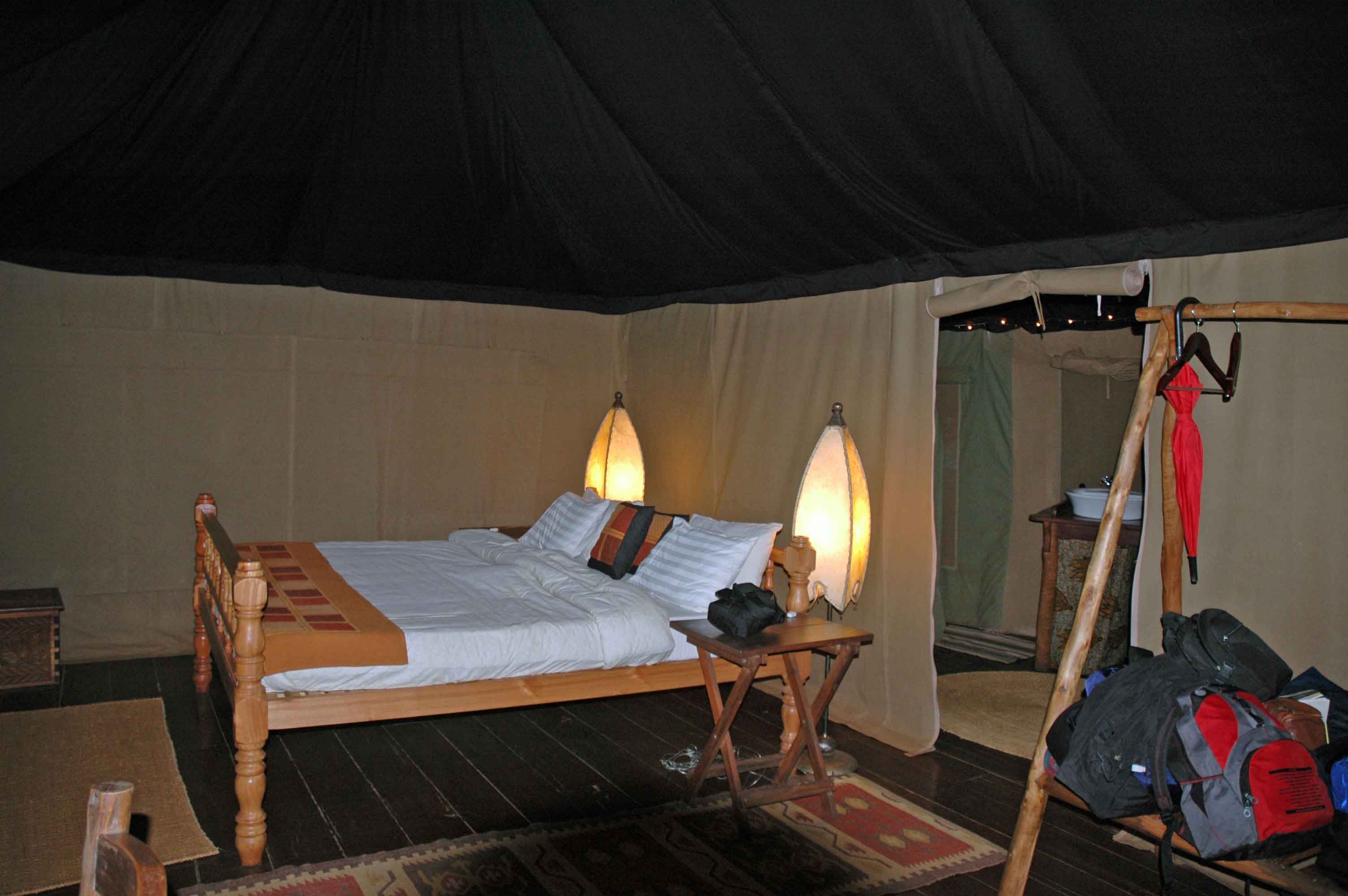


(Click photos to see larger size)
Weary, confused, recovering from a certain level of anxiety, we'd found a luxury tent, a clean bed, and a great meal. We declared it a success, and called it a day.
Day 3 - 8/9/13 - Friday.
Kilimanjaro.
Up at dawn and heard a noise right outside the tent. We opened the flap and noticed about a dozen monkeys on our porch. After a few minutes they wandered off. Not the sort of thing you see at home. After breakfast at the lodge, we headed off to Kilimanjaro. Another long drive across very rough roads that only a four wheeled vehicle could make. Just when we thought we couldn't take the shaking, we reached the trail head and started our hike on the Shira plateau. Located on the west side of Kilimanjaro, the plateau is at about 12,000 feet. The air was pretty thin so we took it slow. We had some great views along the way though, sadly, the summit of Killimanjaro was hidden in the clouds all day. We also crossed a couple of gullies with some seriously steep and scary paths to get down to the stream and then up the other side. I only slipped and fell once, so I felt pretty good about it. Especially since I didn't plummet off the side. (Yay, me!)
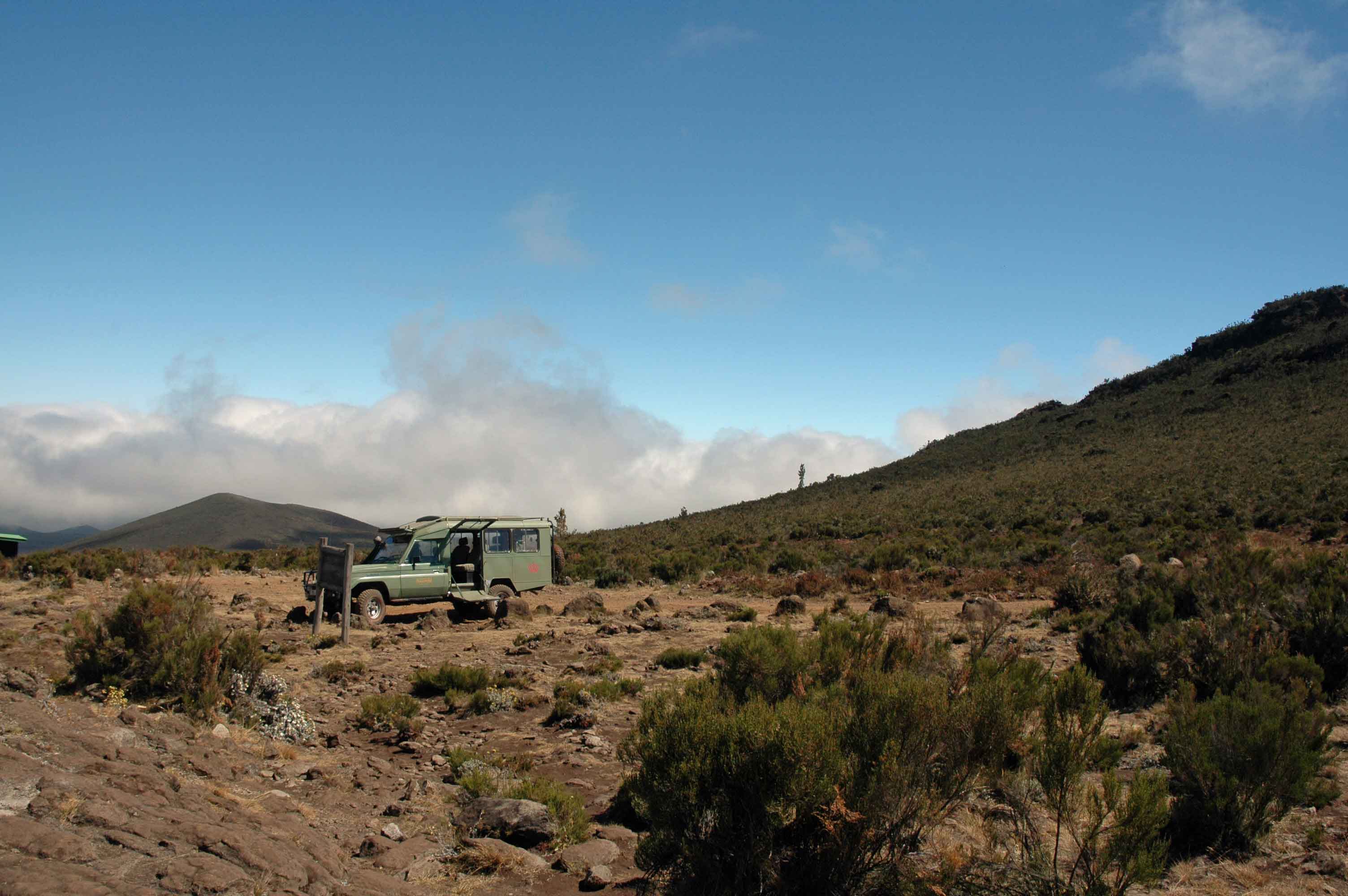

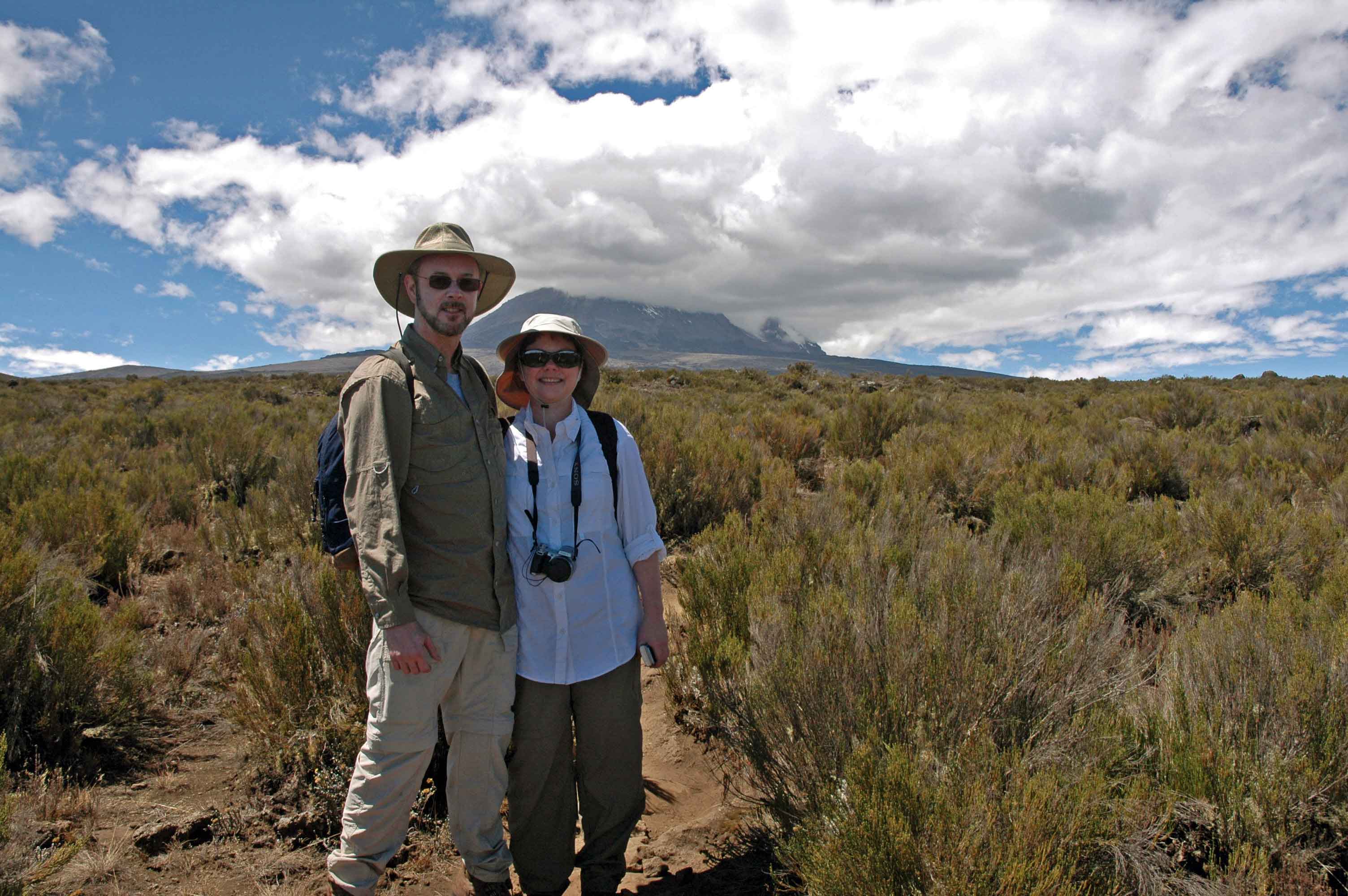
(Click photos to see larger size)
We stopped along the way to eat lunch (sandwiches, etc.). While we were eating, two very large birds stared at us from a nearby rock and very obviously wanted our lunch. It was more than a little bit creepy. We continued and got to the Shira 1 camp after about 3 hours. We were pretty tired by that point. Well, M and I were; our guide and porter never broke a sweat. The Shira 1 camp is the end of day 2 for serious hikers headed to the summit at 19,341 feet. They hike up from the base camp to get there, ascending about 4000 feet. We, on the other hand, were driven up to the plateau and then hiked across it. Even so, the altitude triggered a migraine with M and the hike back to the Land Rover was miserable for her. Also, she inadvertently alarmed the guide who was convinced she was about to drop dead from altitude sickness. She didn't, though.

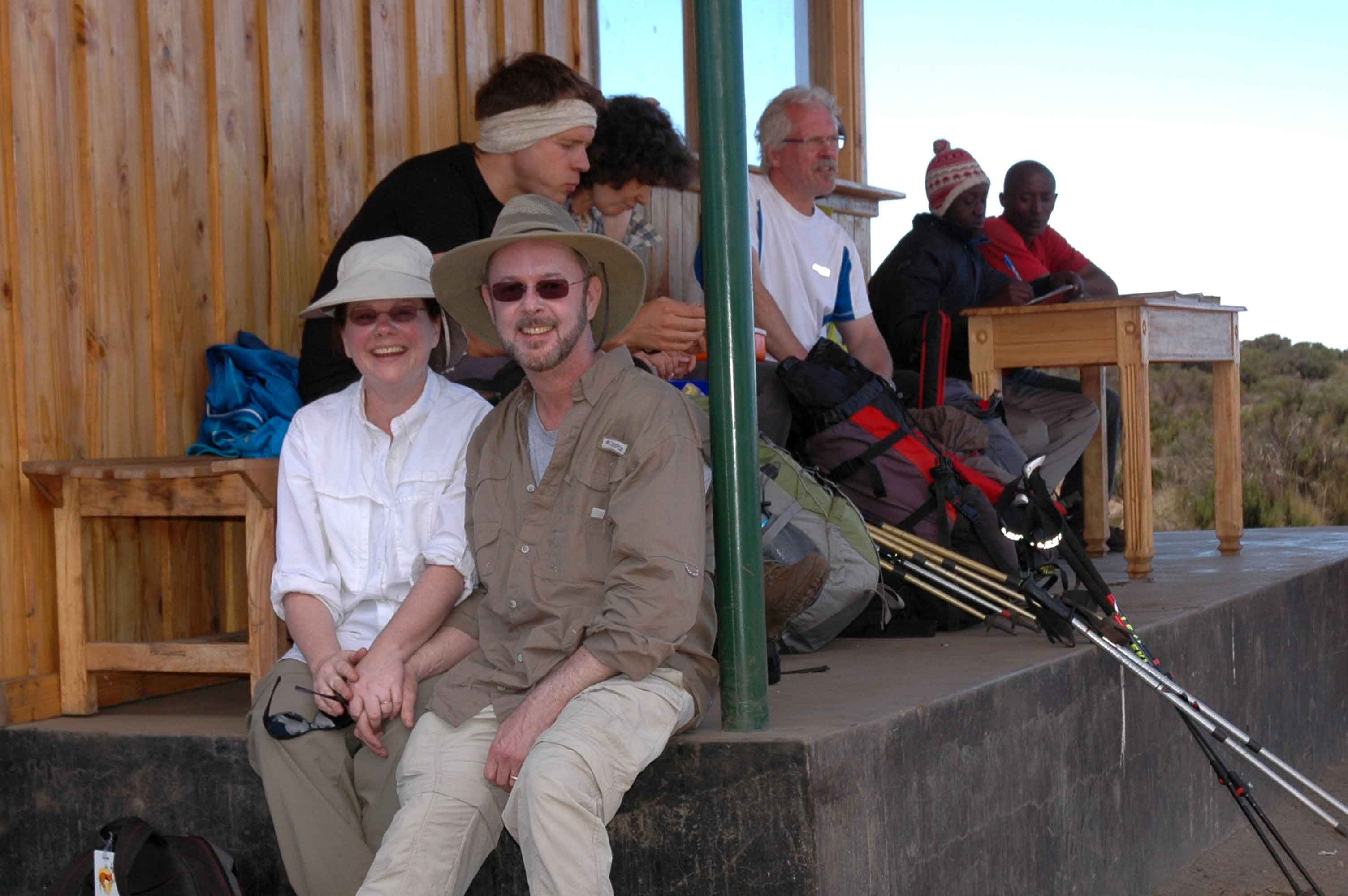
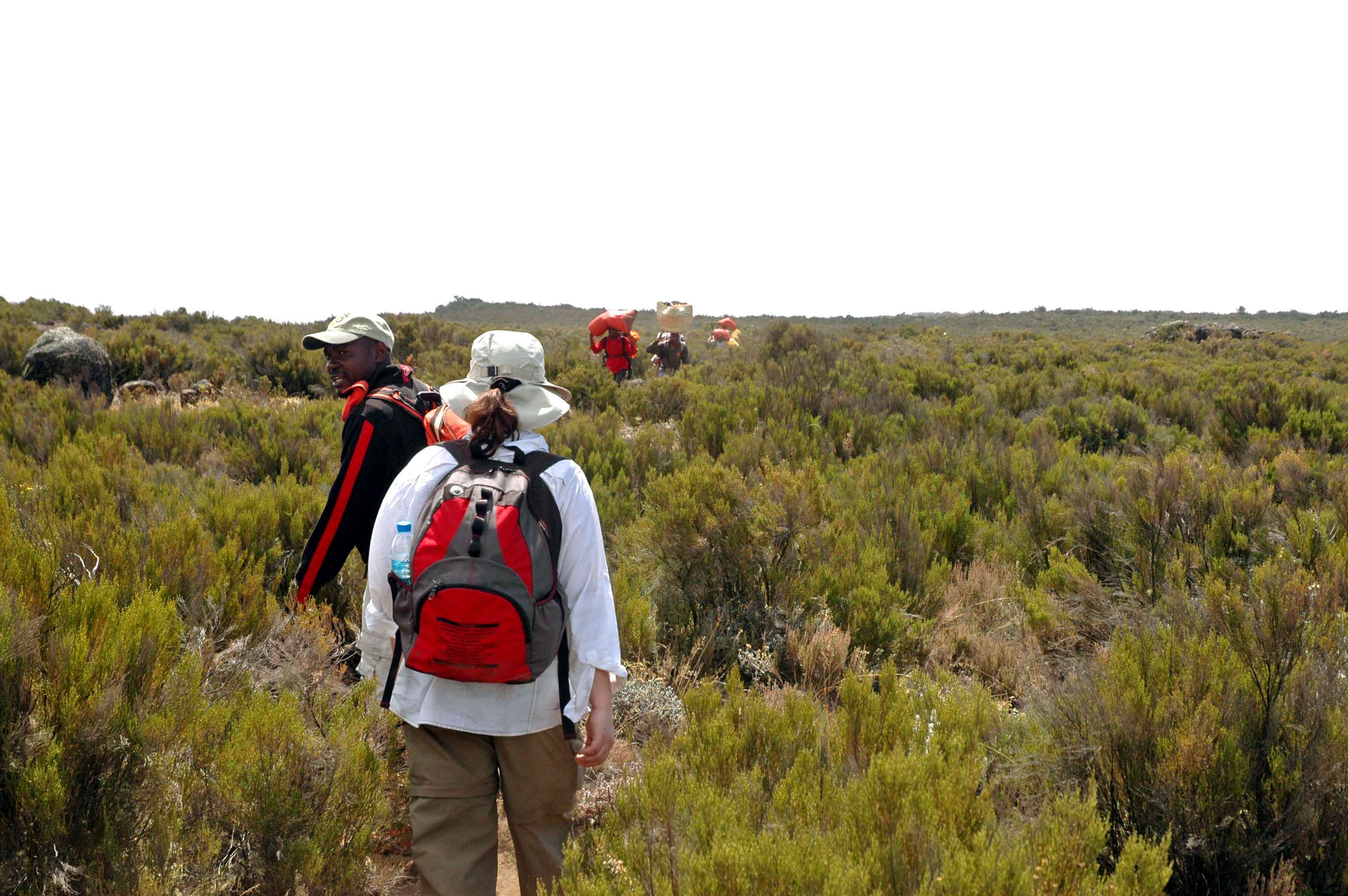
We drove back through pot-hole-hell to the lodge. The driver took a different route back and this time, I swear, the "road" actually faded into a boulder field. Well, a large rock field anyway. We saw a few animals along the way, including impalas, warthogs, gazelles, baboons and a wildebeest. We had dinner at the lodge and met a family traveling from Israel. There was also a "bush baby" at the edge of the dining area. It looked a bit like a small monkey, about a foot long. He was wild, but very used to people. The staff had bits of banana that we could feed him. The others showed us how we could stretch out our arm, put a bit of banana on it and the bush baby would gently climb right up your arm and take it.


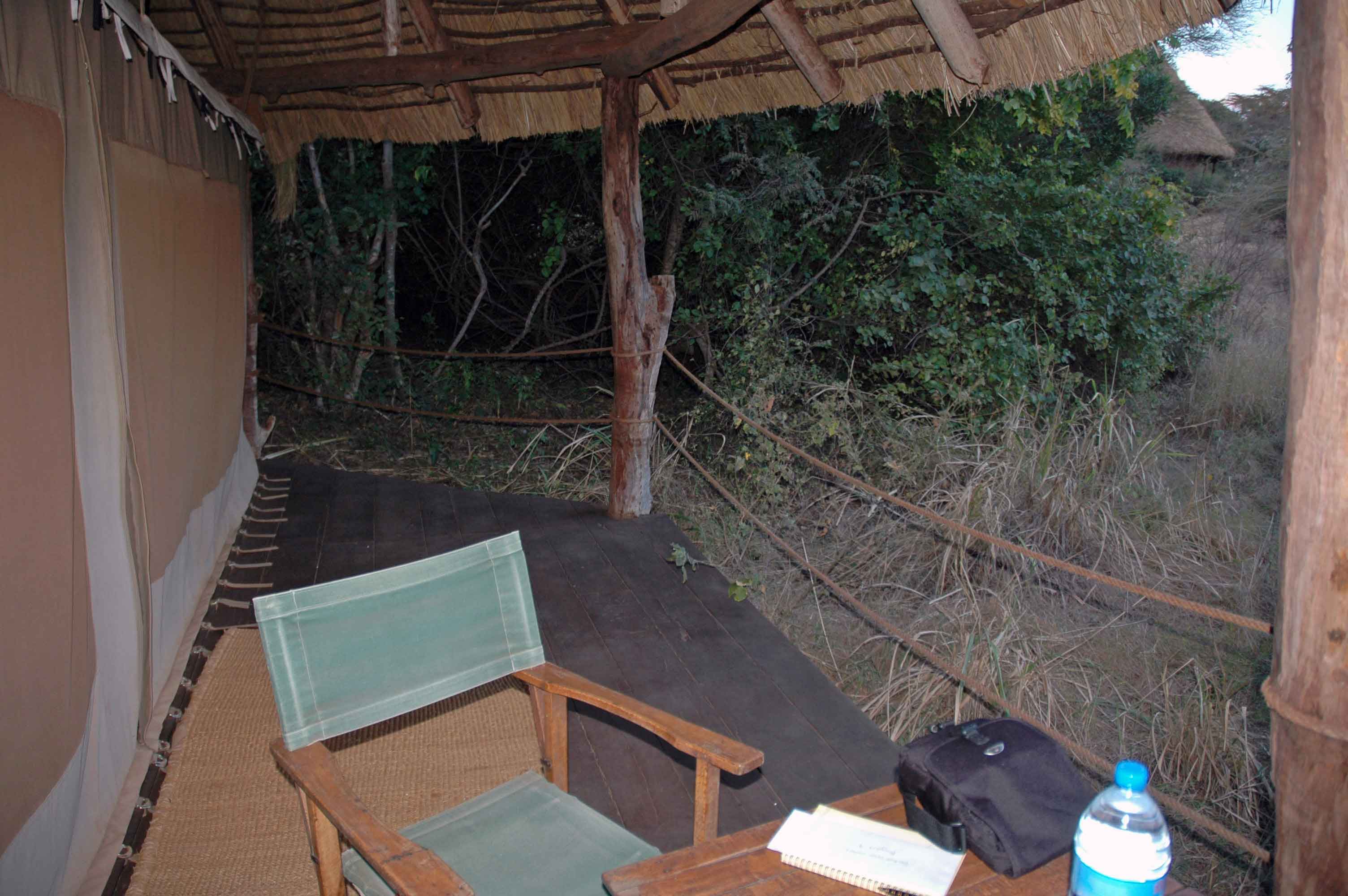
Click here for more pictures from Day 3
Day 4 - 8/10/13 - Saturday.
Kilimanjaro.
We were up again at dawn. Ate breakfast and headed off for a nature walk with one of the guides, Thomas. Thomas was armed. Just another reminder that nature is to be respected. We walked straight out from the lodge and within five minutes we were in the middle of baboons and impalas. Apparently, the impalas like to follow the baboons because when they climb trees to eat, they shake things out and the impalas can eat them from the ground.



(Click photos to see larger size)
Another five minutes and we saw our first elephants. They were orphans and had been brought to the ranch for protection. There was a man walking along with them, just following along. He was in uniform and Thomas explained that it was his job to protect the elephants from poachers, and to keep them away from areas where people lived and grew crops. Even though the elephants were technically wild, they were used to the man and would follow his directions to go this way, or that way, to stay safe. There were others hired to protect the elephants too, and they work in shifts so there’s always someone with them. As we were standing there with Thomas, the elephants noticed us and started to come over to check us out. Their protector stepped in and said something to them and they reluctantly stopped and headed in another direction.
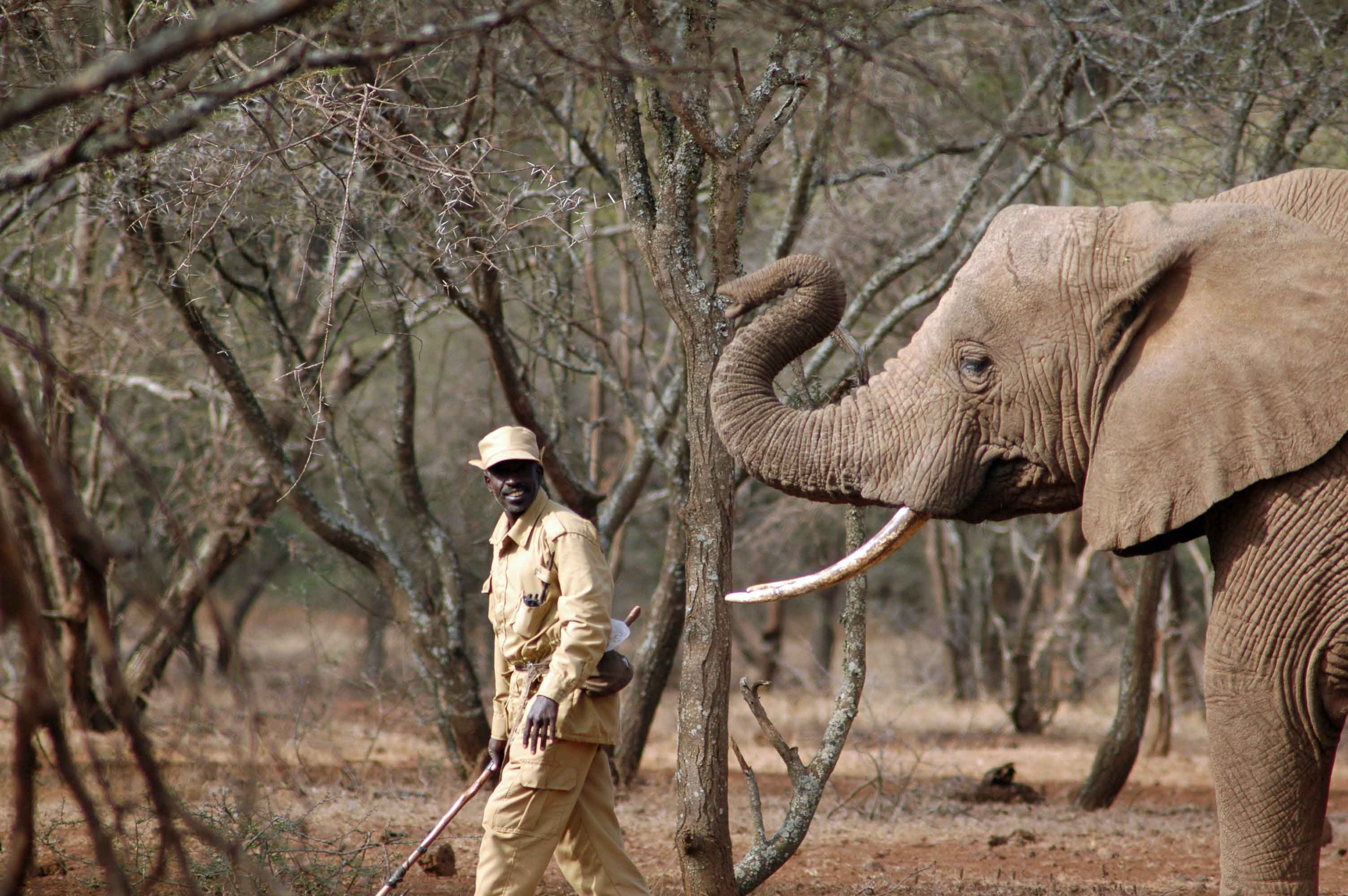

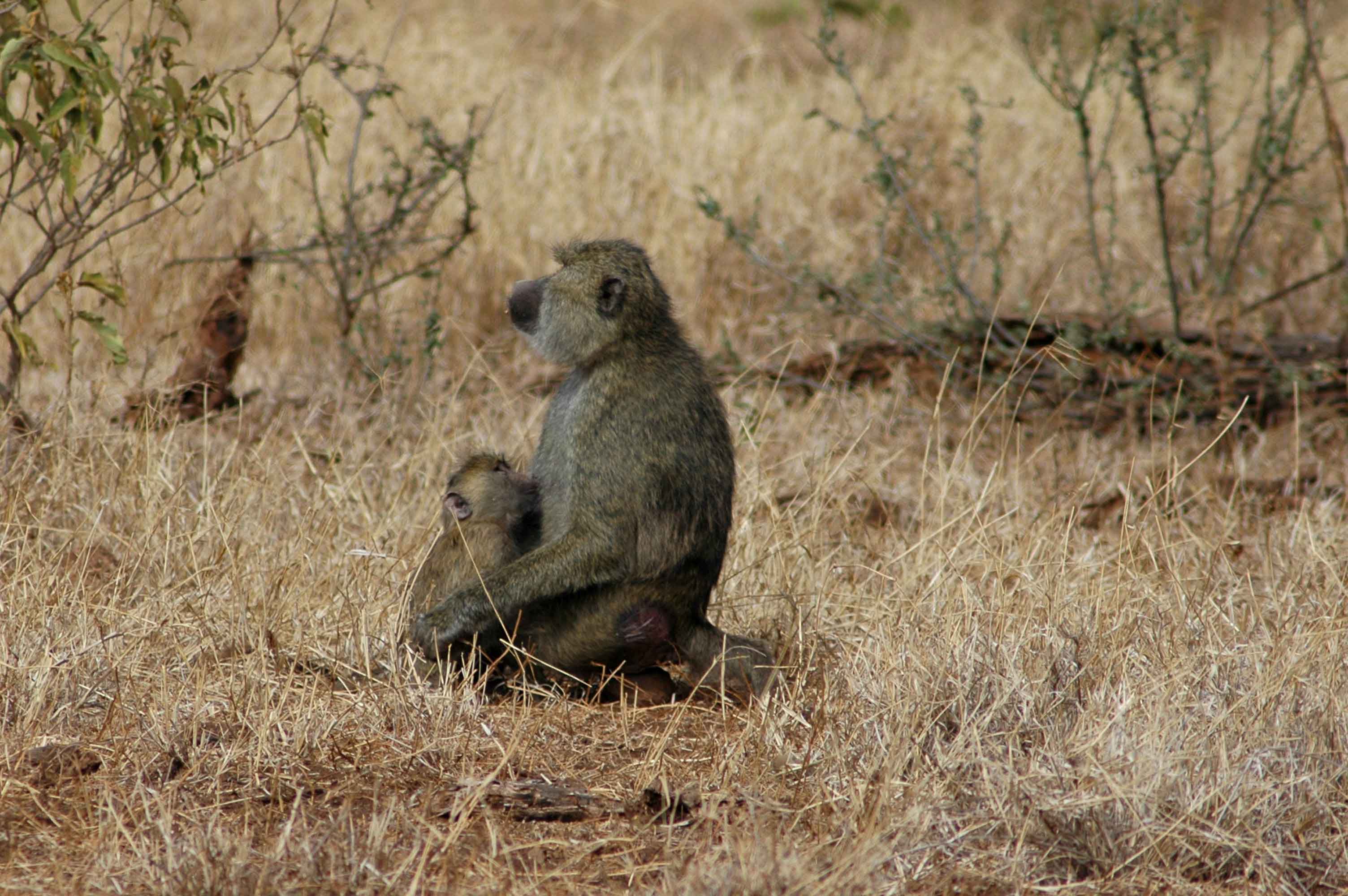
After leaving there, we walked a little farther and came to a huge tree house. From the top we could see for miles. There were a couple of warthogs nearby digging for roots near a stream and several different kinds of birds in the trees around us. Then Thomas pointed out a line of zebras in the distance heading towards us, probably to drink at the stream. They stopped to rest when they were about a mile or so away. Or maybe they’d seen or smelled us. We left the tree house and hiked toward them, seeing an eland in the distance. Finally we got closer to the zebras and just stopped to watch them for a while.


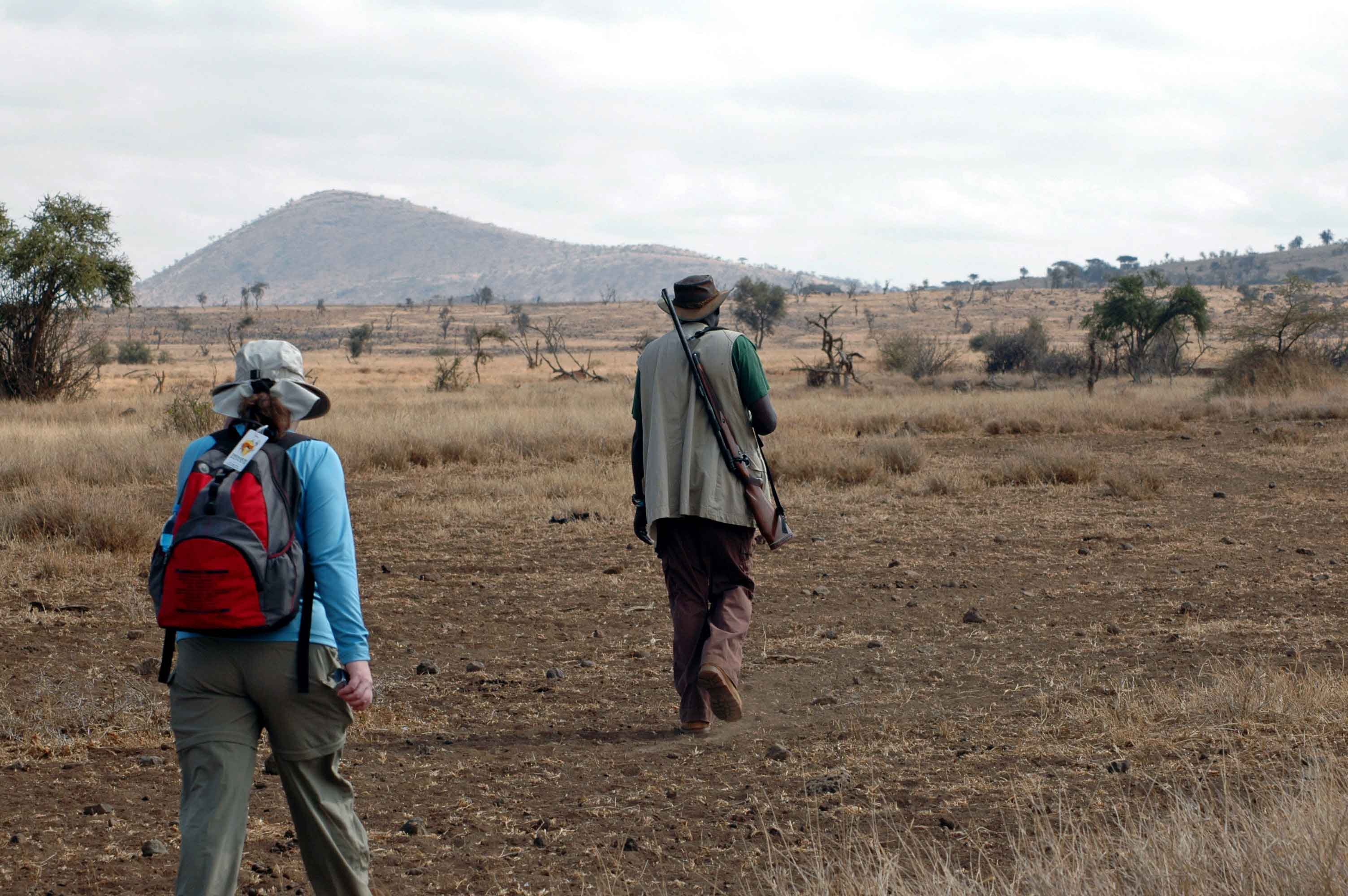



After that, Thomas called back to the ranch (on a cell phone!) and had a rover come out to pick us up and take us another short distance to where some giraffes were. We stared at the giraffes (six of them), and they stared back at us (four of us). Hard to say who was watching and who was being watched. They eventually decided they’d had enough of us and trotted off.

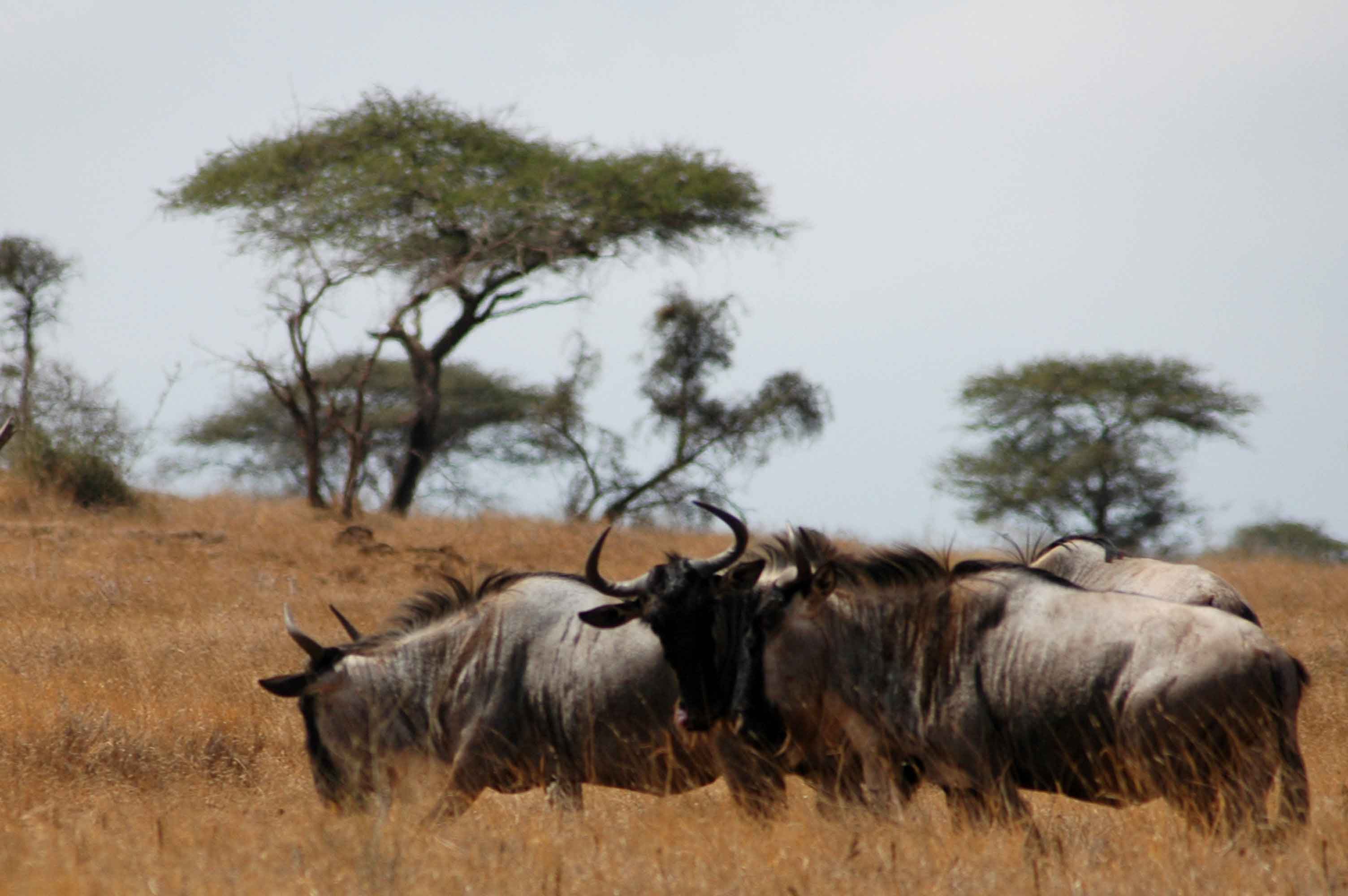

On the drive back to the ranch, we came to a small herd of wildebeests and zebras. Thomas explained that they’re often seen together because the wildebeests have a good sense of smell and can smell a lion from many miles away. The zebras have good eyes and can spot a lion hiding in the grass. So the wildebeests have learned that when the zebras run, they should, too. And the zebras have learned to run when they see the wildebeests run. Each sharing their talents with the other, together they are stronger. There’s a lesson to learn here.
We passed some more elands on the way back to the lodge where we had lunch. We’d seen baboons, impalas, elephants, warthogs, zebras, elands, giraffes, wildebeests, and more birds than I can remember. It was a big morning. We were driven back to Arusha after lunch to our next overnight stop at an inn. A real inn. With walls and everything. Interestingly, there was a red button on the wall next to the door in our room. They explained it was an alarm button to hit in case of monkey attack.



Monkey attack?
Yes, monkey attack. Apparently it’s enough of a problem here to warrant special alarm buttons. We took a nap, woke in time for dinner, and then called it a night. We were exhausted.
Click here for more pictures from Day 4
Day 5 - 8/11/13 - Sunday.
East Serengeti.
The day started at 5:30 am with a knock at the door. It was our unexpected wake up call. "It’s 5:30! You leave in an hour!" We hadn’t actually been told when we would be picked up in the morning for our flight into the Serengeti, so we asked about that at dinner the night before. They didn’t know for sure, but assured us that if we were ready by 8:00, we’d be fine. Oh well. While I was checking out at the front desk, M dashed through the dining room, body-checked a couple of waiters, grabbed a few slices of bread and some bananas, and still managed to dive into the van as it was leaving the parking lot. I thought the shoulder roll was a nice touch.
This was also our introduction to the family we’d been paired with for the next two weeks on safari. They were calmly waiting in the van as we dove in and I’m sure were wondering what sort of strange folk they were stuck with. A family of five from Boston, with a son and two daughters from high-school through college age. We totally lucked out – they turned out to be great fun to be with.
We arrived at the Arusha airport about an hour later. A short wait and we were boarding our plane, a Cessna Caravan. One pilot, seven safari guests and one guide (full flight). After an hour flight to the west, we landed on a grass strip next to a couple of small buildings and an outhouse.
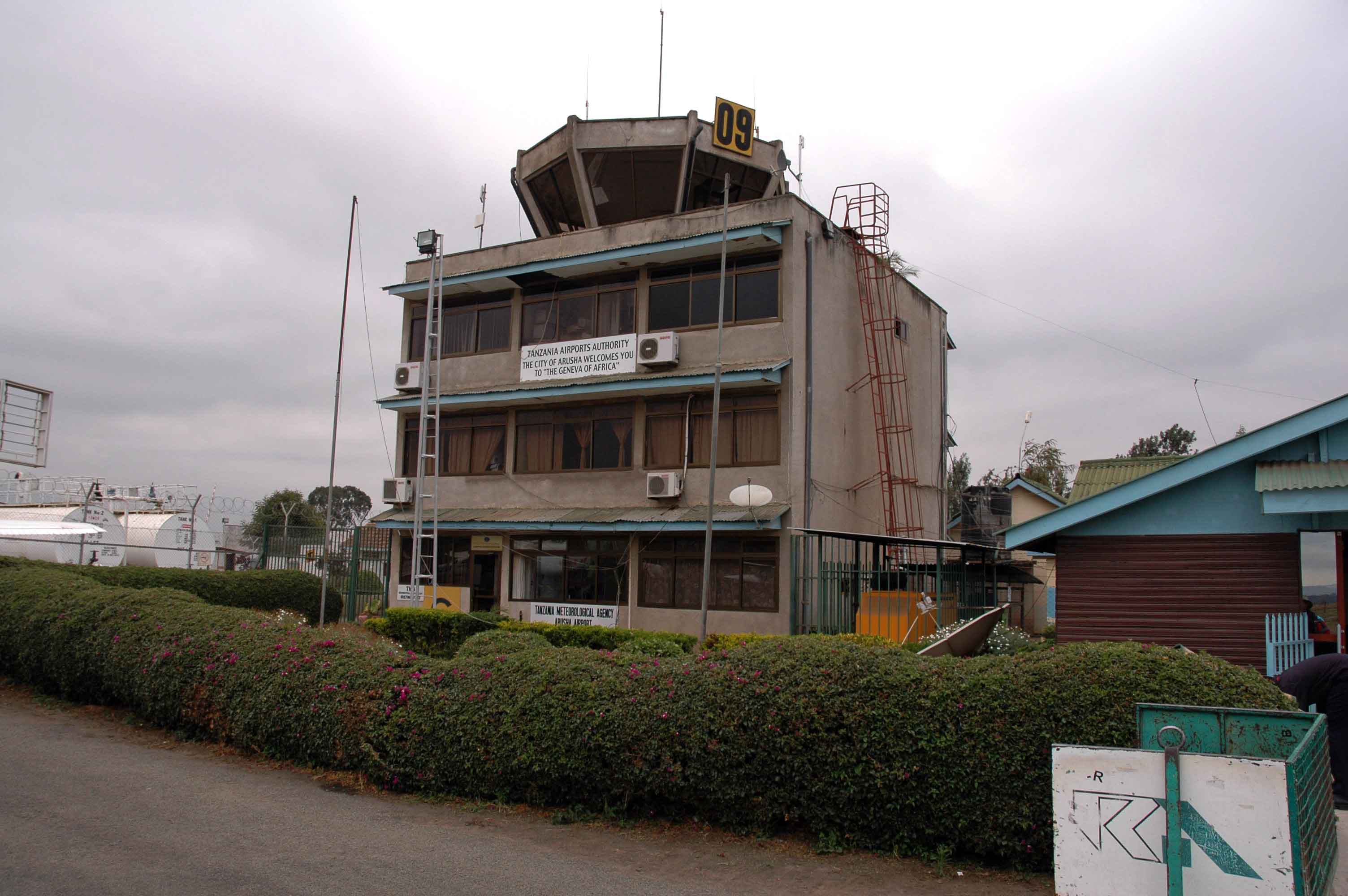

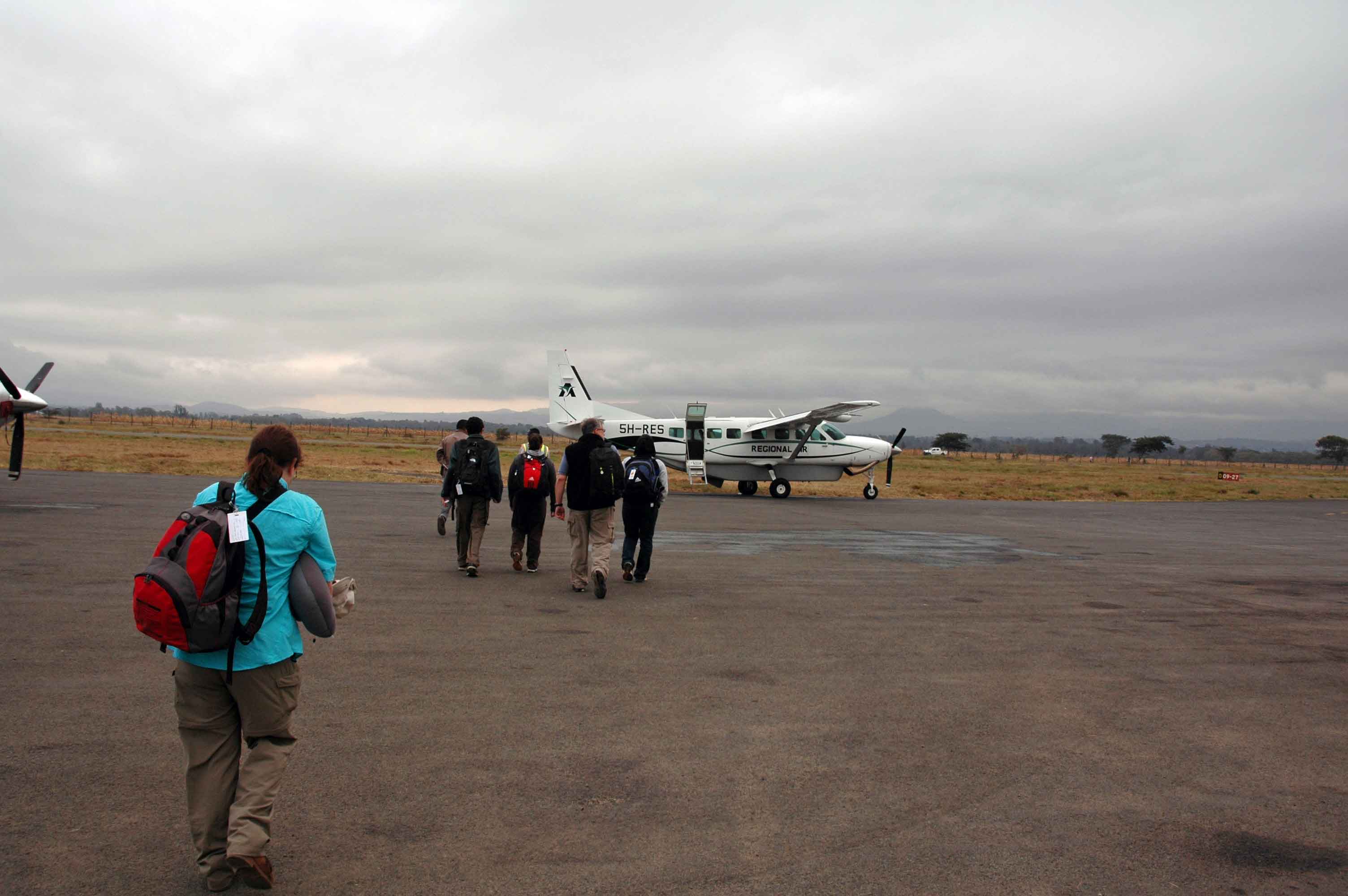
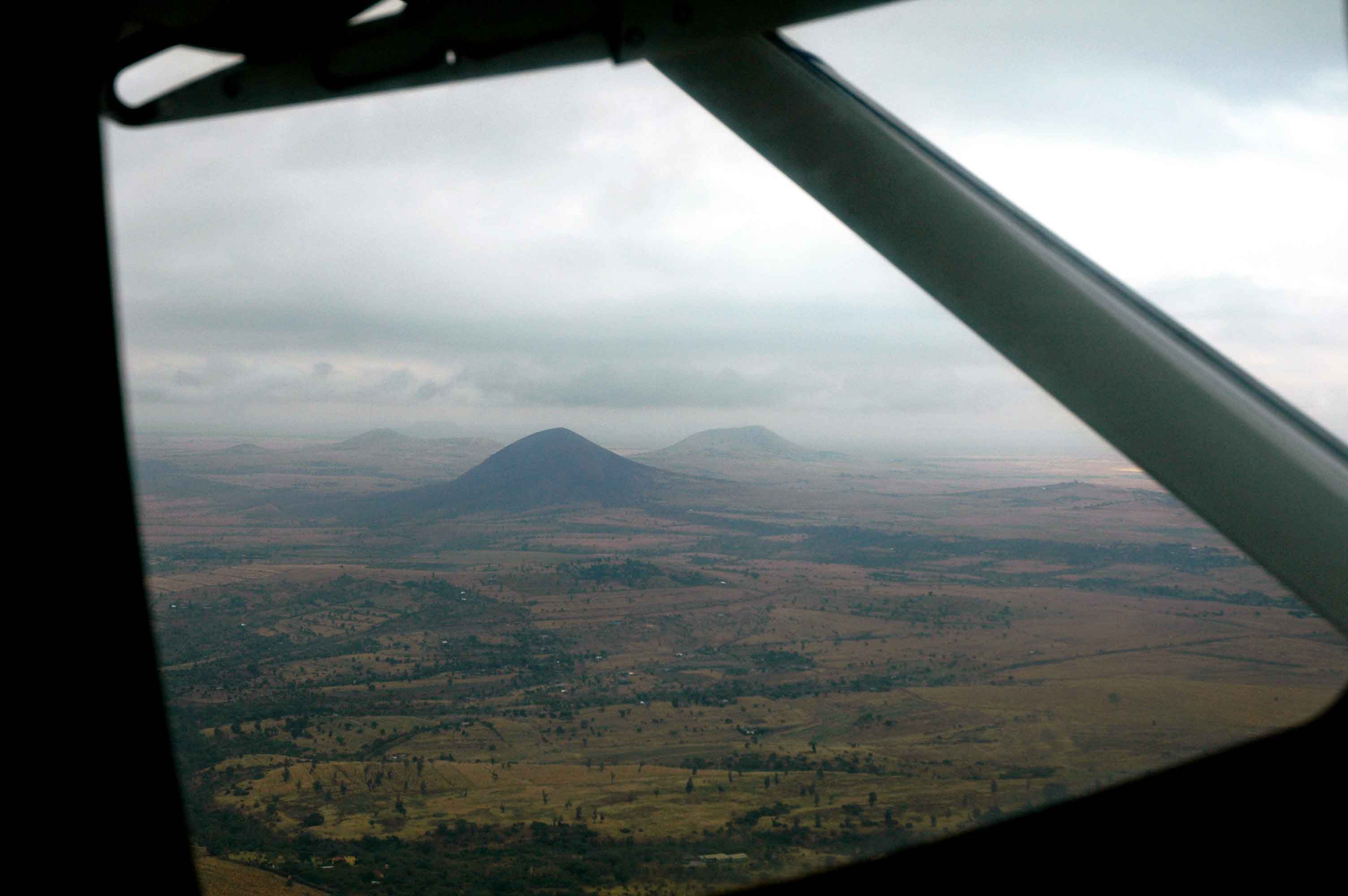
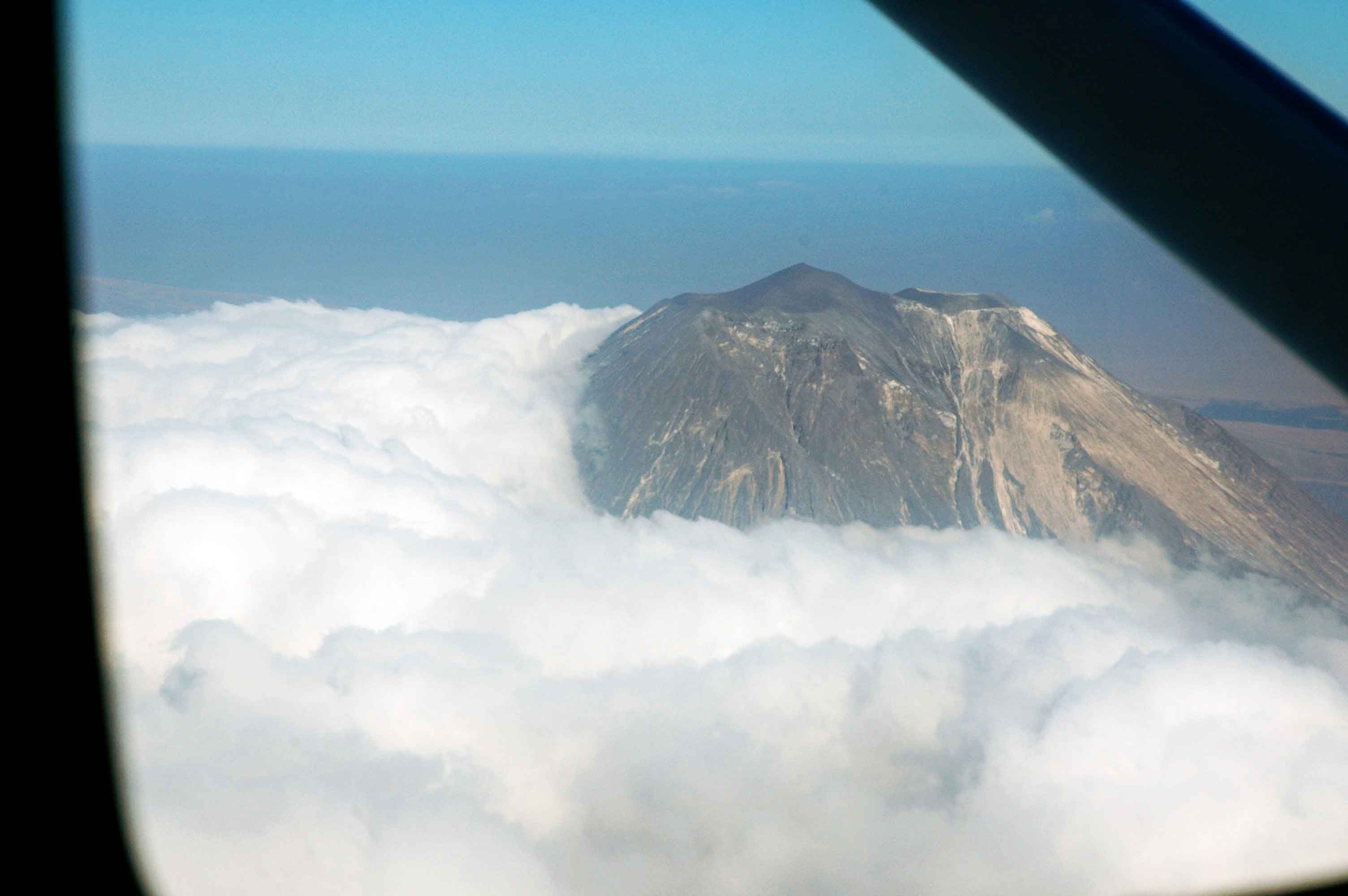
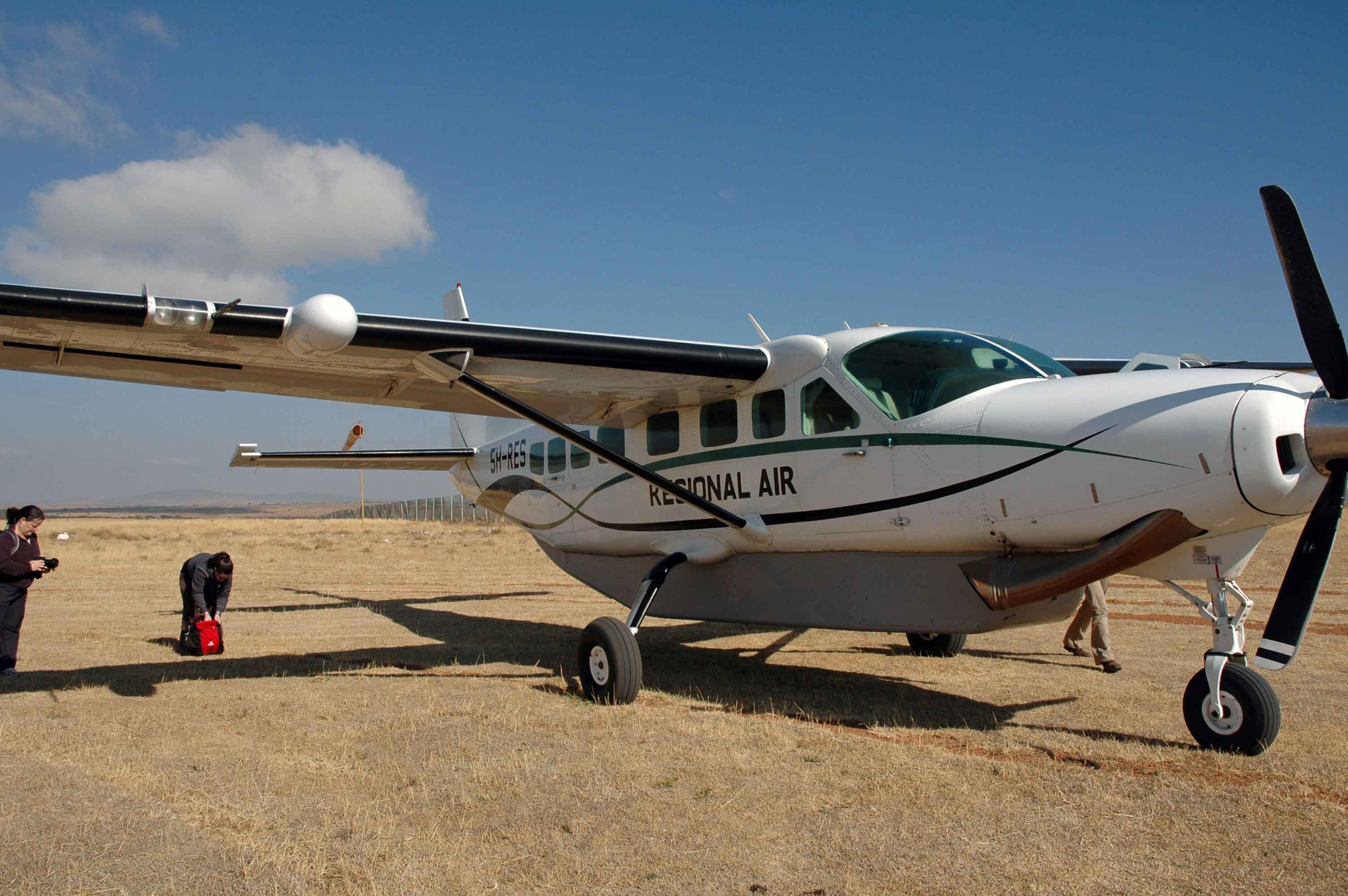
(Click photos to see larger size)
There were several Thomson Safari staff waiting with a couple of rovers, and a bunch of children from the local town who were there to watch the plane and stare at us. They excelled at both. We climbed into the two rovers and endured an hour and a half of bouncing along very bad roads. I wouldn’t say I’m getting used to being violently shaken for extended periods of time, but I am coming to expect it. We finally arrived at our first camp – Eastern Serengeti Nyumba.

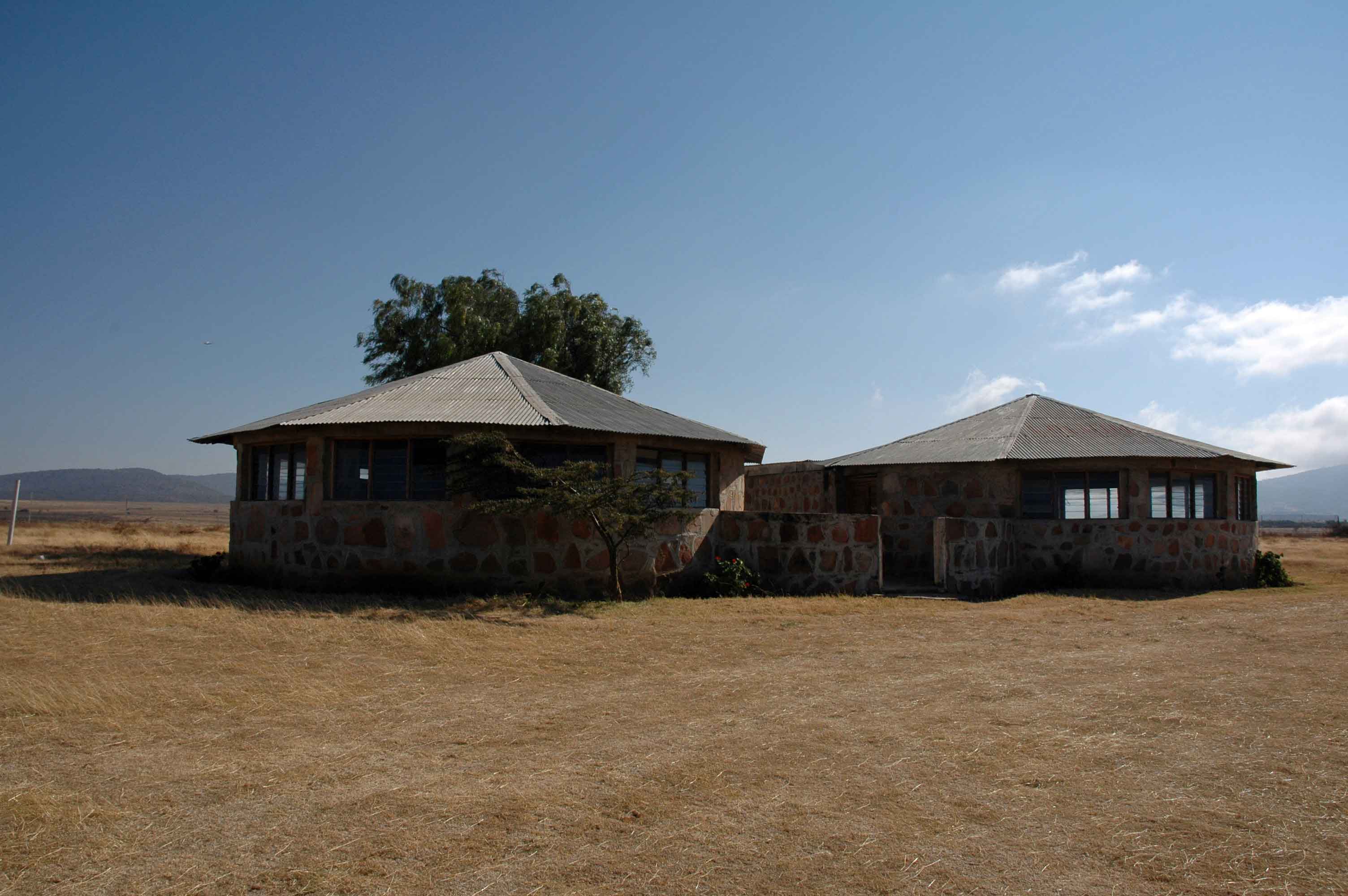

We had a short safari brief, met our guides (Kumbi and Hashim), ate a very good lunch, and then it was siesta time. It was hot, we were tired, and a siesta seemed like an excellent idea. Our tents are very nice. Even though they are tents without electricity or running water, they do have real beds, a separate toilet area, showers (they pour solar heated water in the overhead bucket for you if requested, but only in the late afternoon while it’s still warm), and a solar powered battery pack that will run small bedside lamps for a while in the evening.



Later in the afternoon we drove over to a neighboring Masai village to visit. We met a Masai guide and interpreter named Balala who explained many things about his people and culture. They are a people who choose to live apart from the rest of the country and neighboring tribes. Even their language is unique and only a few also speak Swahili. Even fewer speak English, which makes our guide very special. He explained the hierarchy of the people in the tribe, the hierarchy of each family, and even taught us a few words in their language. After introducing us to others, he showed us around the village, including the livestock pens built to protect against lions (and other tribes) and one of their traditional huts. Everyone was very friendly and seemed happy to answer our questions. They even seemed pleased to pose with us for pictures.



Our camp and their village sit on a large area of land owned by the Thomson company. The company supports them in several ways. They’re given metal chimneys to make their homes healthier through better ventilation, and metal sheeting to use for roofs. Few choose to use these things though, preferring to live in their traditional ways. The Thomson company also builds schools and provides housing for the teachers. The Tanzanian government provides seven years of free, but mandatory primary education, so having a school nearby means they don’t have to be separated from their children while they go to school.
We passed giraffes, wildebeests and oribis on the way back to our camp and then the whole camp gathered around the campfire to chat and enjoy the sunset together. Dinner was a 3-course meal with minestrone soup, beef tips over rice with squash and cauliflower, and date cake for desert. We’re right in the middle of some of the most amazing and wild lands on Earth, but we’re also very well cared for.


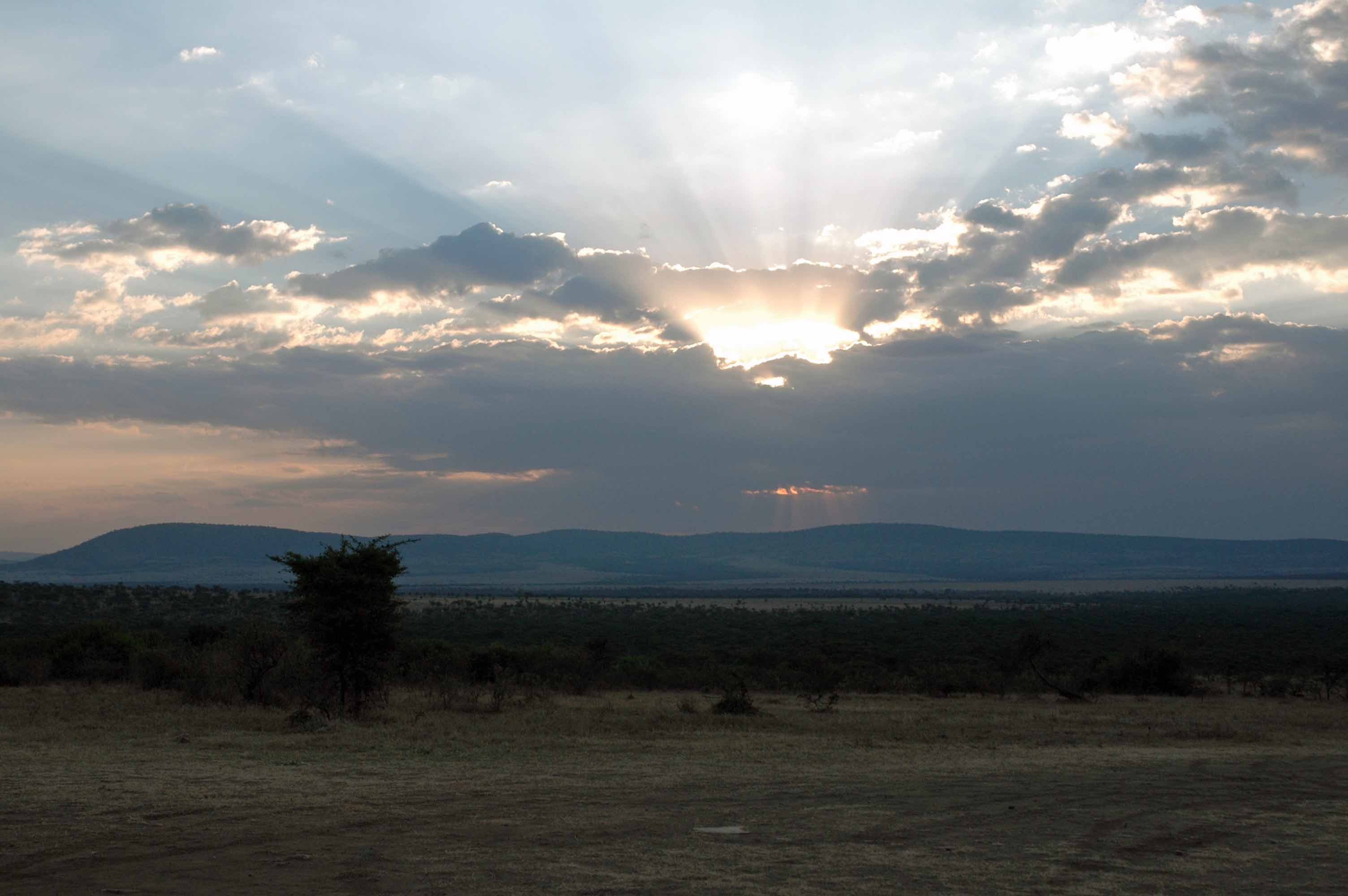
Click here for more pictures from Day 5
Day 6 - 8/12/13 - Monday.
East Serengeti.
Today started very early. A quick cup of coffee and then a 2 hour dawn hike. We saw giraffes, gazelles, wildebeests, and one jackal, who stared at us for quite a while. We were walking along, and suddenly came upon a range rover, several people and a huge buffet breakfast. (Are you kidding!?) We ate breakfast under the trees. Red tablecloth, real ceramic plates and real cutlery. Nothing plastic. In the middle of the African wilderness, we're having a luxury breakfast. Unreal. Just unreal. After breakfast we continued our hike another 20 minutes back to the camp.

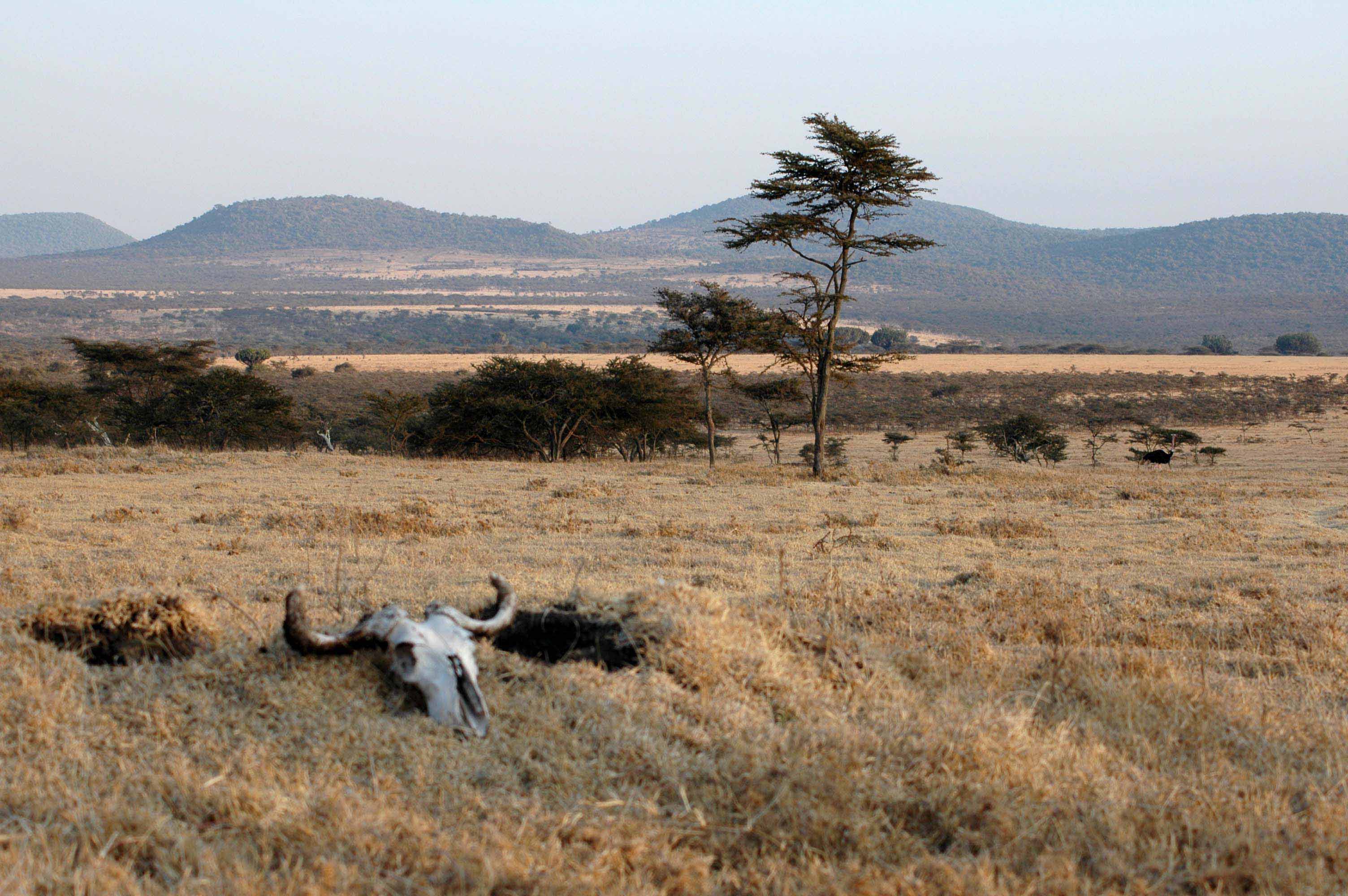
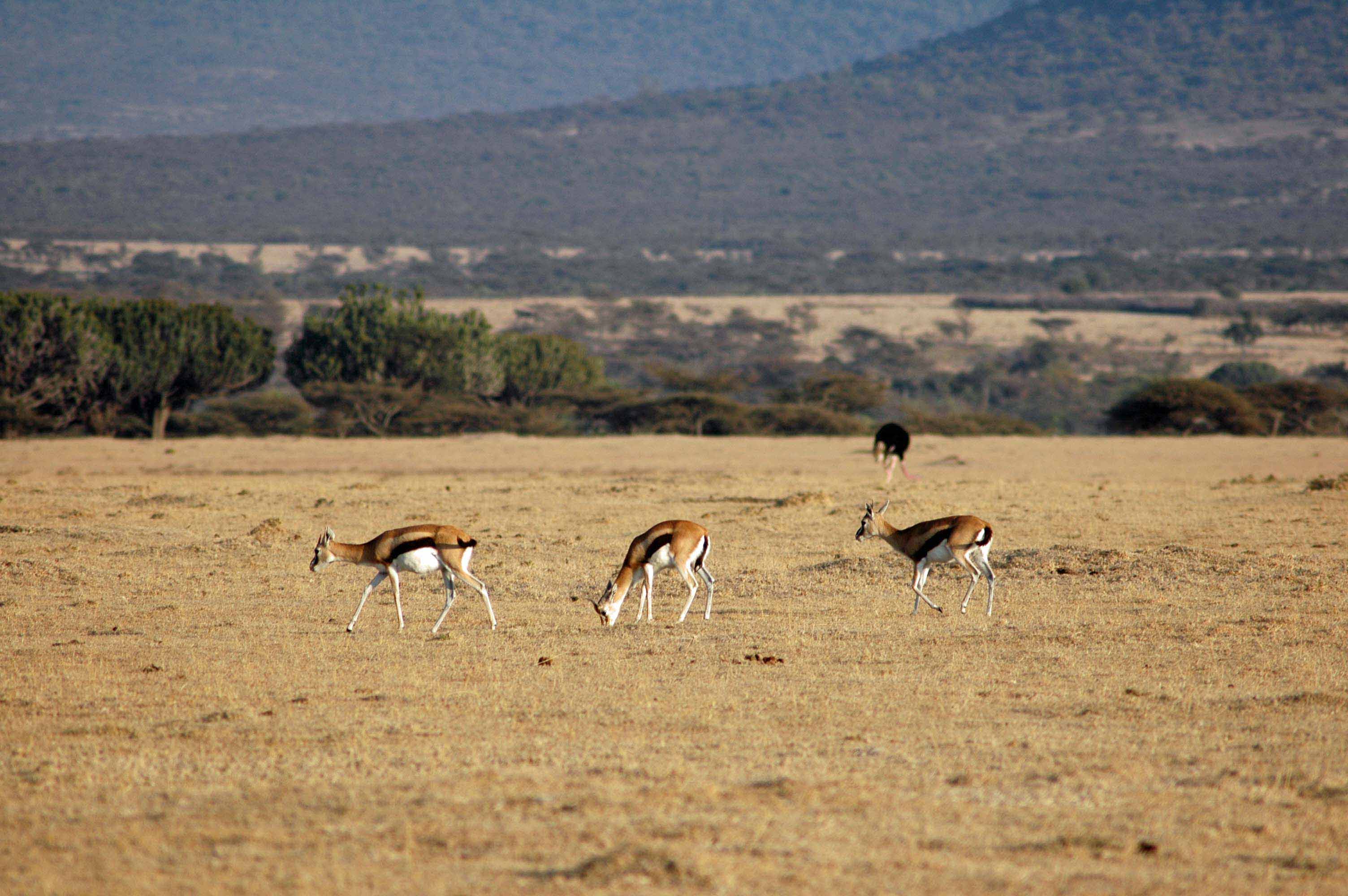
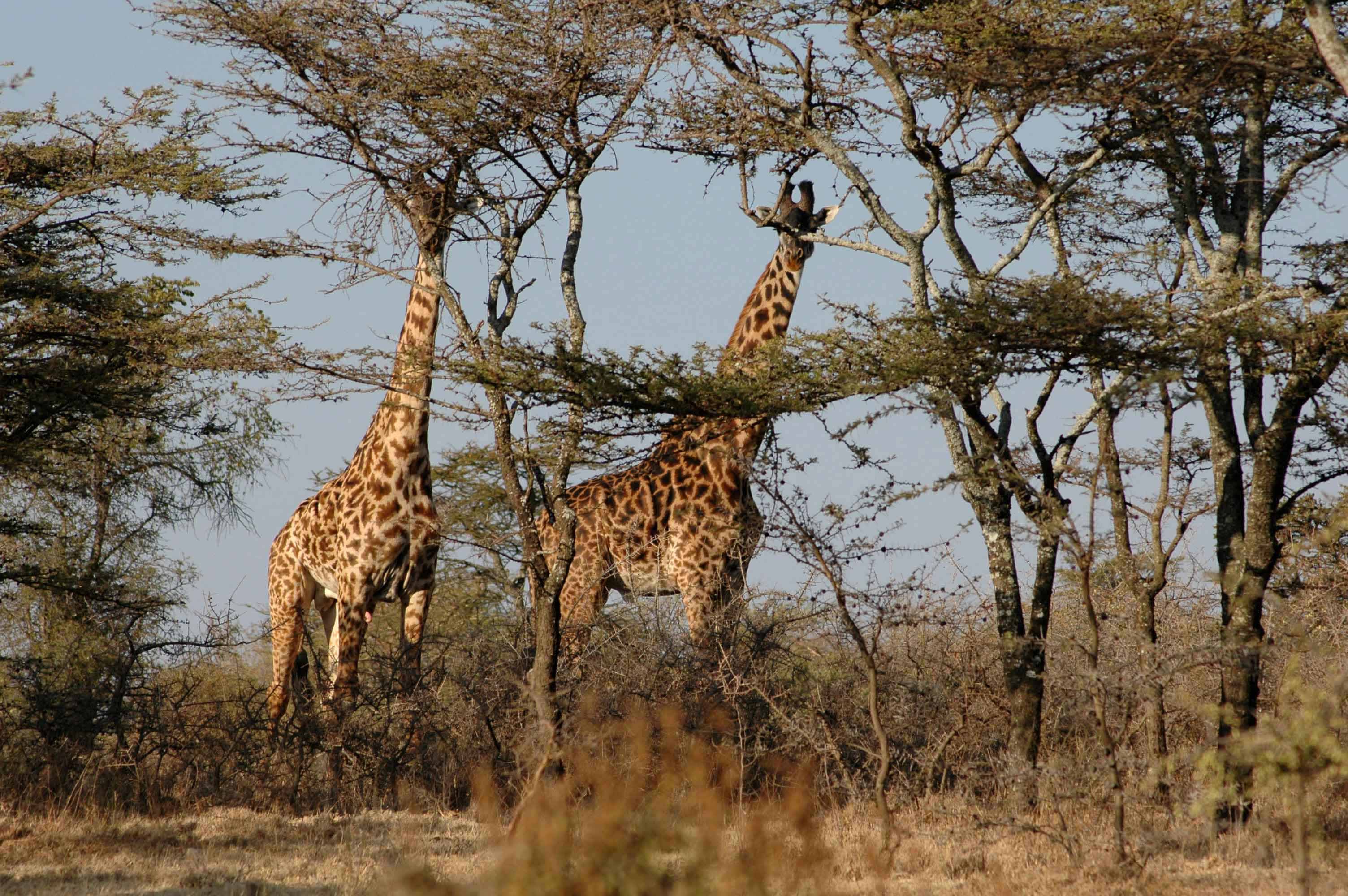
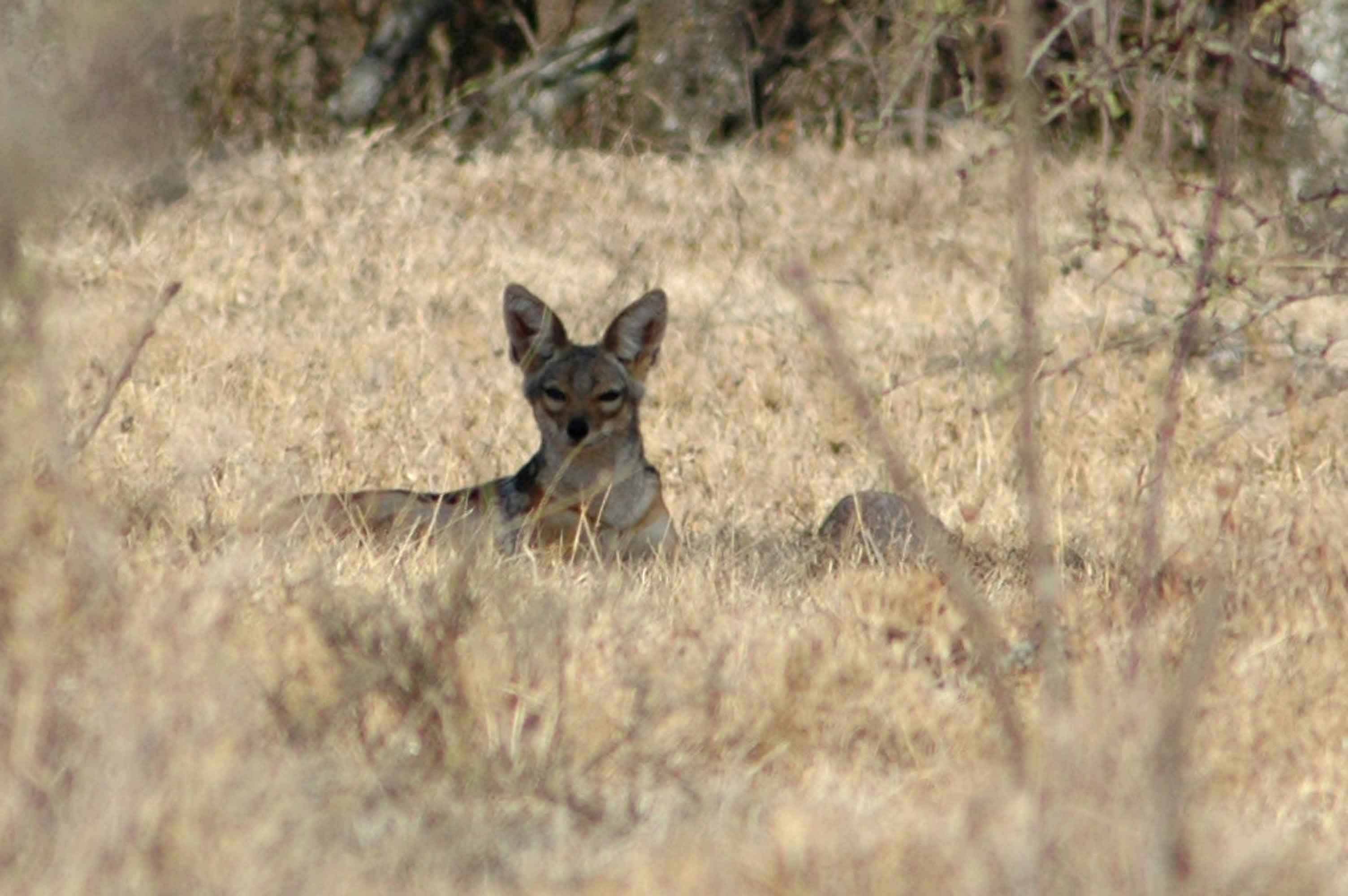


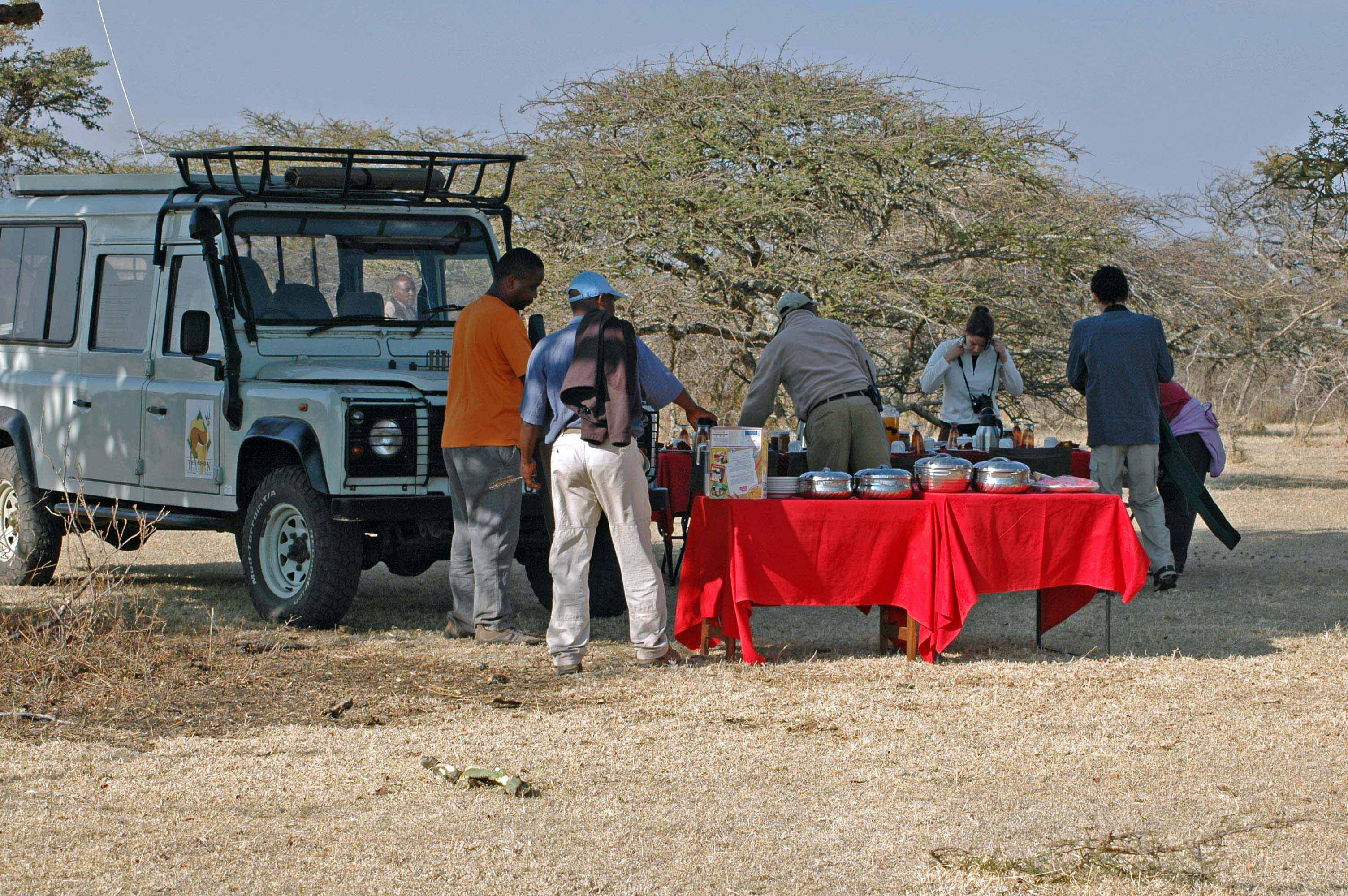
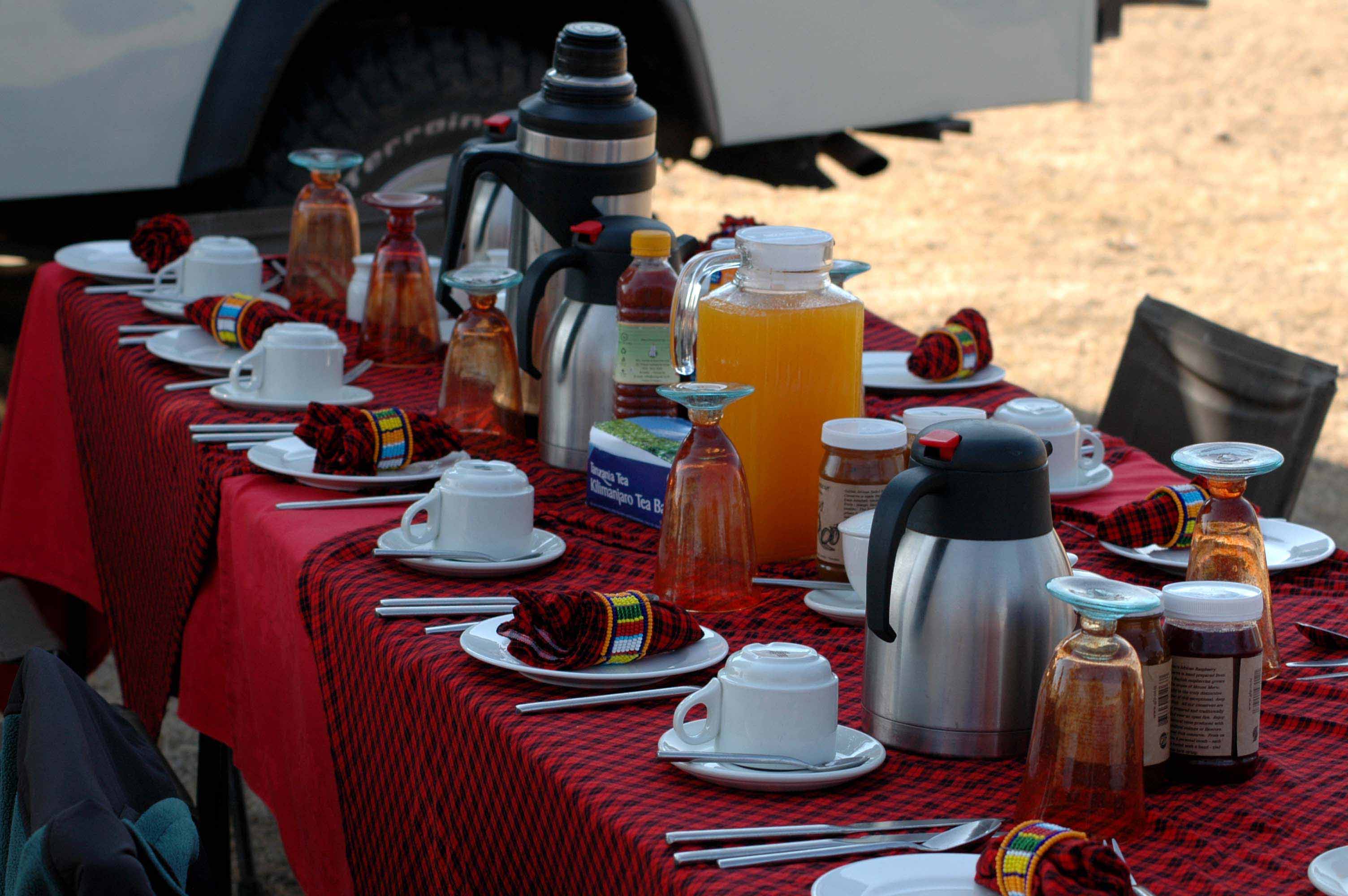
(Click photos to see larger size)
A short break at the camp, and then we drove out to a primary school to visit. This is the school the Thomson company built. We met the headmaster and one of the classes. The headmaster explained that the school had 418 students and eight teachers. Their biggest problems were a lack of teachers and a lack of books. In some subjects, there were 26 students sharing one book. On the drive back, our Masai guide told us that absenteeism was also a problem because most of the children were needed to help their families with herding and other tasks.

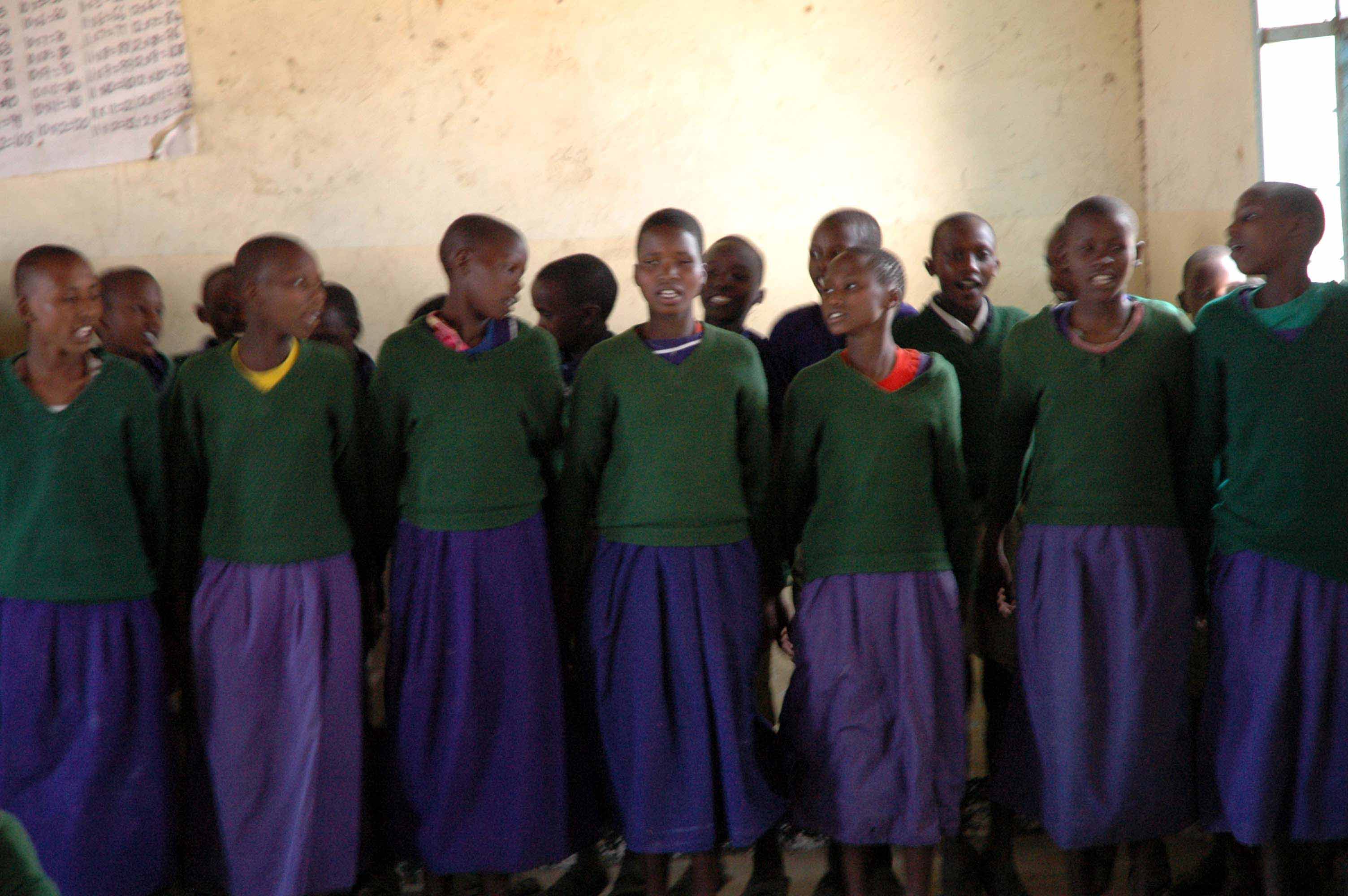

The class we visited are in their final, seventh year of primary school and were studying for their exams to get into secondary school. Those who score highest are admitted to secondary school and the government pays for most of their continuing education. The others who don't score as well on their exams may continue also, but their families must pay full costs, which most cannot afford.
We spent a while with the students,who asked us many questions. Mostly about America and what it was like. Did we have national parks, too? What kind of animals did we have? What subjects did we study in school? Then, they gathered at the back of the classroom and sang for us. The headmaster explained to us that the Masai culture was centered around dance and song. We didn't understand a word of what they were singing, but the enthusiasm and joy were expressed without any doubt. What a gift. What an incredible, incredible gift.
After lunch and a siesta break during the hottest part of the day, a storyteller from the Masai village came over to tell us some stories. She told us the story of her life: growing up, falling in love, marrying, losing her husband and all the years since then. She's about 90, but she's not sure since they don't really track that in her culture. She told us another story about the two-headed monster that was very entertaining. I imagine the children really enjoy that one. As she was finishing her stories, suddenly there was a commotion from behind the tents and about a dozen Masai men and women entered the camp, singing and dancing the whole way. We were mesmerized for the next half hour as they continued singing and dancing. Then suddenly, they left.
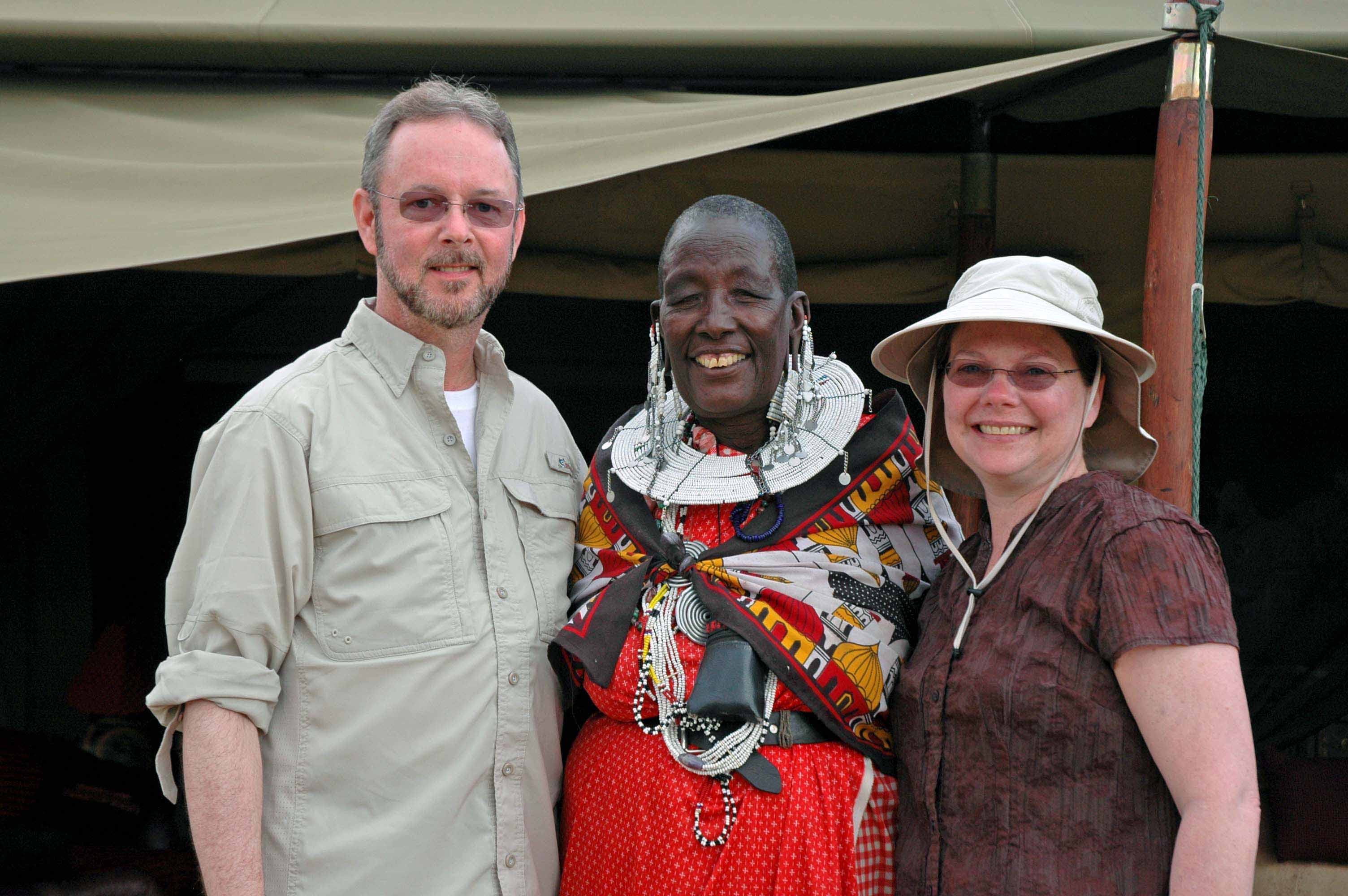
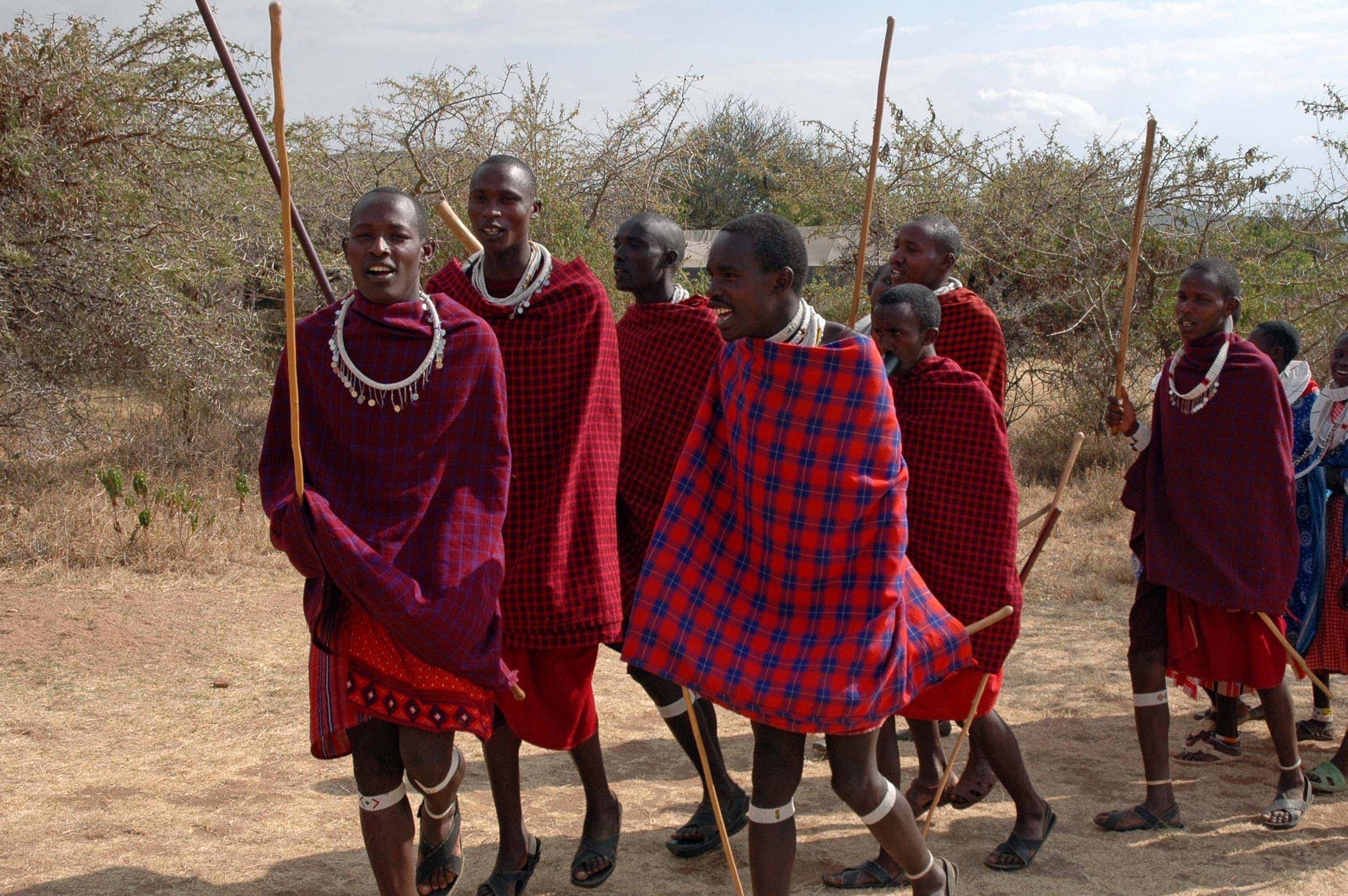
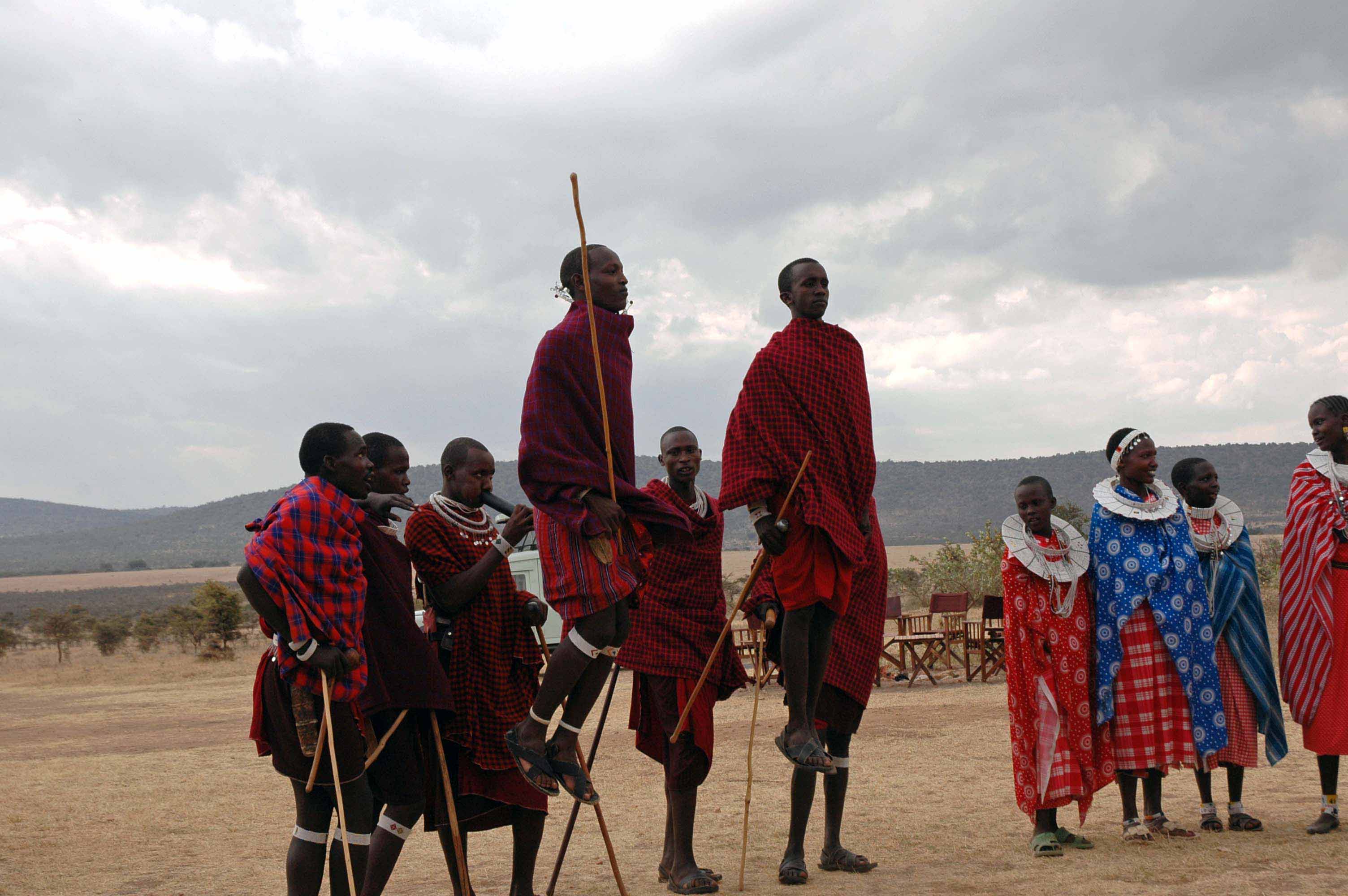
Just before dinner, we were hanging out at our tent (I was writing the day's events in this journal) and a couple of giraffe slowly wandered up to the edge of the camp. For a long while, no one breathed as they calmly watched us, and we watched them. Finally, they seemed to lose interest in us, turned around, and slowly wandered off the way they came.


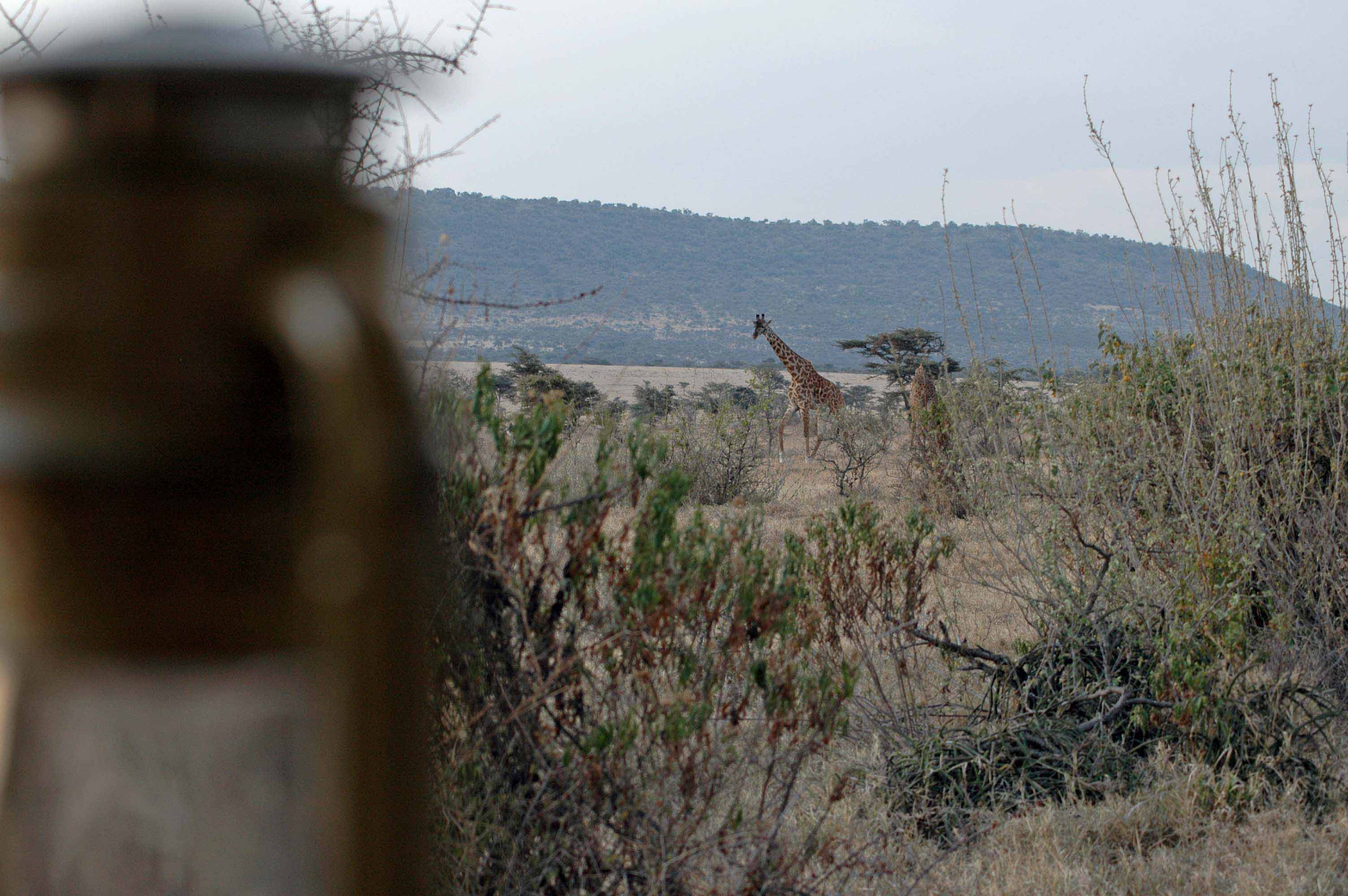
But this day was not over yet. After the sunset, we drove out into the darkness to look for night wildlife. A spotter stood in the middle of the rover with a red spotlight as the driver slowly guided us through the trees and brush. We saw a spring hare, a white tailed mongoose and an aardvark. They all scampered away almost as soon as we saw them, but the aardvark only went a short distance and then turned to stare back at us. He decided we weren't much of a threat after all and went back to digging in the ground for bugs.
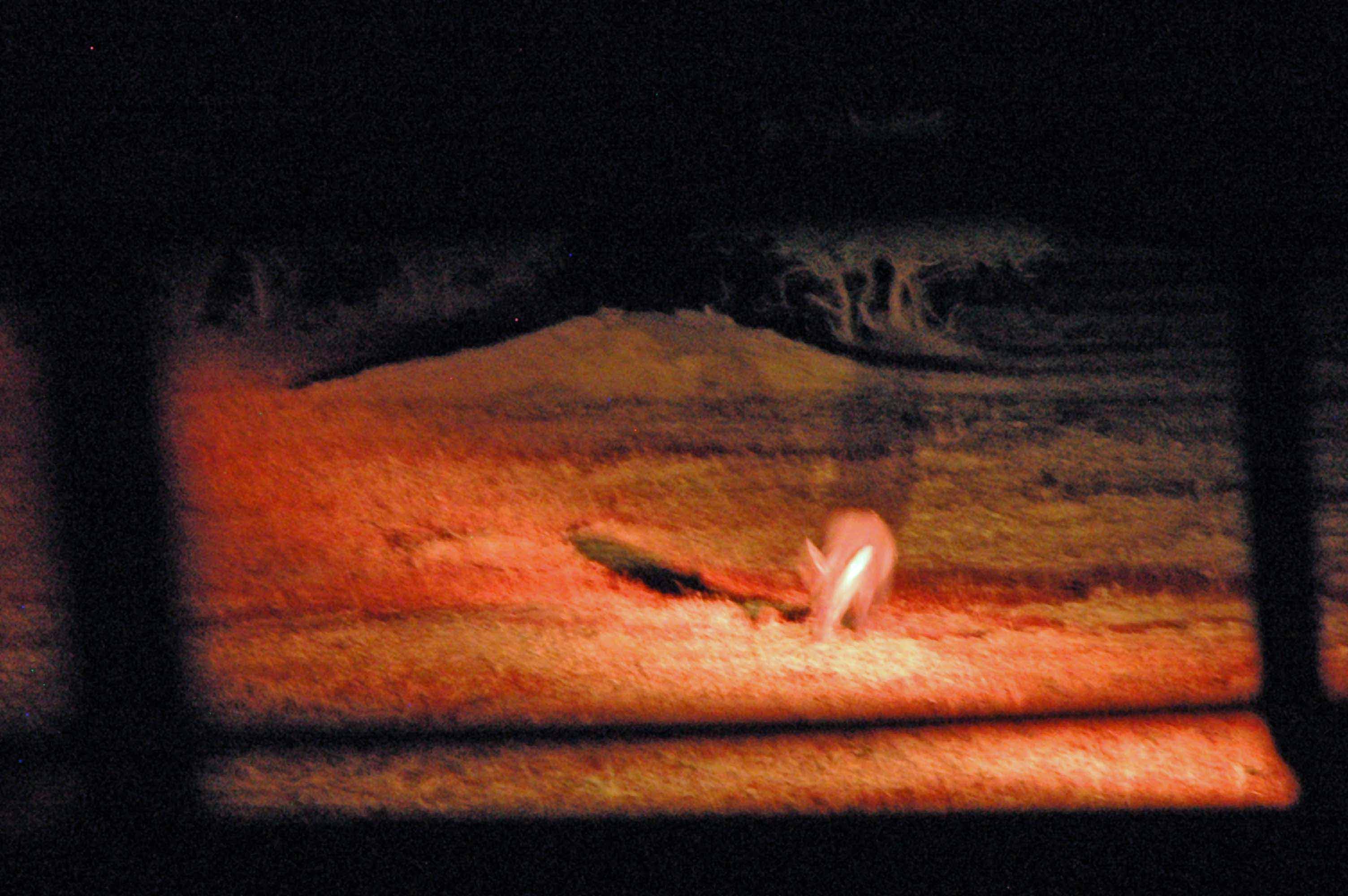
This has been a full day. From the morning hike and wonderful breakfast among the animals and trees and wonder of nature, to the school children working hard to get an education in the face of difficult challenges, to the amazing storyteller so happy to share her life's experiences, to the evening exploration of the night world. So much. So very, very much. We're running on adrenaline and wonder.
Click here for more pictures from Day 6
Day 7 - 8/13/13 - Tuesday.
North Serengeti.
After breakfast,we packed and then drove over to the Masai village to visit the women’s collective. This is an area set up with tables to show their craft-work and a few huts to shelter from the elements. Everything was arranged in a big circle,and we were told that it was customary for people to walk around the circle, looking at everything on the tables, but not touching anything or asking anything.
So we did.
Then, having decided on the things we were interested in, we were told the next step was to make our way back around the circle a second time, simply picking up items as we went.
So we did.
Then, we went to the center of the circle, and the women who's items you had picked came out to discuss the price. Haggling was expected.
So we did.
And we ended up with several very nice hand-made items. A few things for us, but most to give away as gifts.

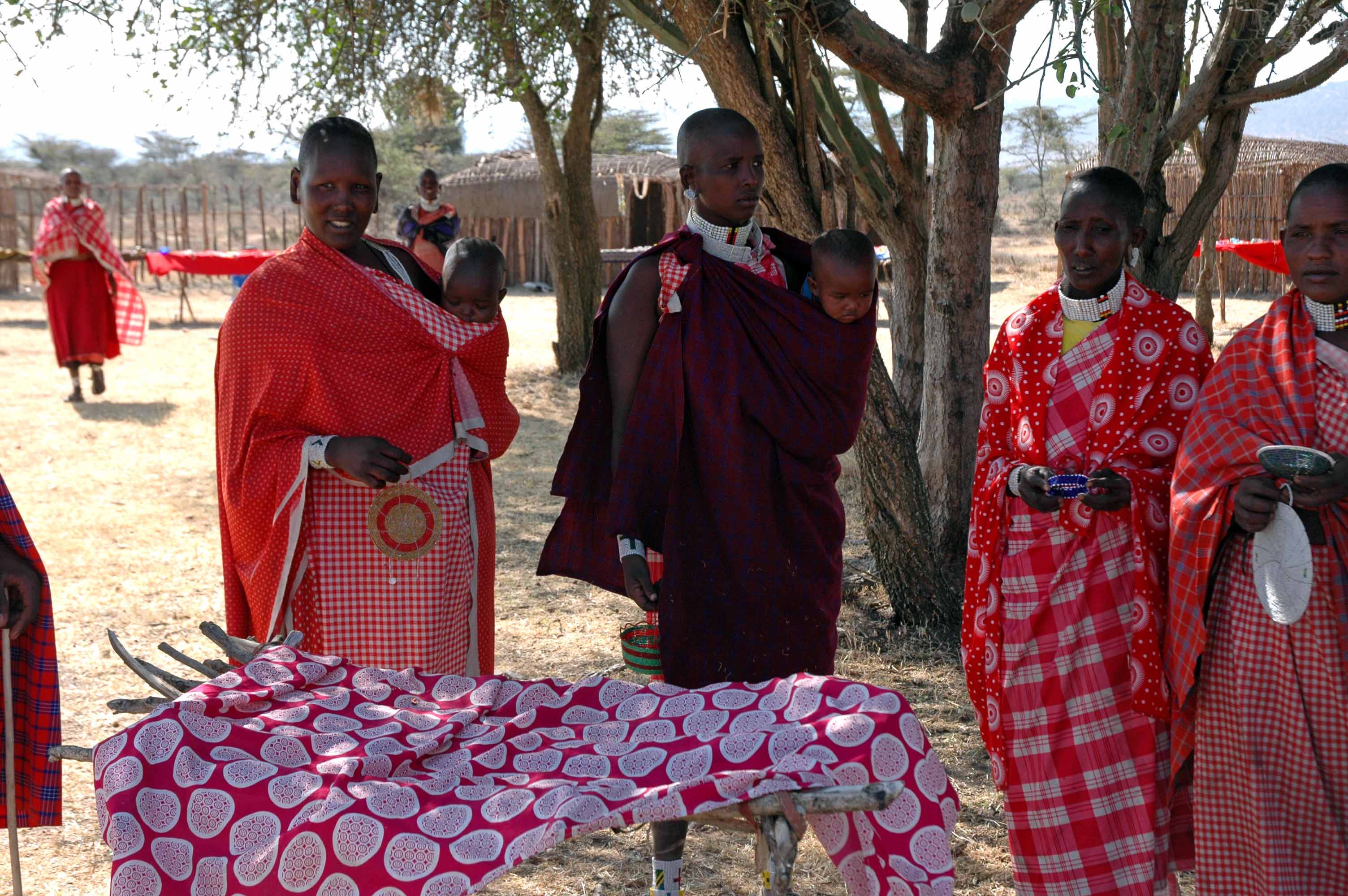

(Click photos to see larger size)
Then, we climbed back in the rovers and drove onwards to the north Serengeti. Along the way, we drove through a small town. It was quiet and dusty. The buildings were all made of block walls and tin roofs. We kept going and finally reached the Serengeti National Park, pausing to watch some giraffes on the way. We drove along through beautiful open plains, seeing Cape buffalo, zebras, elephants and lots of wildebeests. Lots and lots and lots of wildebeests. When they moved as a group, they like to follow each other in a long ling. As many as there were, we were told that we'd missed the biggest part of the migration just days before. It's hard to imagine the plain filled with more wildebeests than we saw. We also saw warthogs, topis, elands, monkeys and ostriches.
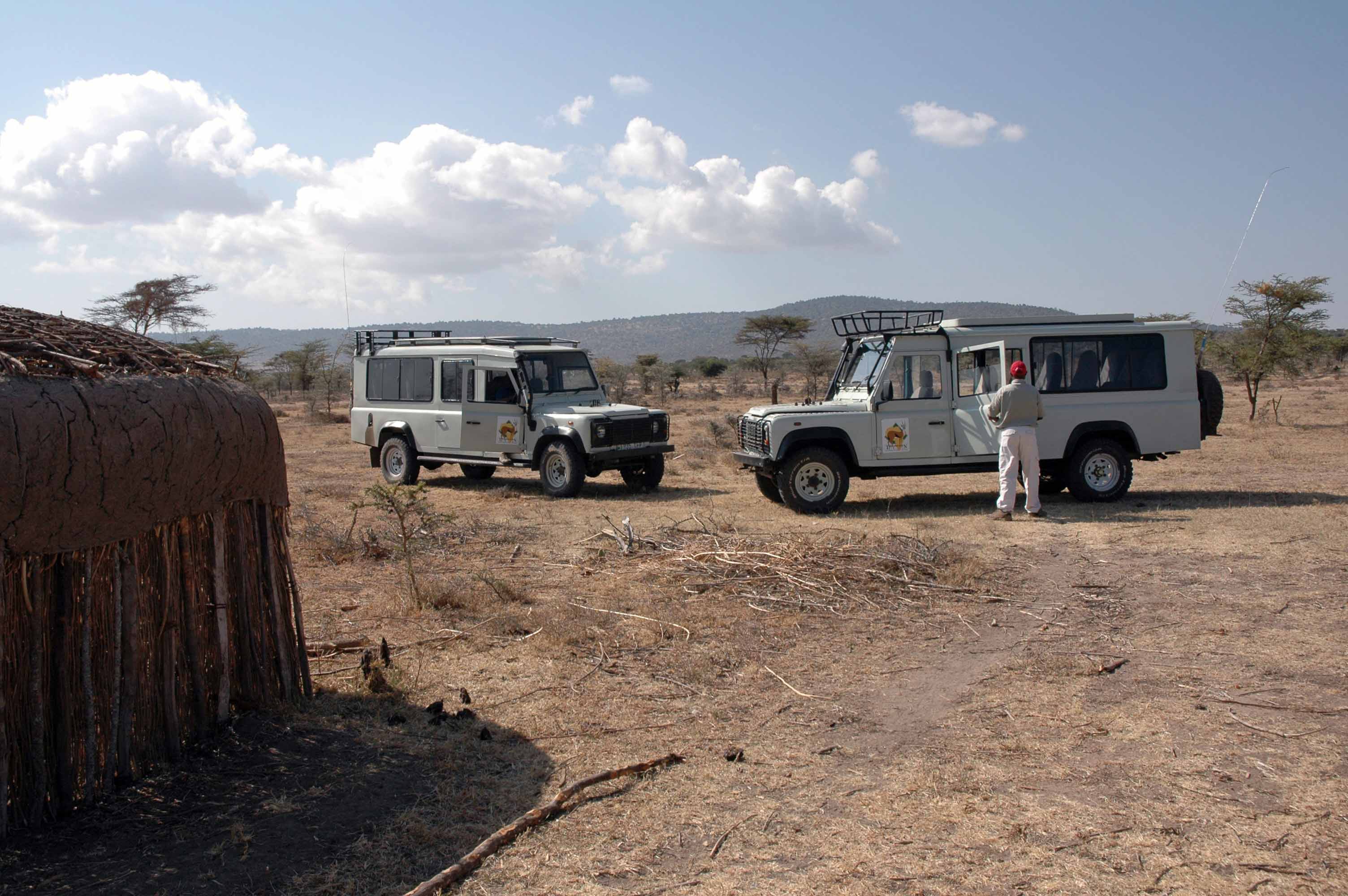


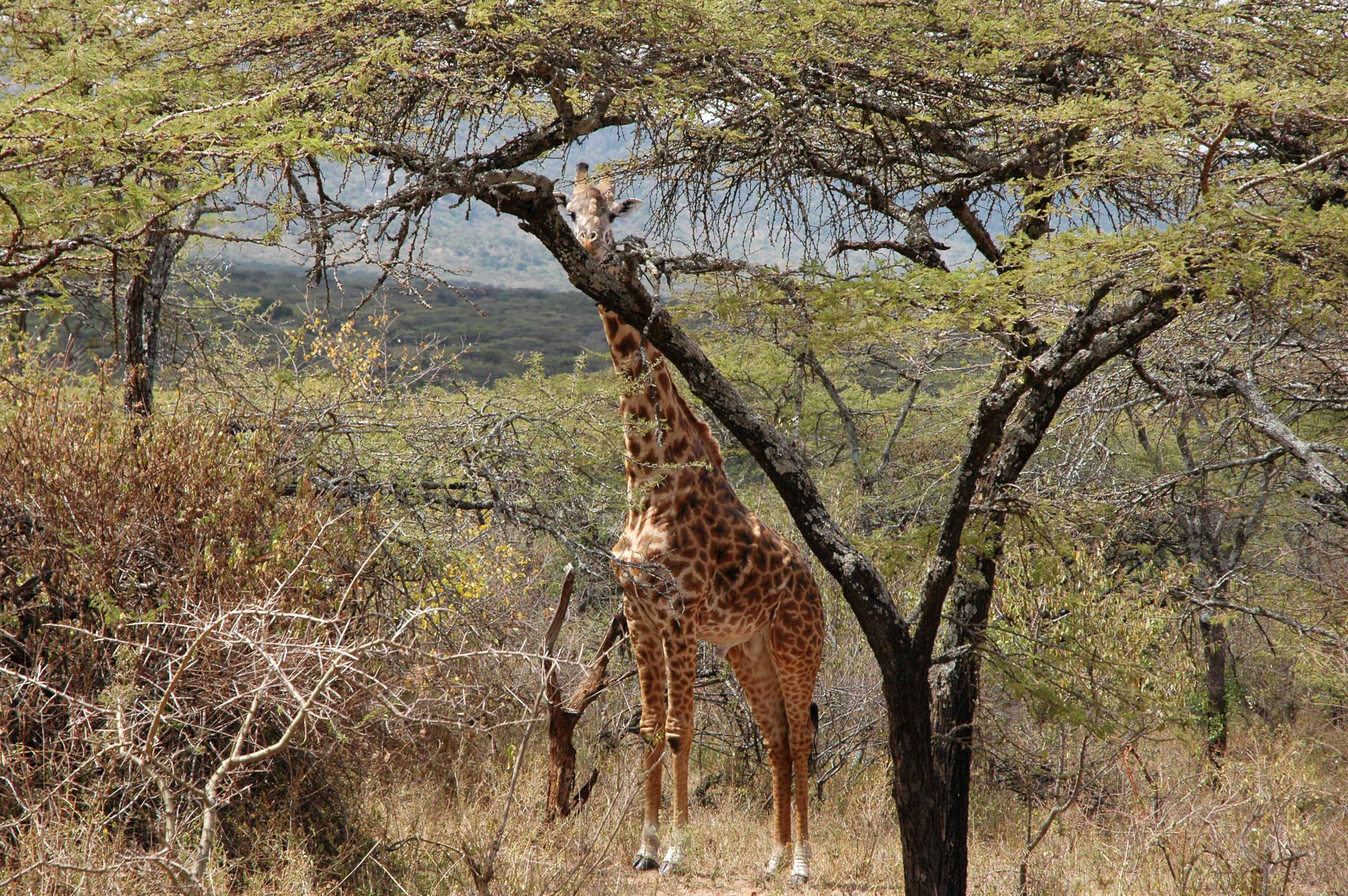
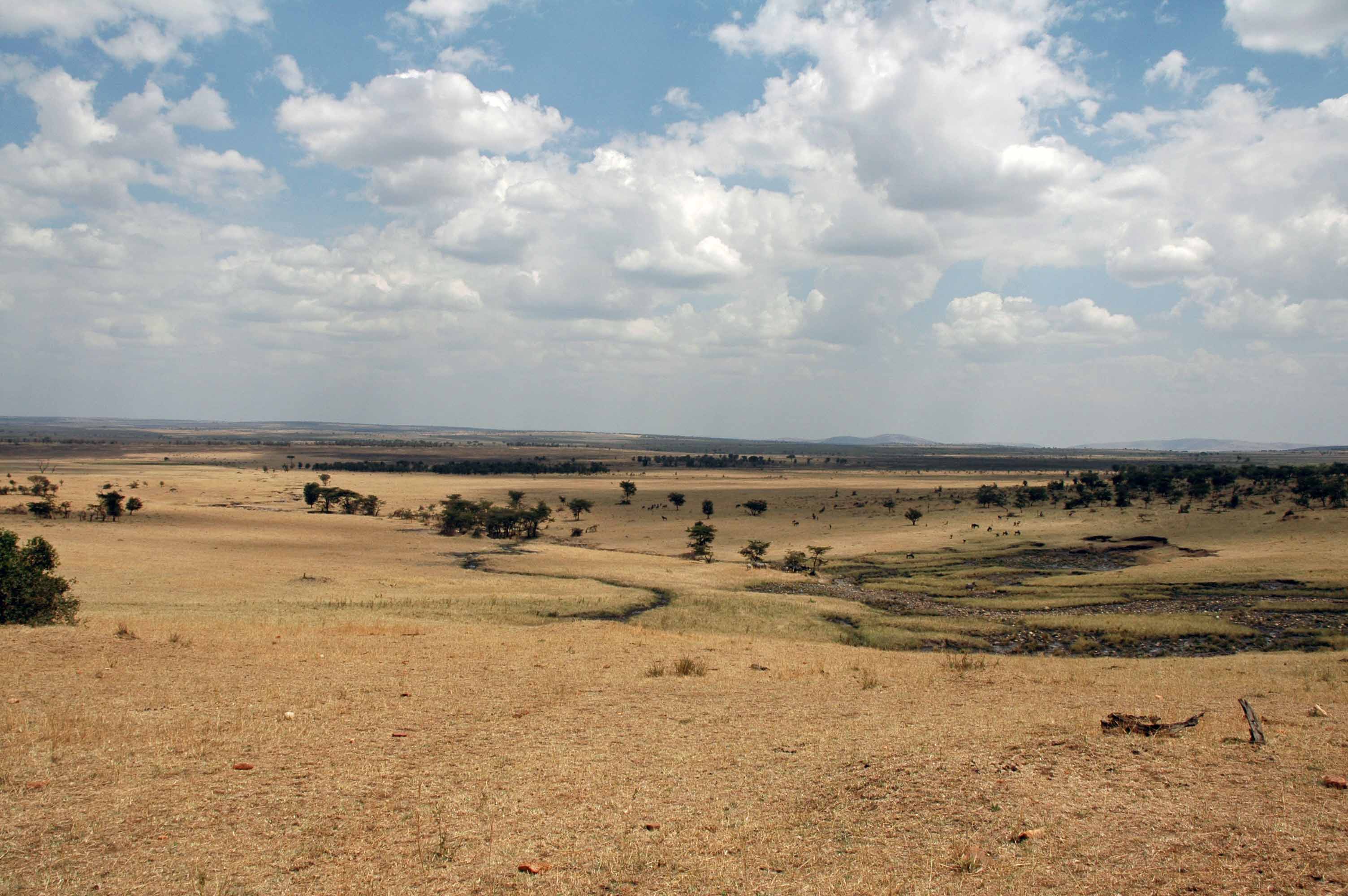



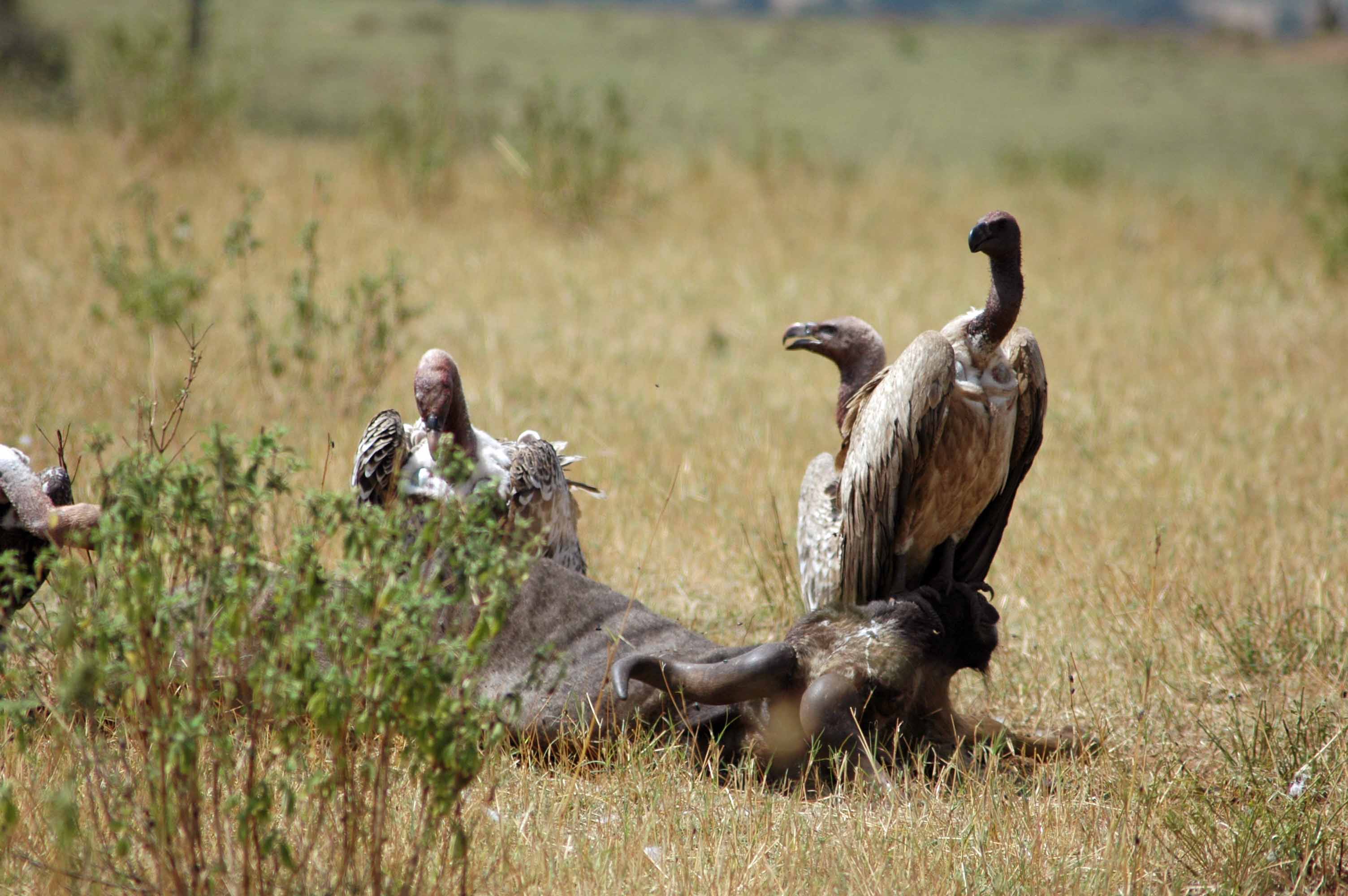
Then suddenly, rounding a small curve in the road, we came upon a mother lioness and her 3 cubs. They were lying down in the shade of a shallow gulley beside the road. The cubs were crawling all over her, biting at each other, tugging on her ears and generally being a handful (paw-full?). Mom turned and looked at us for a moment, decided we were no threat, and put her head down for a brief nap. We stood in our rover, just feet away, watching them for quite a while. We barely breathed. Eventually, the cubs all settled down and fell asleep. Pure magic.
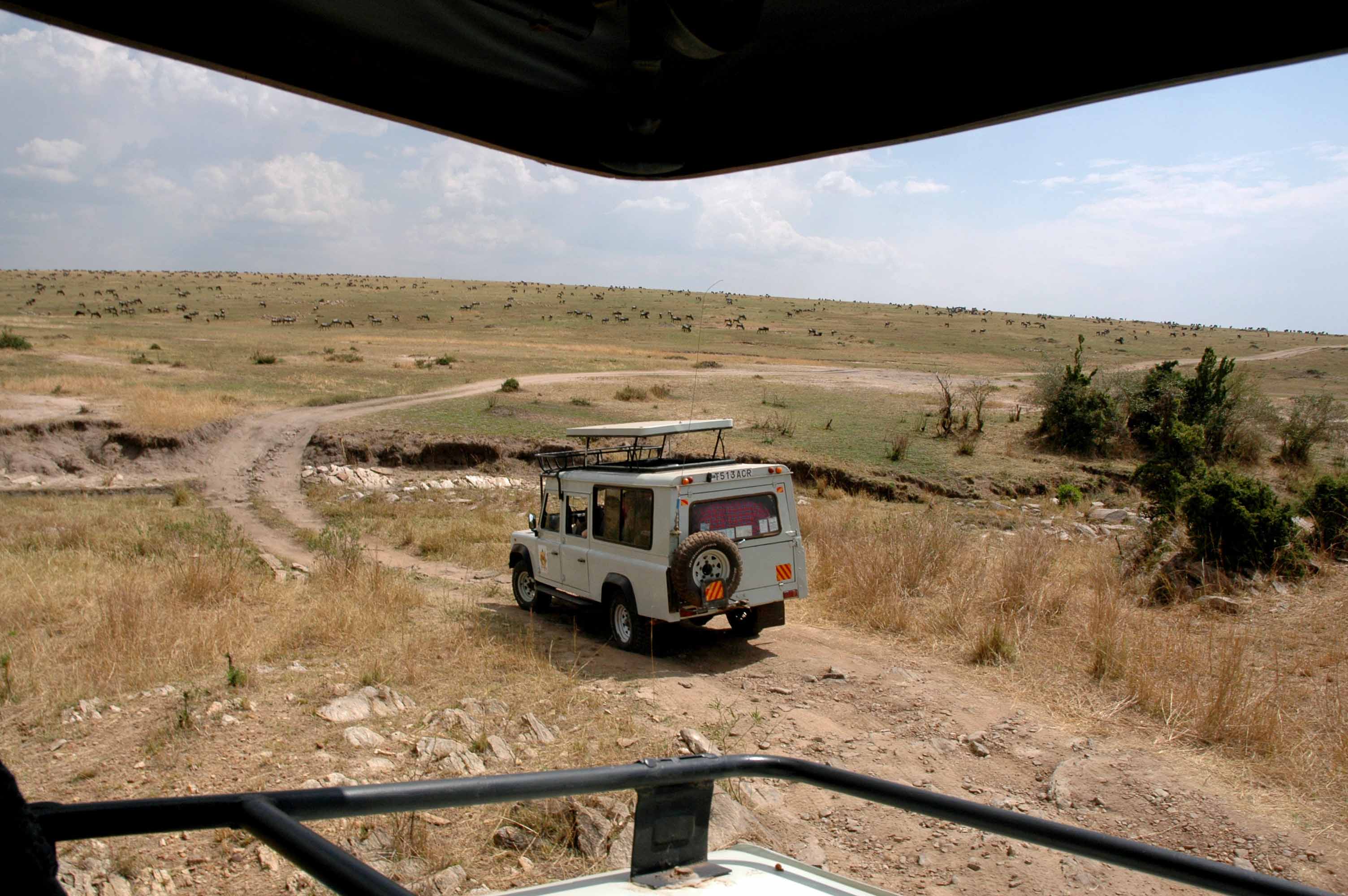
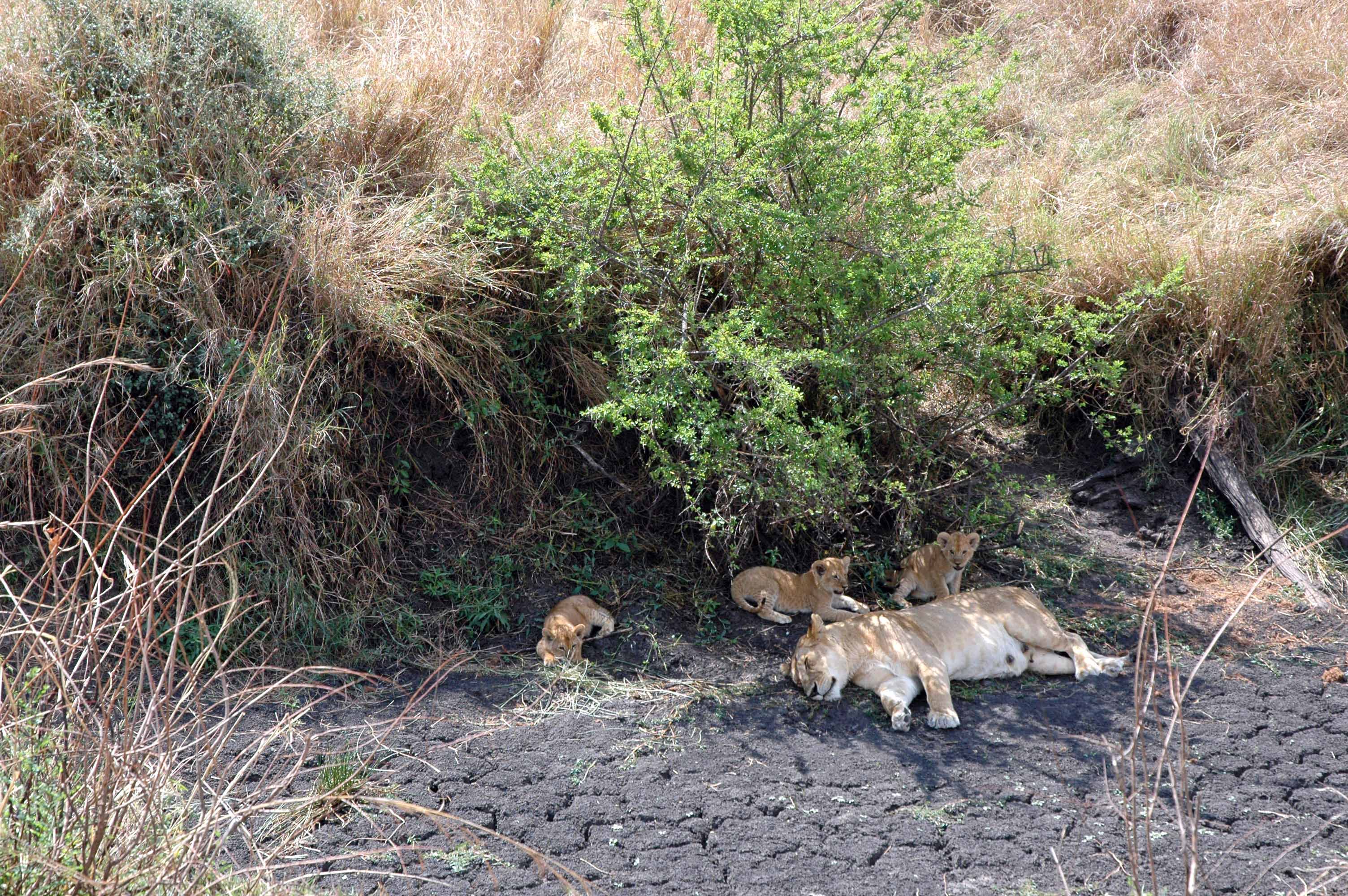
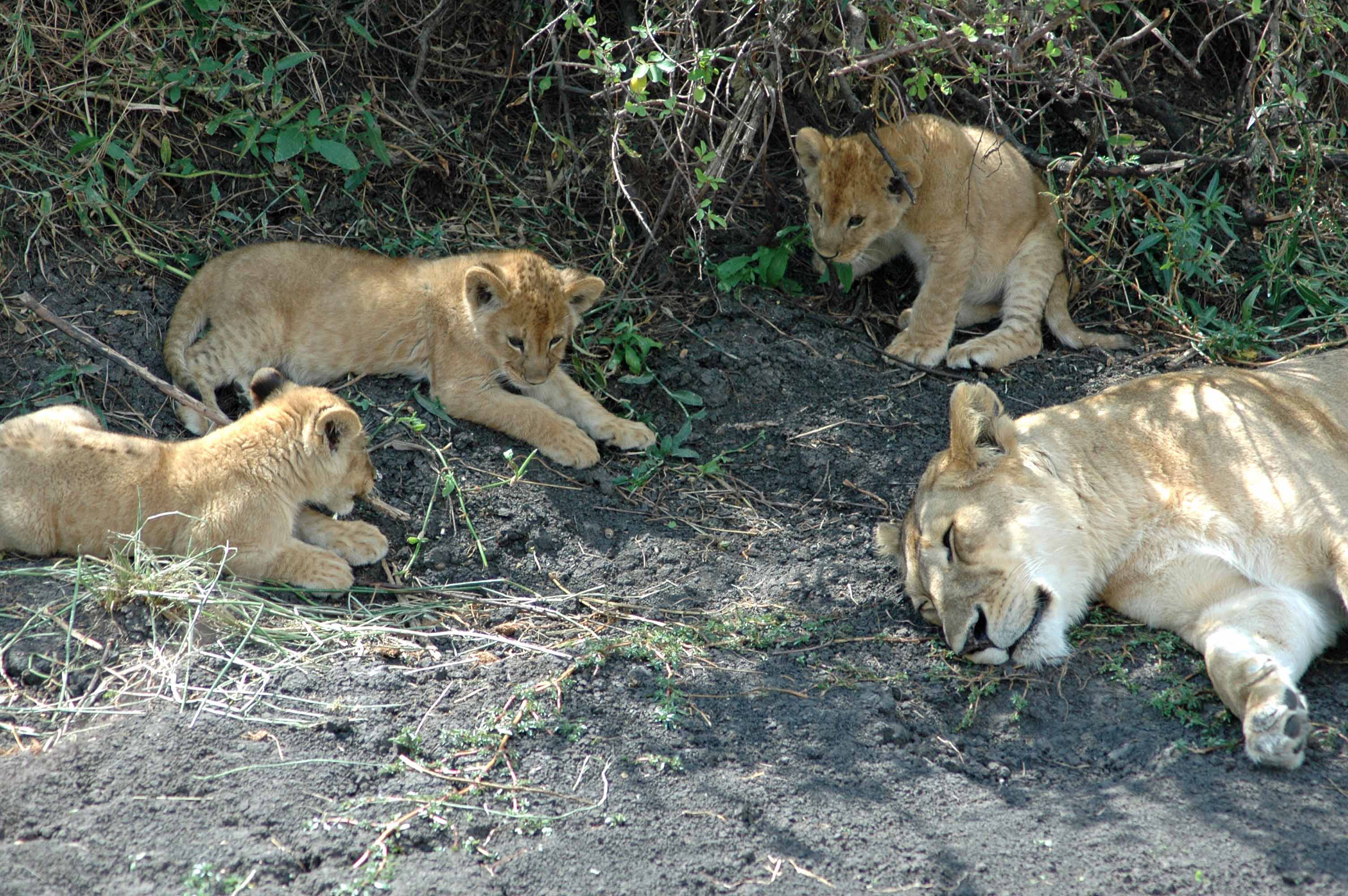

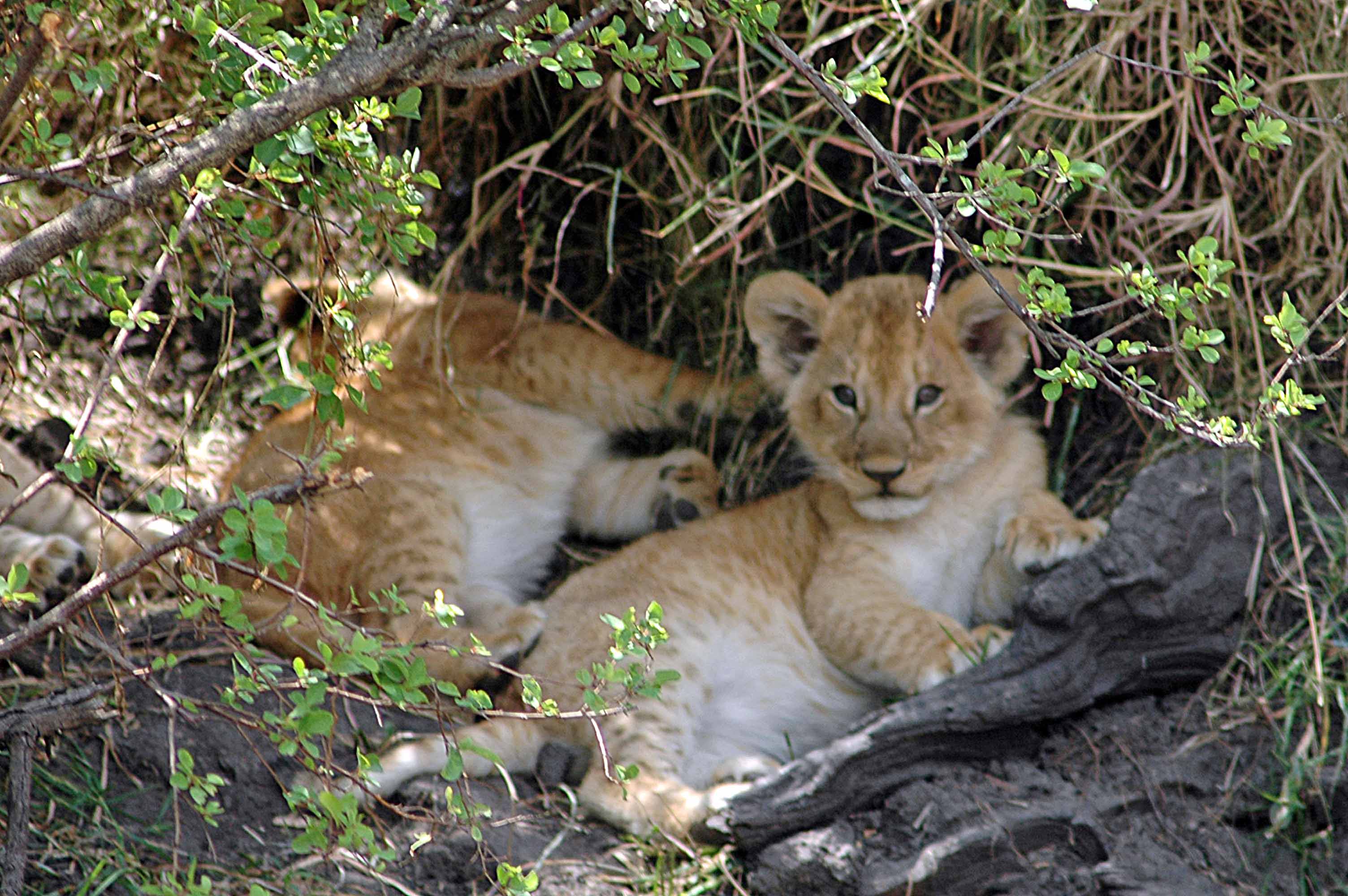

Eventually, reality returned and the magic was past. It was time to continue on. Through the afternoon we saw a number of other animals. Lots of wildebeests, of course. Also impalas, oribis, baboons and buzzards in the top of a tree, patiently waiting for their next meal. We even spotted a tortoise beside the road in spite of his near-perfect camouflage.

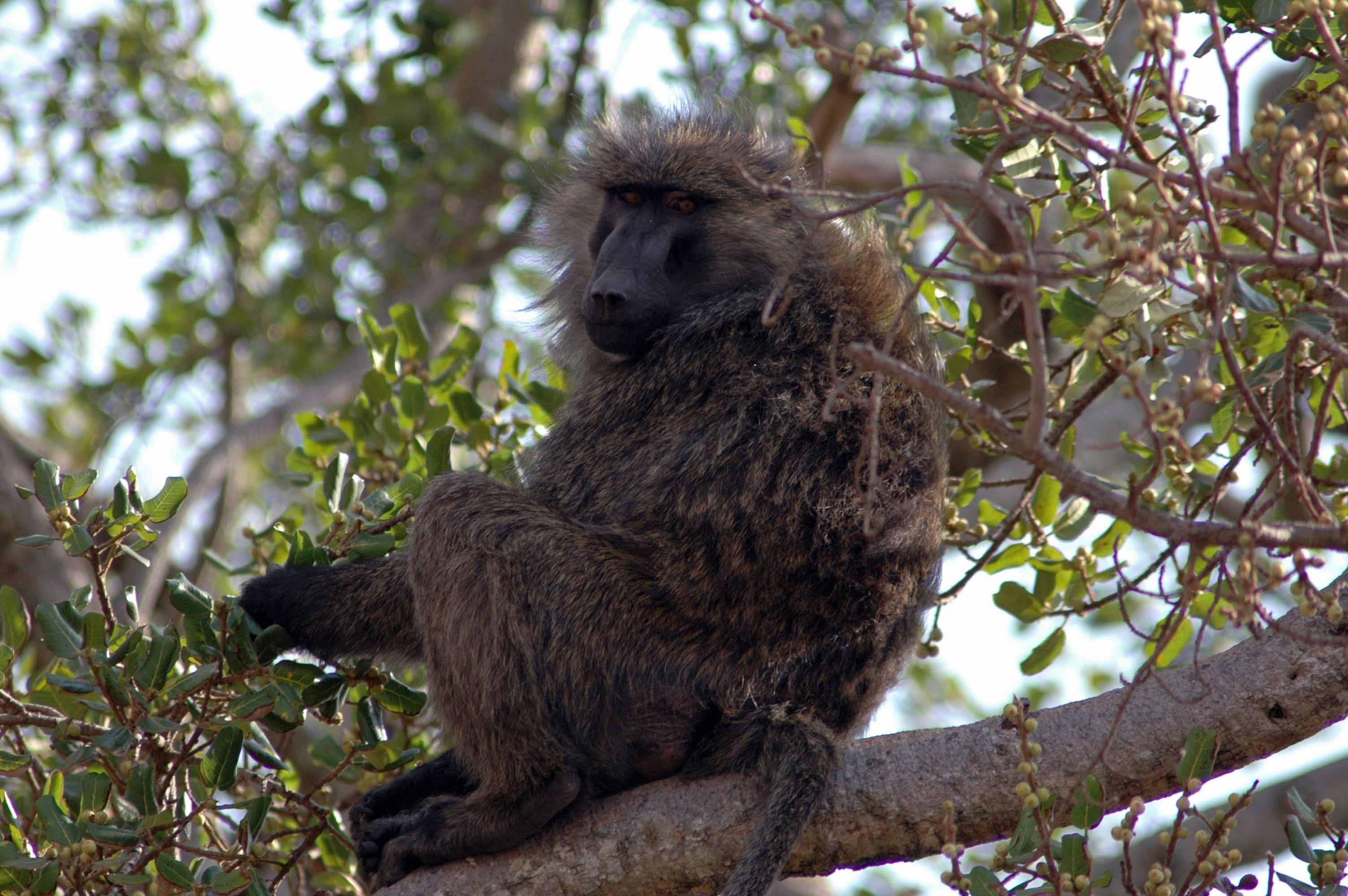

Back at the camp, we watched yet another amazing sunset, had dinner, and retired for the evening, still too stunned by the day to talk much. Are we really here? Is all this really happening?

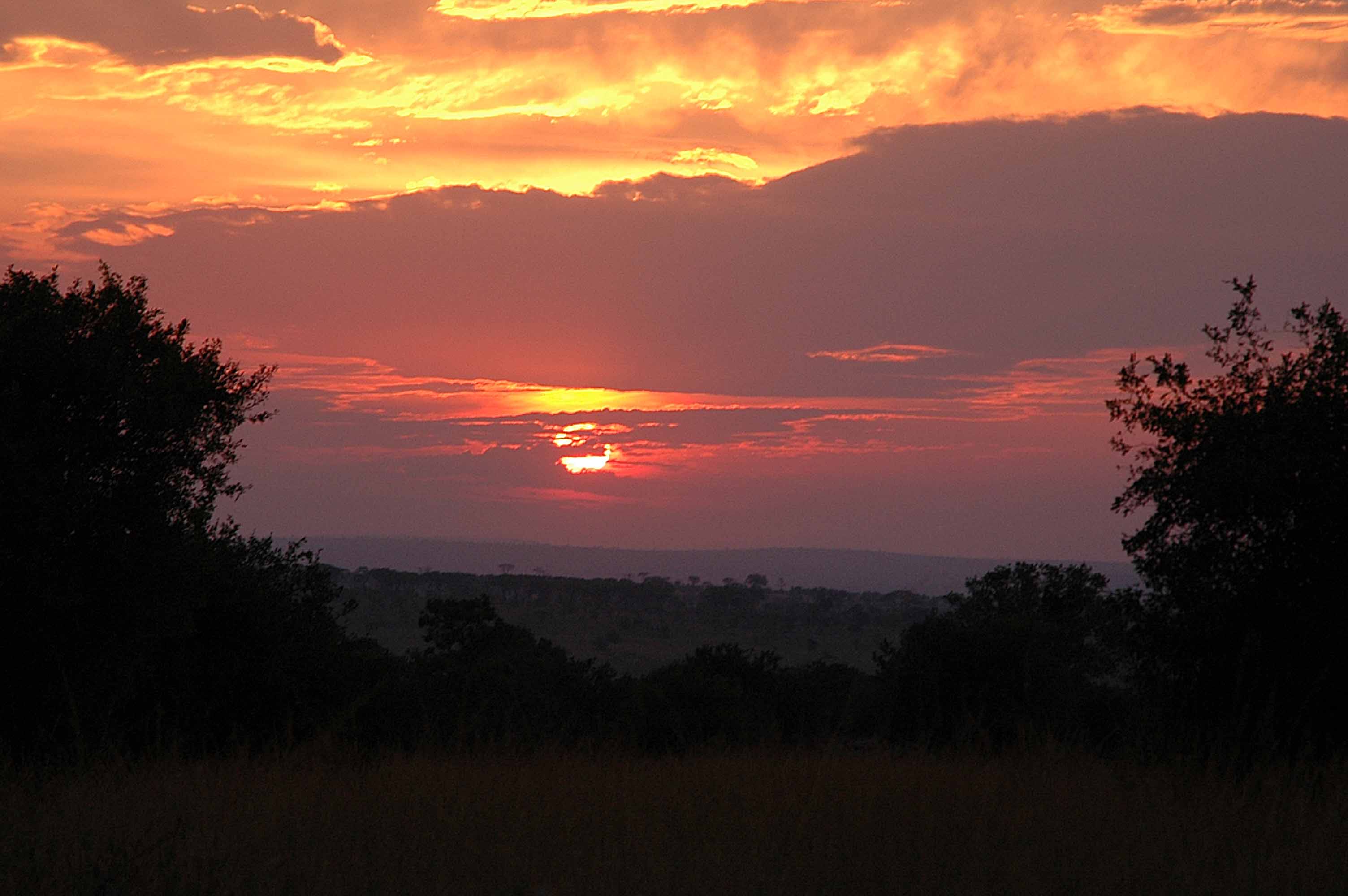
Click here for more pictures from Day 7
Day 8 - 8/14/13 - Wednesday.
North Serengeti.
We spent the day driving around the norther Serengeti. The rules in the Serengeti National Park are that no one gets out of the vehicle. We're fine with that (there's critters here that can eat us). We saw so many animals today. Again. Elephants, warthogs, lots of different birds, a lion, topi, oribi, Thompson gazelles, klipspringer, eland, agama lizard, rock hyrax, white banded mongoose, and hippopotamuses. And wildebeests and a Nile crocodile. And therein lies a story.
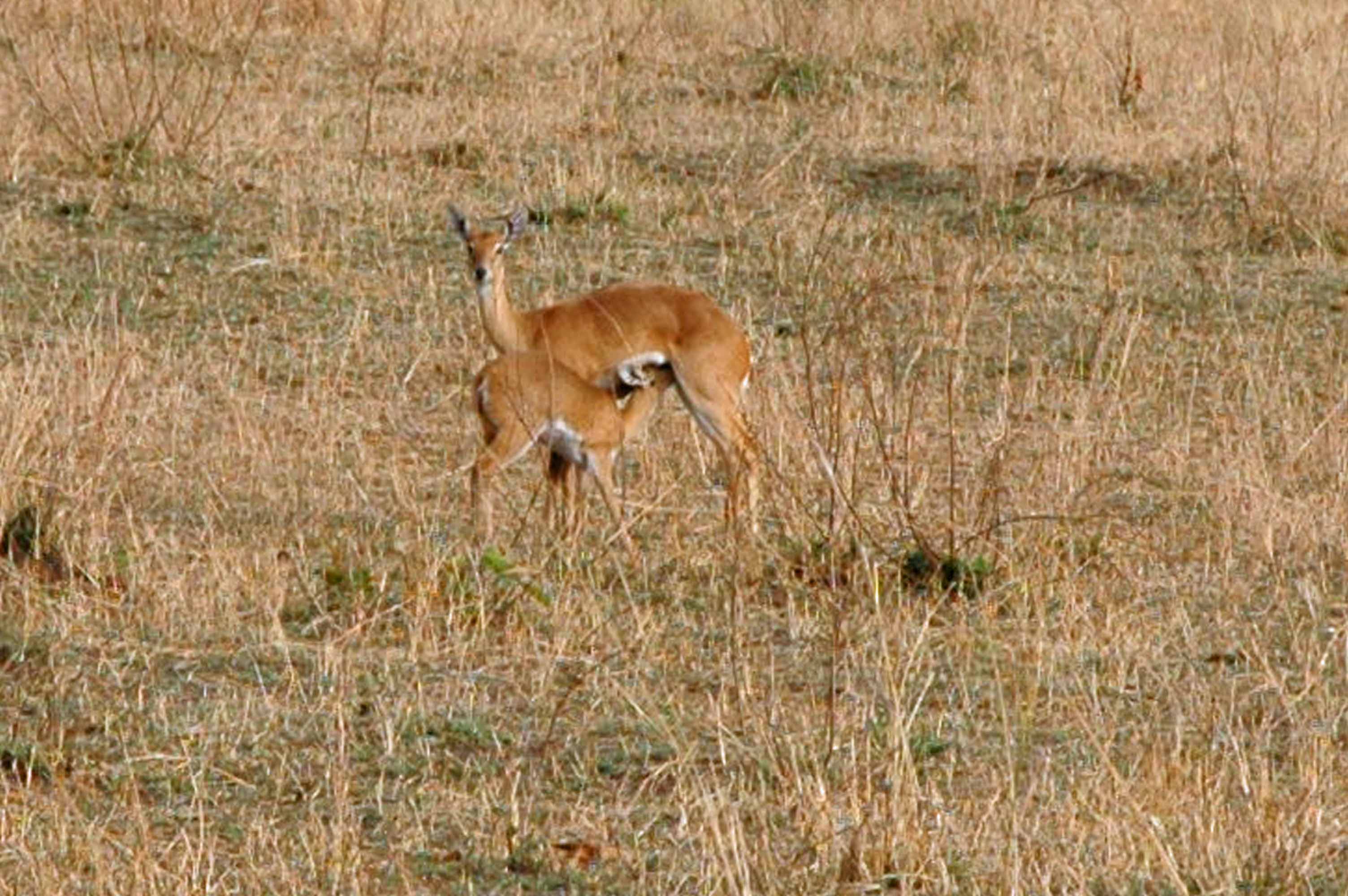
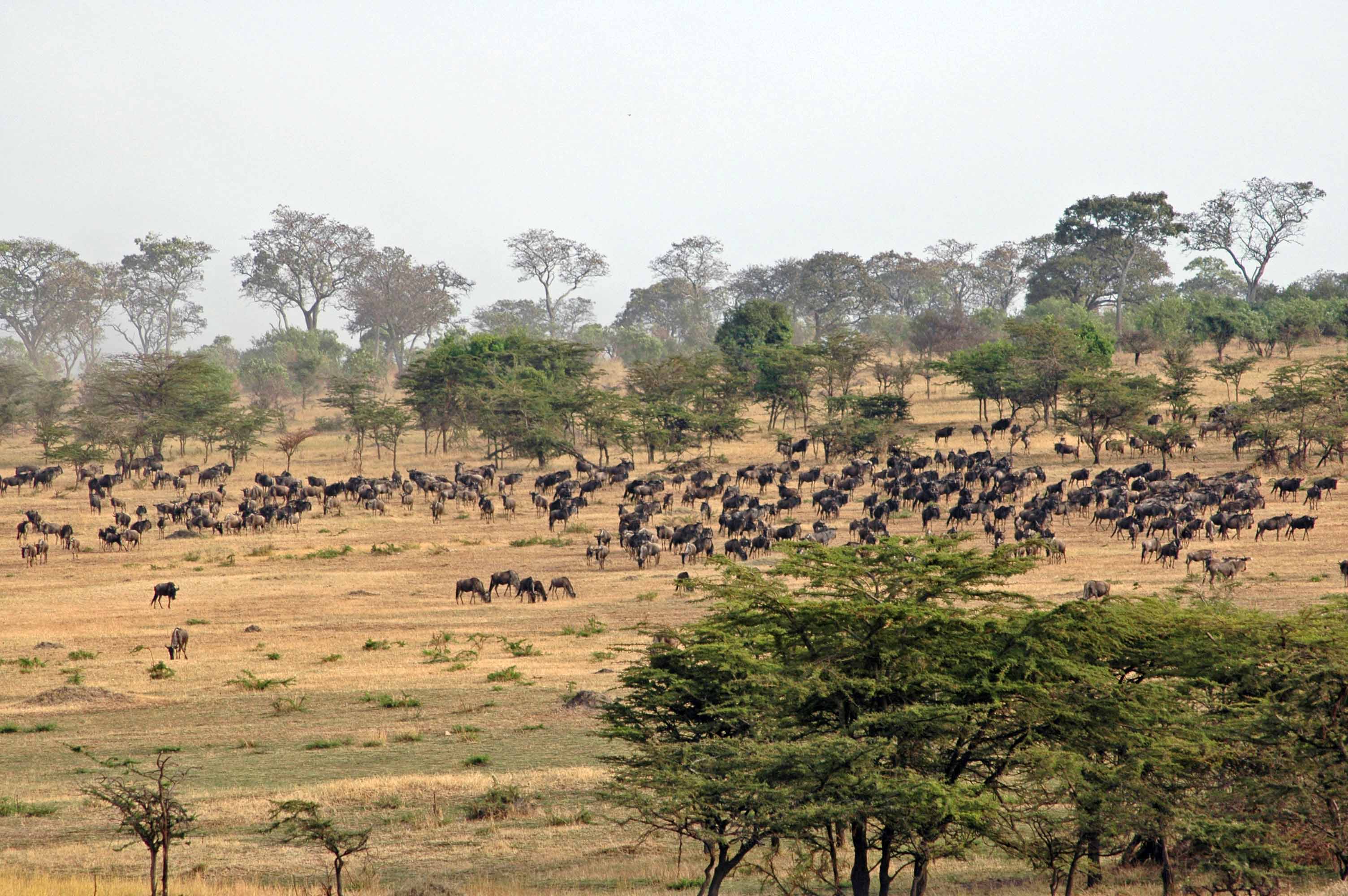


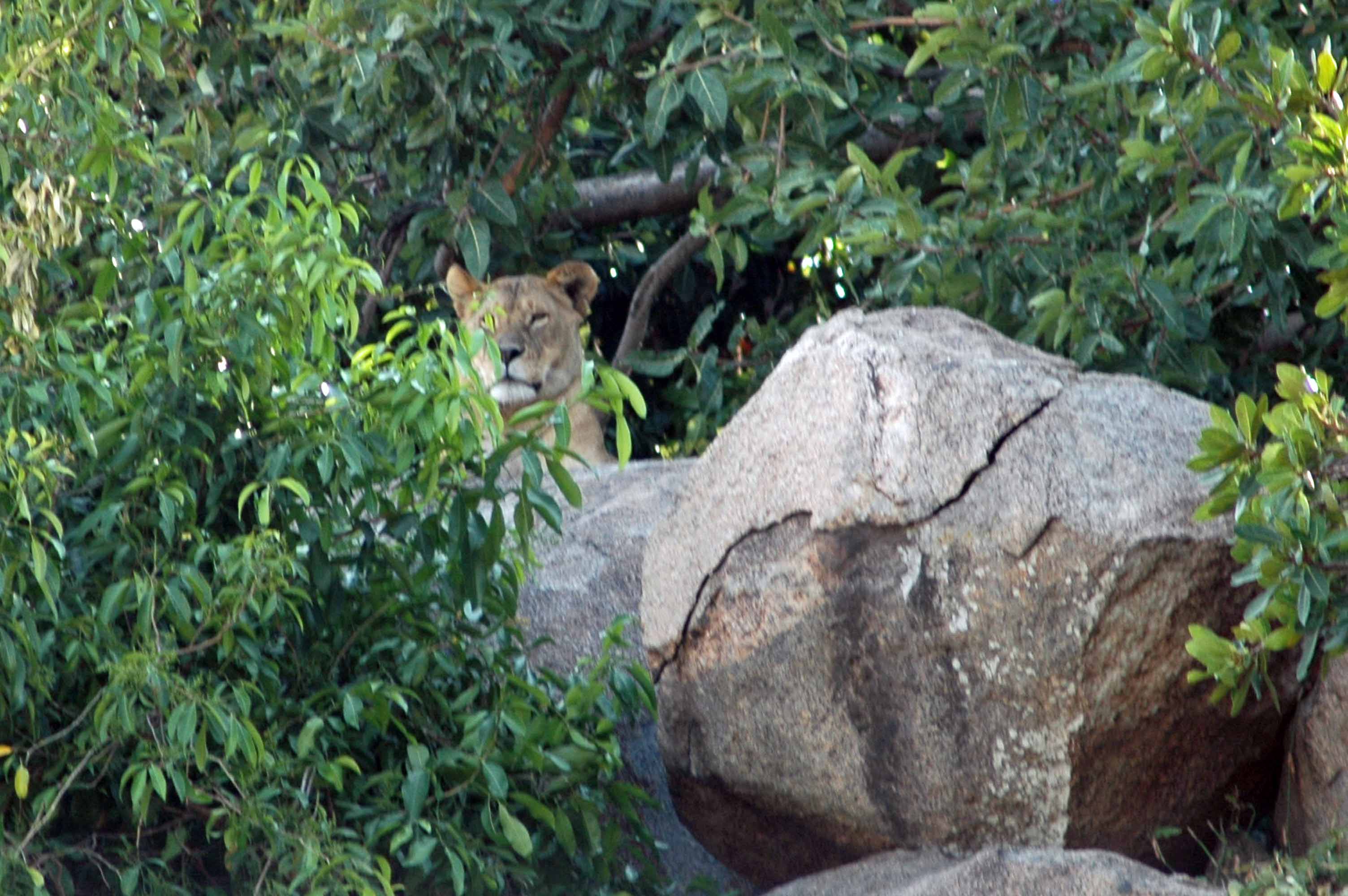
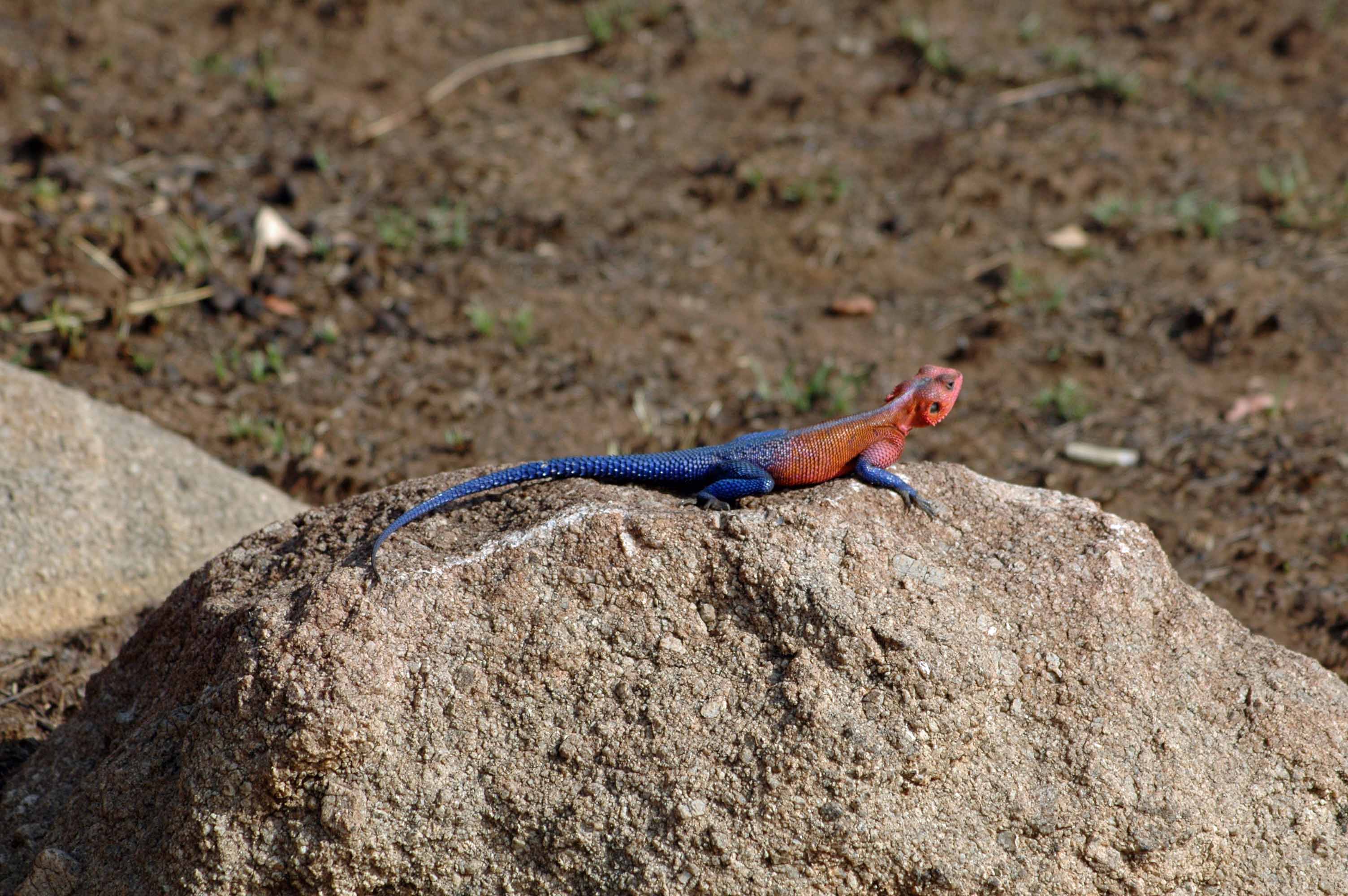
(Click photos to see larger size)
We came to the Mara river, and while we were still a long ways off (half mile?), our guide suddenly became very excited. We got to the riverbank and saw what he was excited about. (This guy has the eyes of an eagle.) Near the opposite bank, a huge crocodile had its jaws around a wildebeest. Now, wildebeests are pretty big. Roughly the size of a cow. But this crocodile was bigger. A lot bigger. It was about as long as a standard school bus. The two of them were locked in this embrace. Every so often, the wildebeest struggled a bit, but the croc seemed content to hold on and wait it out.
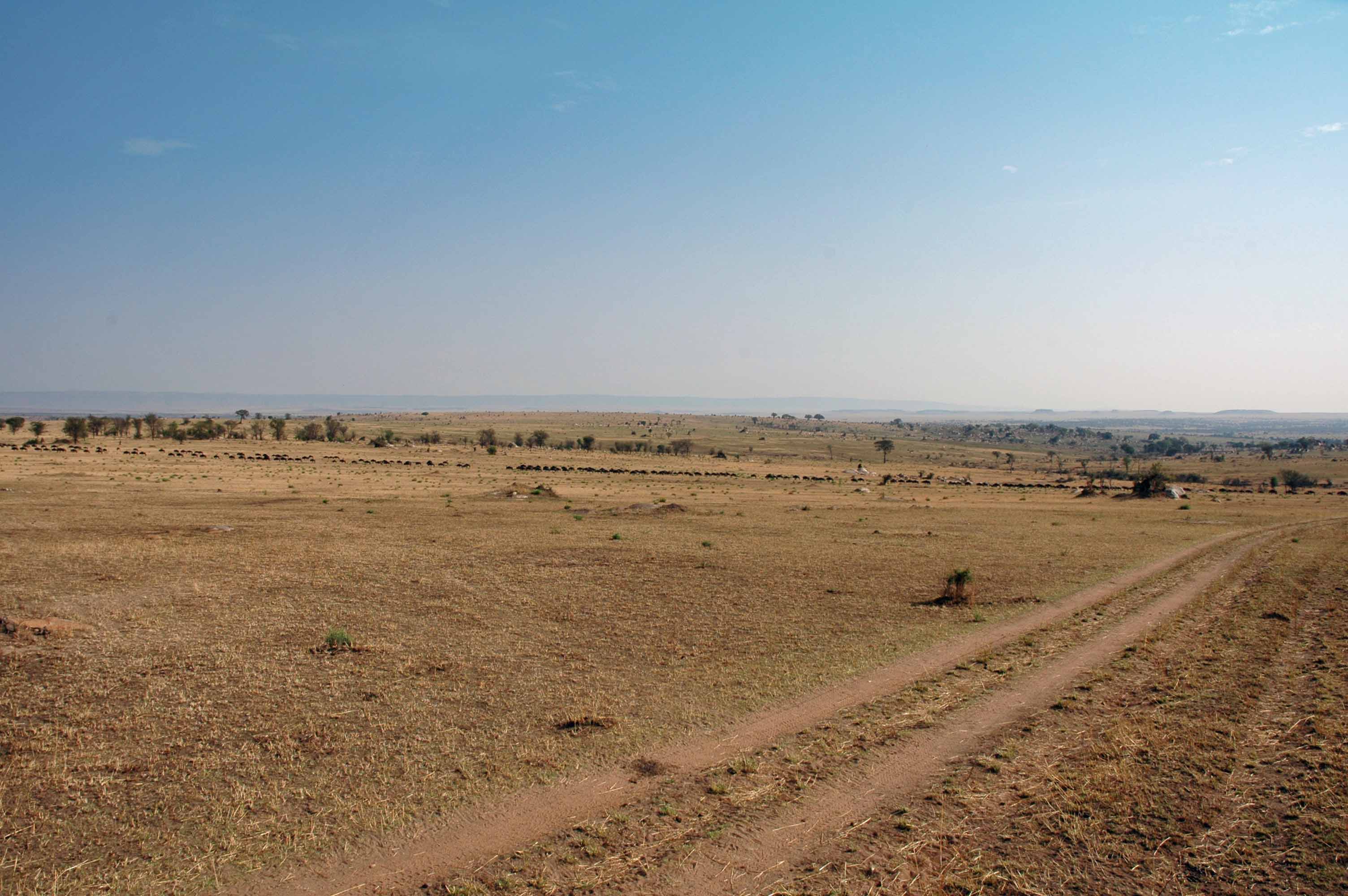
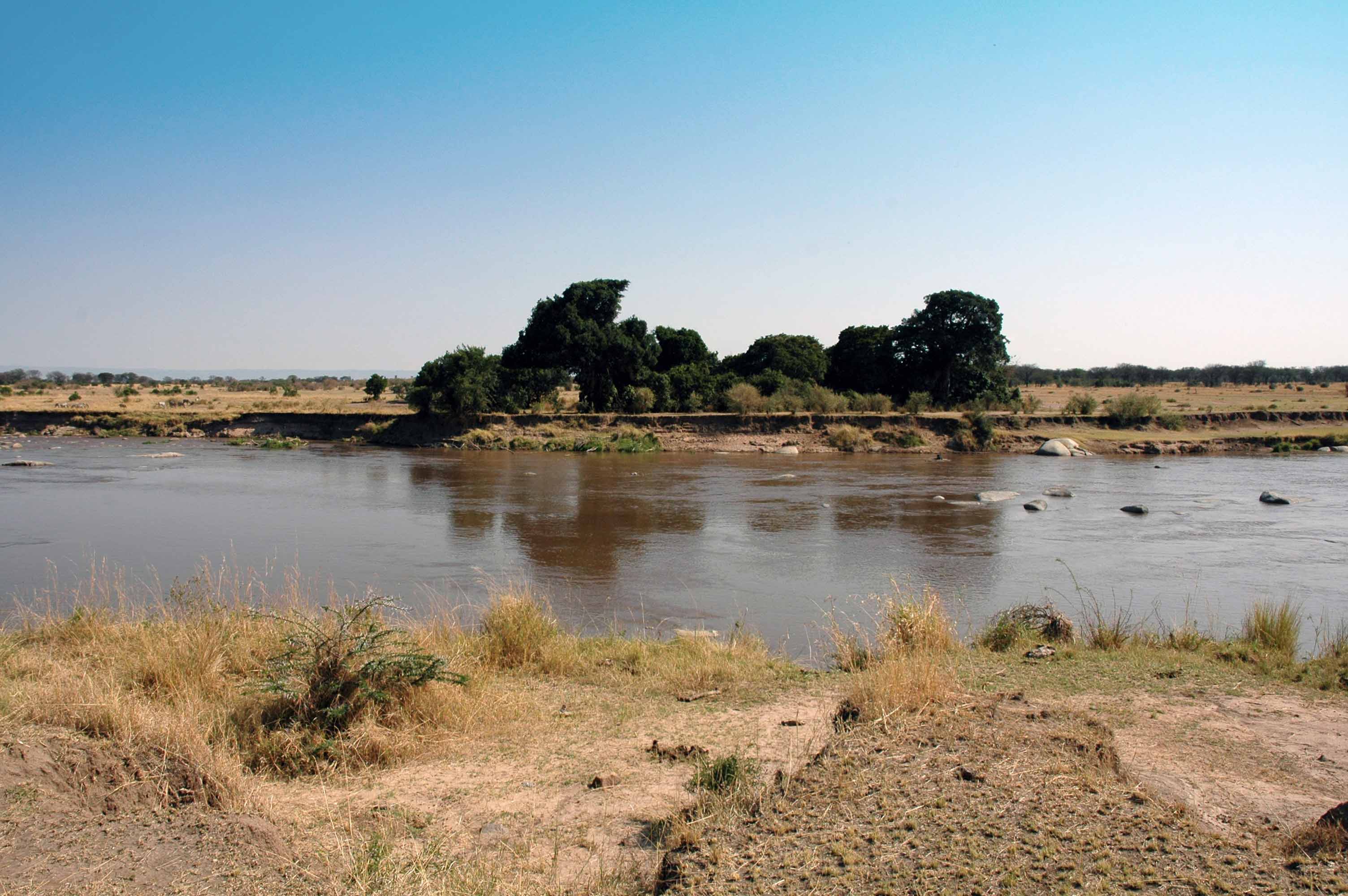

We'd talked about this moment for months ahead of time, trying to prepare ourselves. Putting ourselves into the center of Nature meant we'd be exposed to the raw moments of survival. Moments of life and death. Truth is, Nature can be very rough. Where one animal lives, another dies. Where one animal escapes, another starves. Here we were, face to face with it,and experiencing every emotion we knew we would.
Breathe. Just breathe. In. Out. Breathe. This is the way it is. No one in their right mind likes death. But death is a part of life. And here it was.
And then, something amazing happened. Even Kumbi (our guide) was shocked. The wildebeest made one last desperate thrash, and the croc let go. The wildebeest struggled onto the riverbank, and the croc just let it. Kumbi explained that this simply didn't ever happen. There was no reason for the croc to let go. They were known for holding on forever until their prey succumbed. But this one let go. In fact, there was really no reason for the croc to go after this wildebeest because there were several wildebeest carcases in the river. (When a wildebeest herd crosses a river, some of them just don't make it.) The croc should have just gone for one of the other dead wildebeests. This whole situation was just strange and had our guide confused. And he's the expert. Now, it's true that the wildebeest was badly wounded. Its ribs were likely crushed, and the Serengeti was very unforgiving when it came to injury. If not this croc, some other predator would probably take advantage of the situation.
But... the croc shouldn't have even tried to get the wildebeest. But it did. And then the wildebeest shouldn't have been able to get away. But it did. And we were there with front row seats to see it all. Why? None of this should have happened, but it did. Why? I don't know, and I may never.
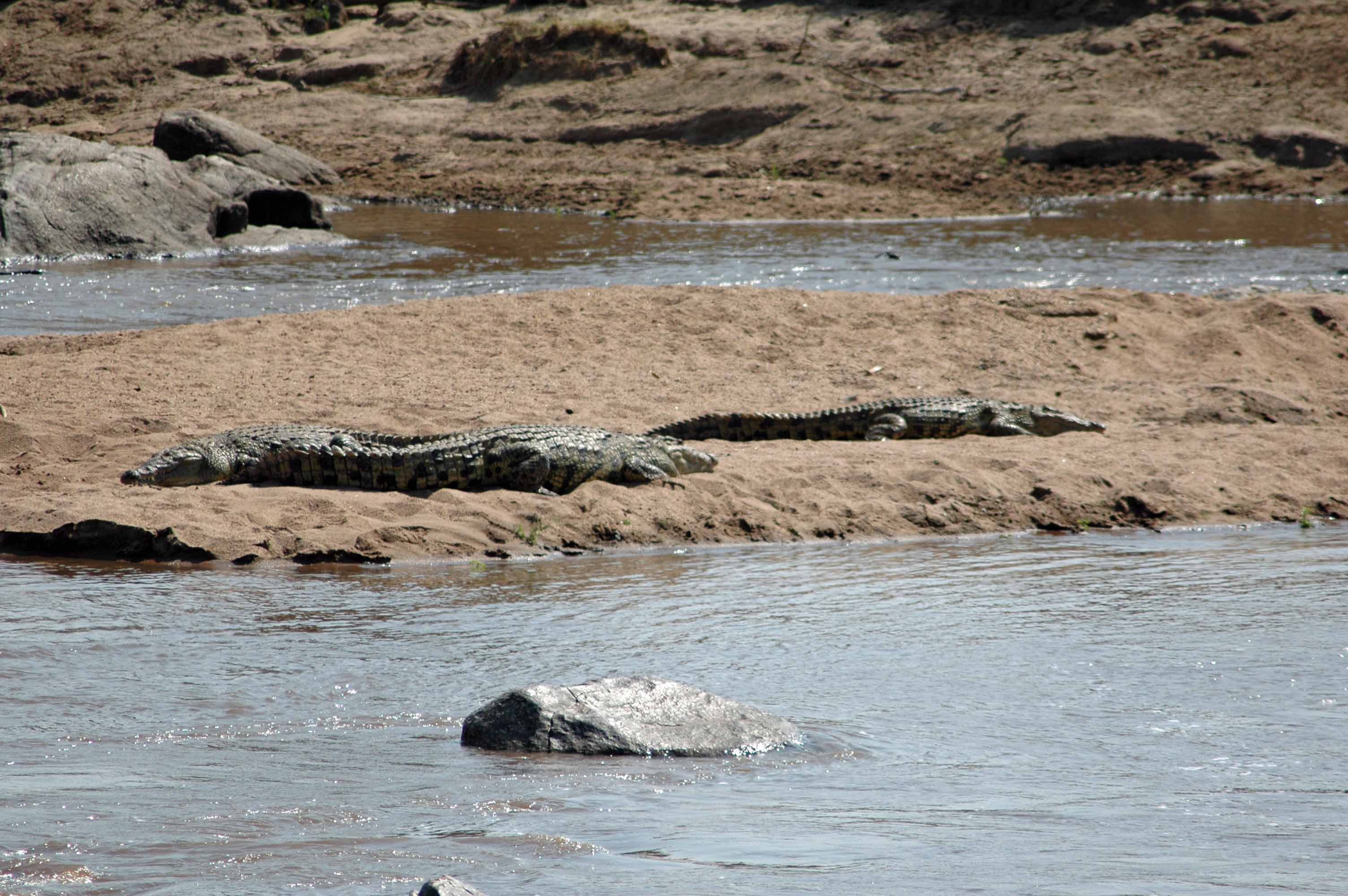


About mid-day we ended up crossing the border into Kenya. There was a border marker at the exact border – a sort of concrete pillar about chest high. There's a line in the top of the marker that, if you look along it, points to the next marker defining the border, many, many miles away. Kumbi asked me if we had markers like this in America. I told him that our border with Mexico was heavily policed, had border crossing points with guards and inspections and drug sniffing dogs and so forth. There were many fences and walls and much talk about building more walls. He seemed very surprised. I also told him that much of our border with Canada was like this one – not really patrolled and open. He accepted this, but was clearly troubled about my description of our other borders. I've always found it fascinating to experience my own country through the eyes of another. This experience, and Kumbi's reaction, gave me pause. What kind of world is it that is so obsessed over building walls?

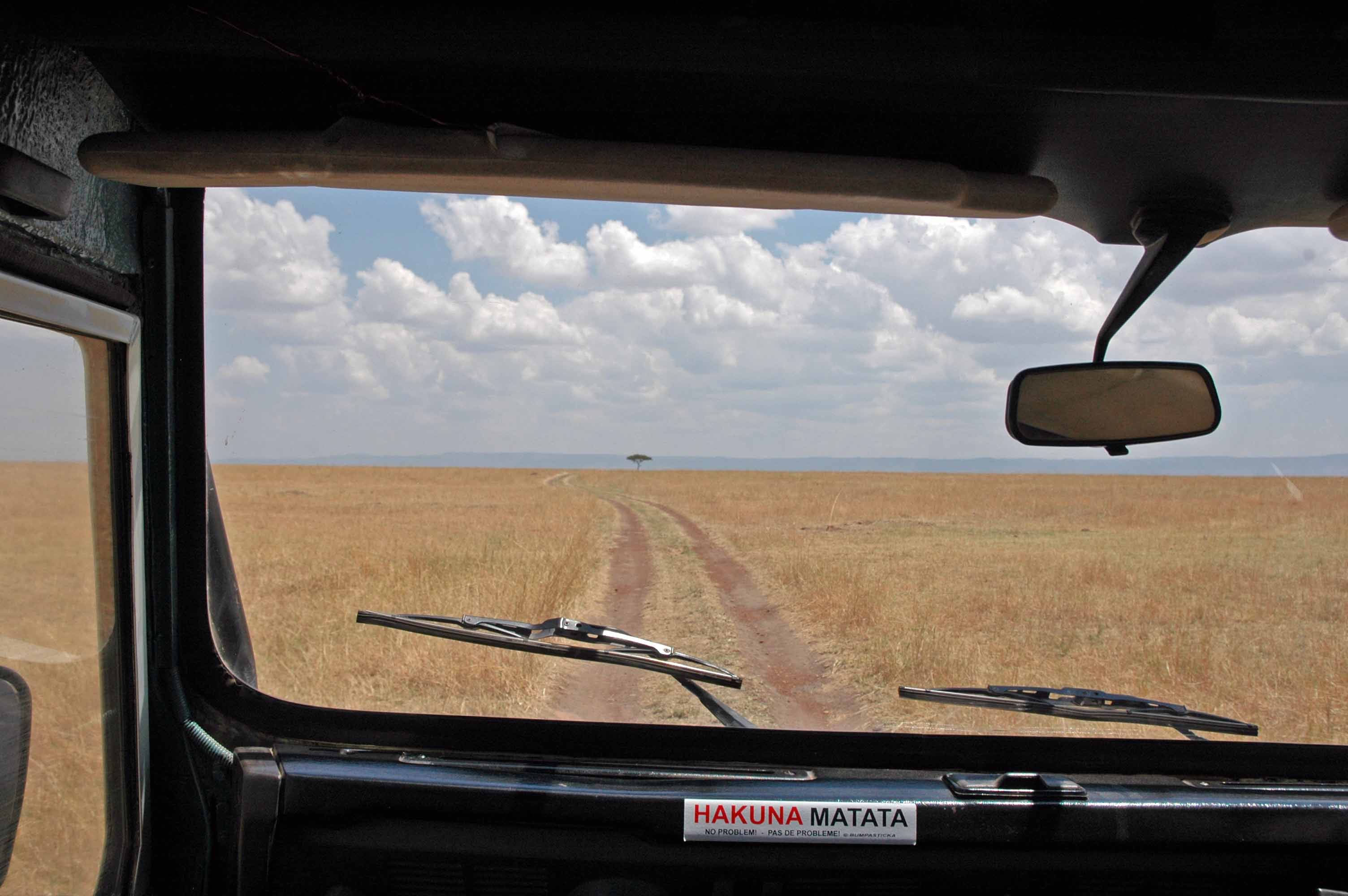

After our visit to the border marker, we continued along the road a short while until we got to a tree (they're scarce here) and stopped. We all got out of the rovers – a nice break to stretch our legs – and suddenly Kumbi and Hashim produced a fantastic gourmet lunch out of thin air. In the middle of nowhere. Well, not exactly nowhere. It all came out of the storage space in the back of the rovers. But it seemed more like a magician producing a rabbit from nothing. Magic. Simply magic. We ate our lunch in the shade of a beautiful tree just across the border in Kenya on the Serengeti plain.
Seriously. Is this real?



After lunch, we helped Kumbi and Hashim load the chairs, tables, and lunch dishes back in the rovers (much to their dismay) and continued on.
We spent the rest of the afternoon looking for big cats, to no luck. We did see some warthogs, wildebeests and elephants, though. Eventually, we made our way back to the camp to rest before dinner. Following our usual evening routine, we sat around the campfire and talked about the day with our fellow safari'ers as we watched another great sunset. We're really enjoying spending time with them. We're in different rovers during the day, but have our meals and campfire time together. We are seeing Africa first hand, but every evening we get to see it again through their eyes, which just makes the whole experience that much better.
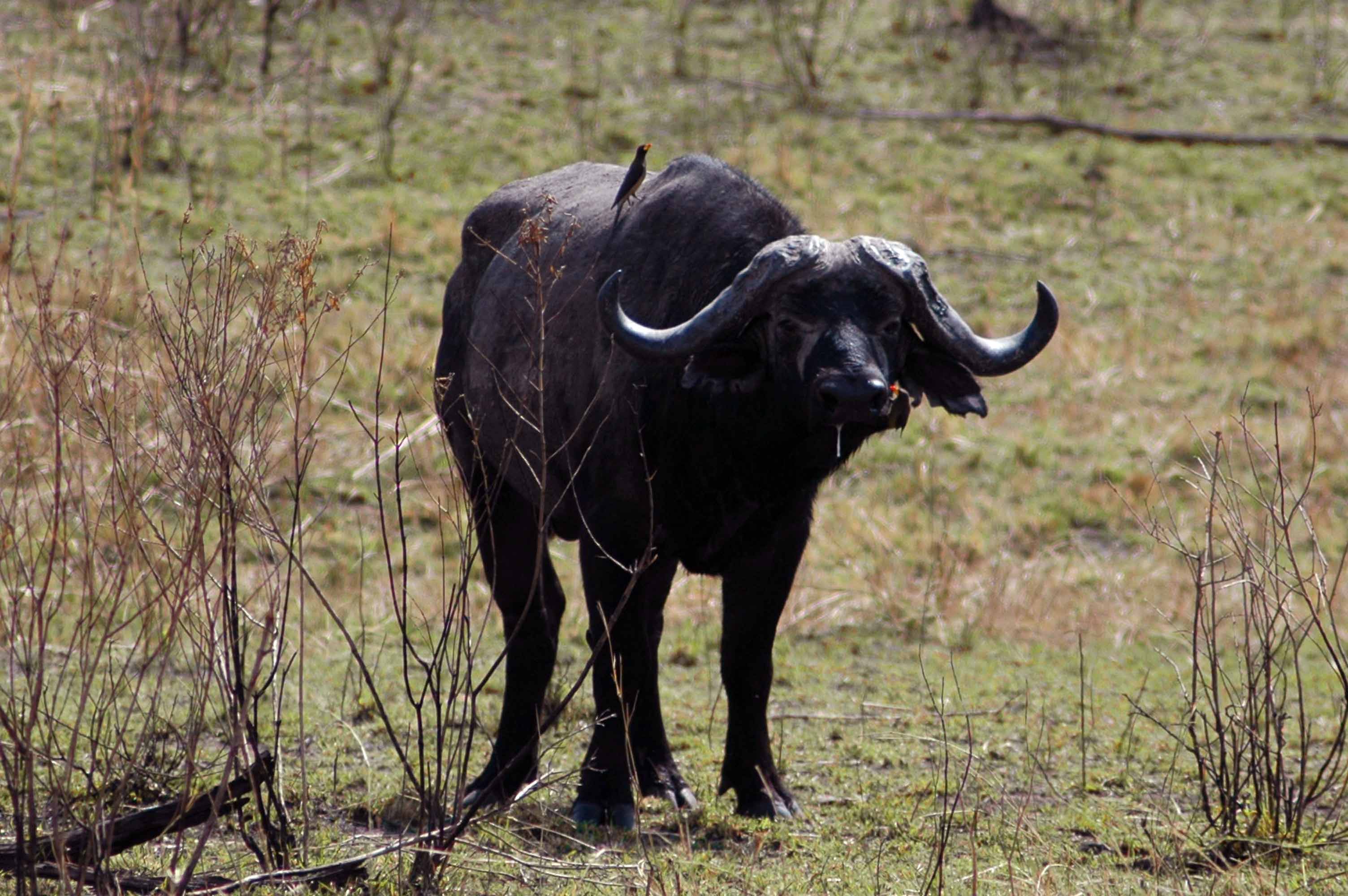


We're really getting into the rhythm and cadence of the safari. We drive to a new place one day, stay and drive around the area the next day. Then the next day we're on to the next camp to do it all again.


Click here for more pictures from Day 8
Day 9 - 8/15/13 - Thursday.
Central Serengeti.
On the move again. Up with the sun, breakfast, packed and on the road to the Central Serengeti. There wasn't much to see along the way today. We stopped in a town to buy diesel for the vehicles. We did see a herd of 8 giraffes a while after leaving town. We arrived in our next camp in time for lunch. It's much hotter here.
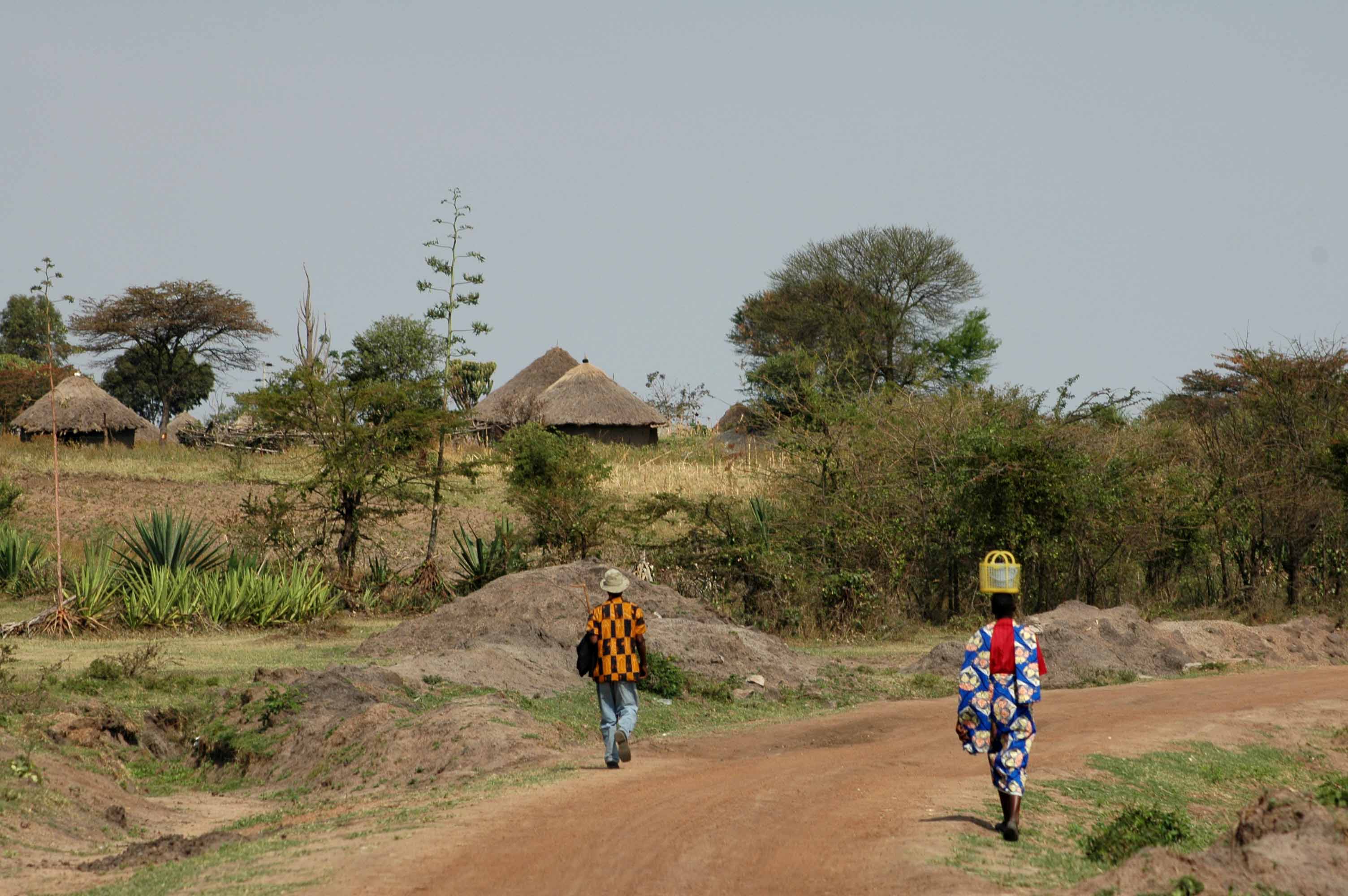

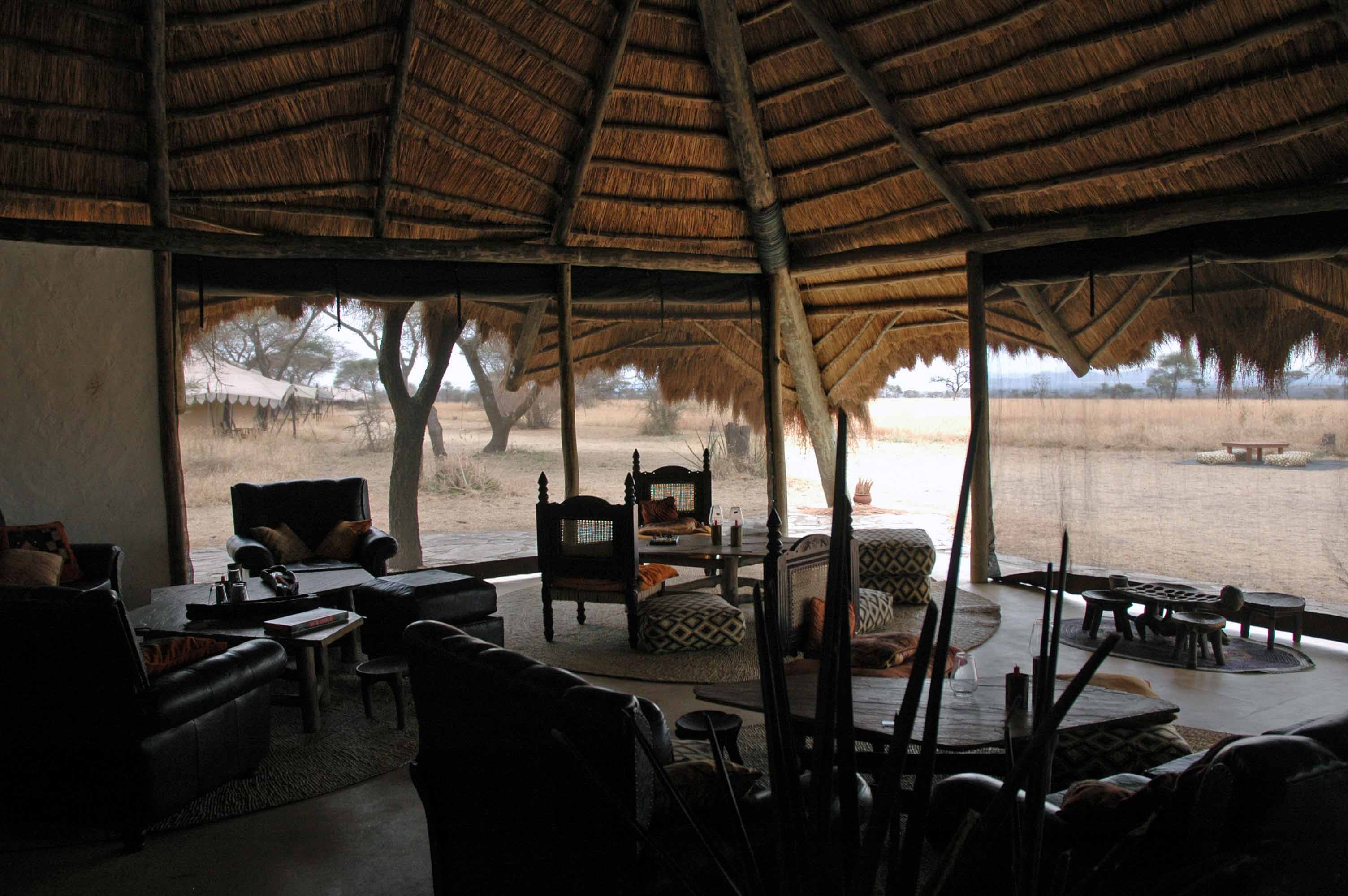
(Click photos to see larger size)
We spent the afternoon in the Serengeti National Park. We met a large herd of hippos all standing in a stream. Or maybe it was a stagnant pool. Either way, it was very stinky. Very. We also saw some elephants drinking in a water hole a little bit later. They were much less stinky. Much. We saw a leopard sleeping in a tree, cool birds, some lions, and then circled back to the pool of stinky hippos. Phew! It rained on us on the way back to the camp. First rain we've seen since we got here.
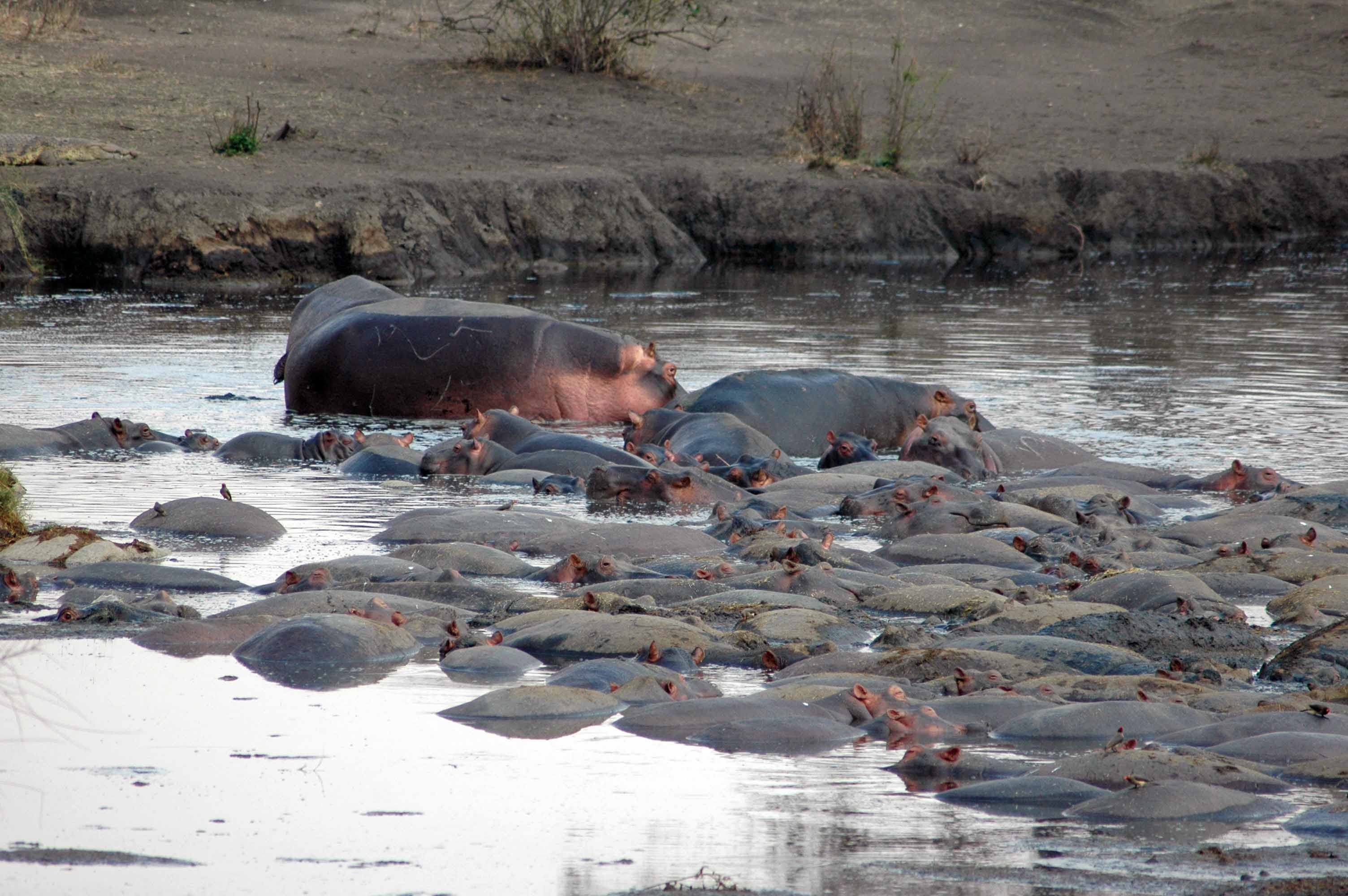
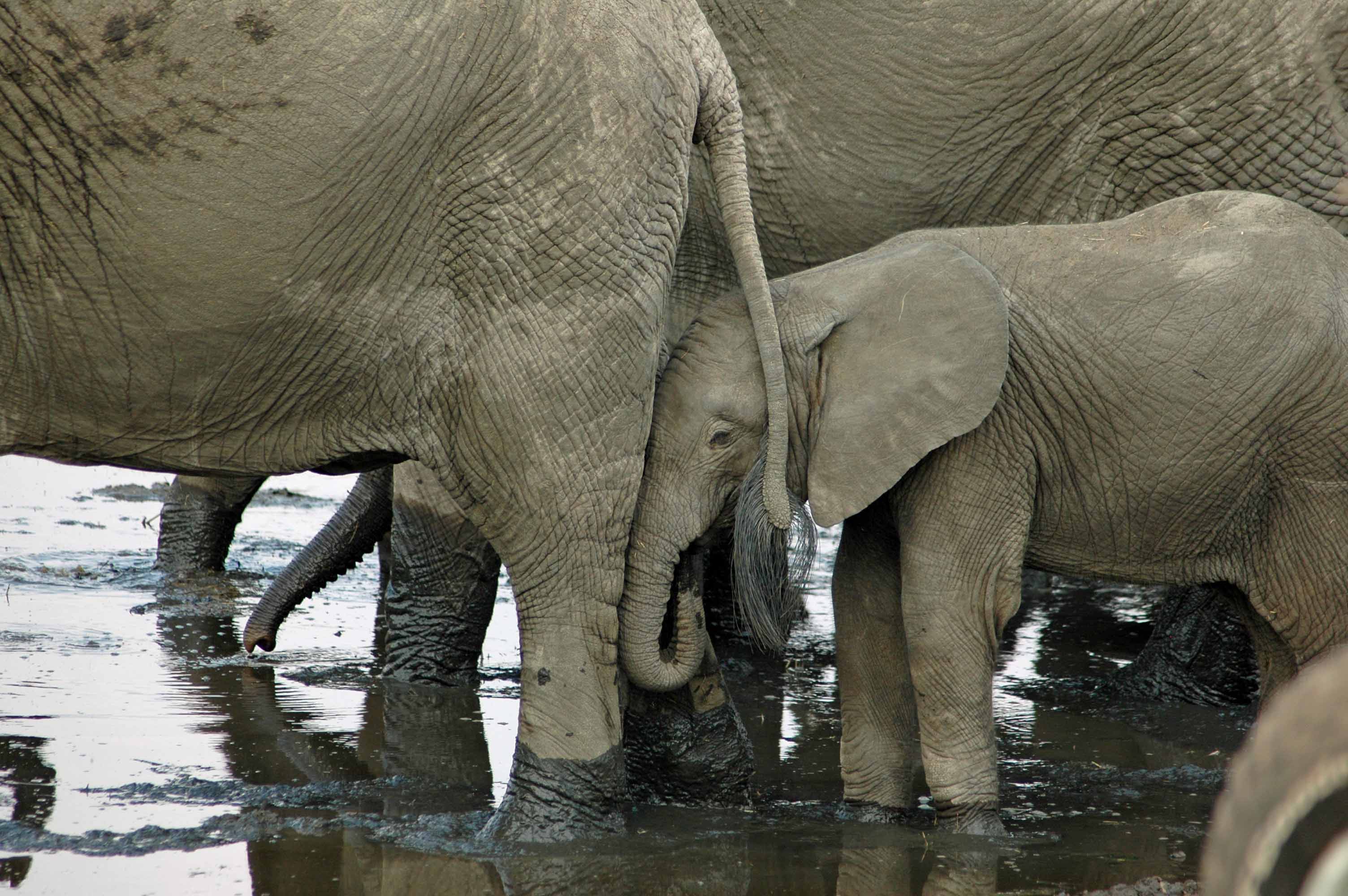
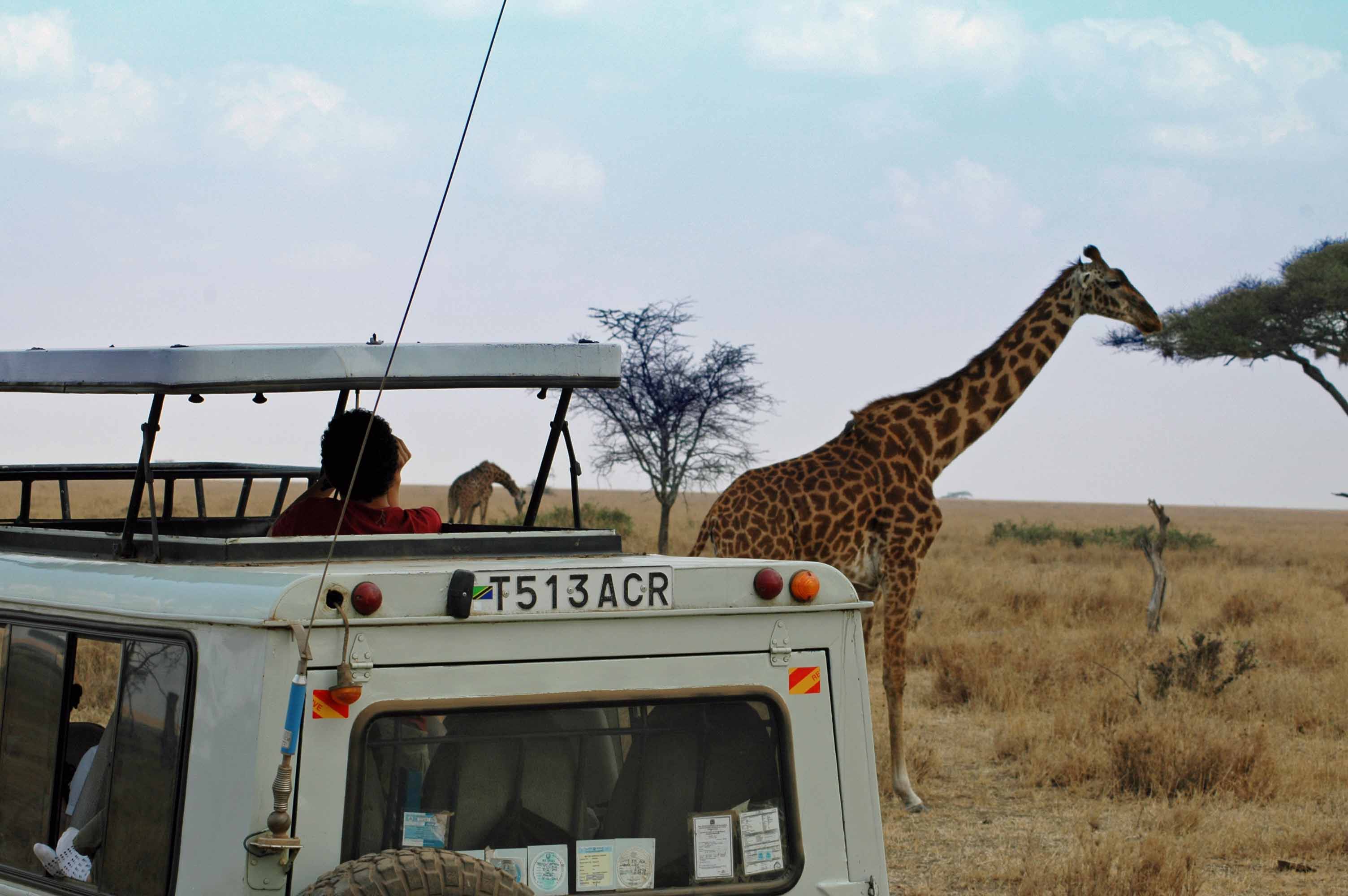
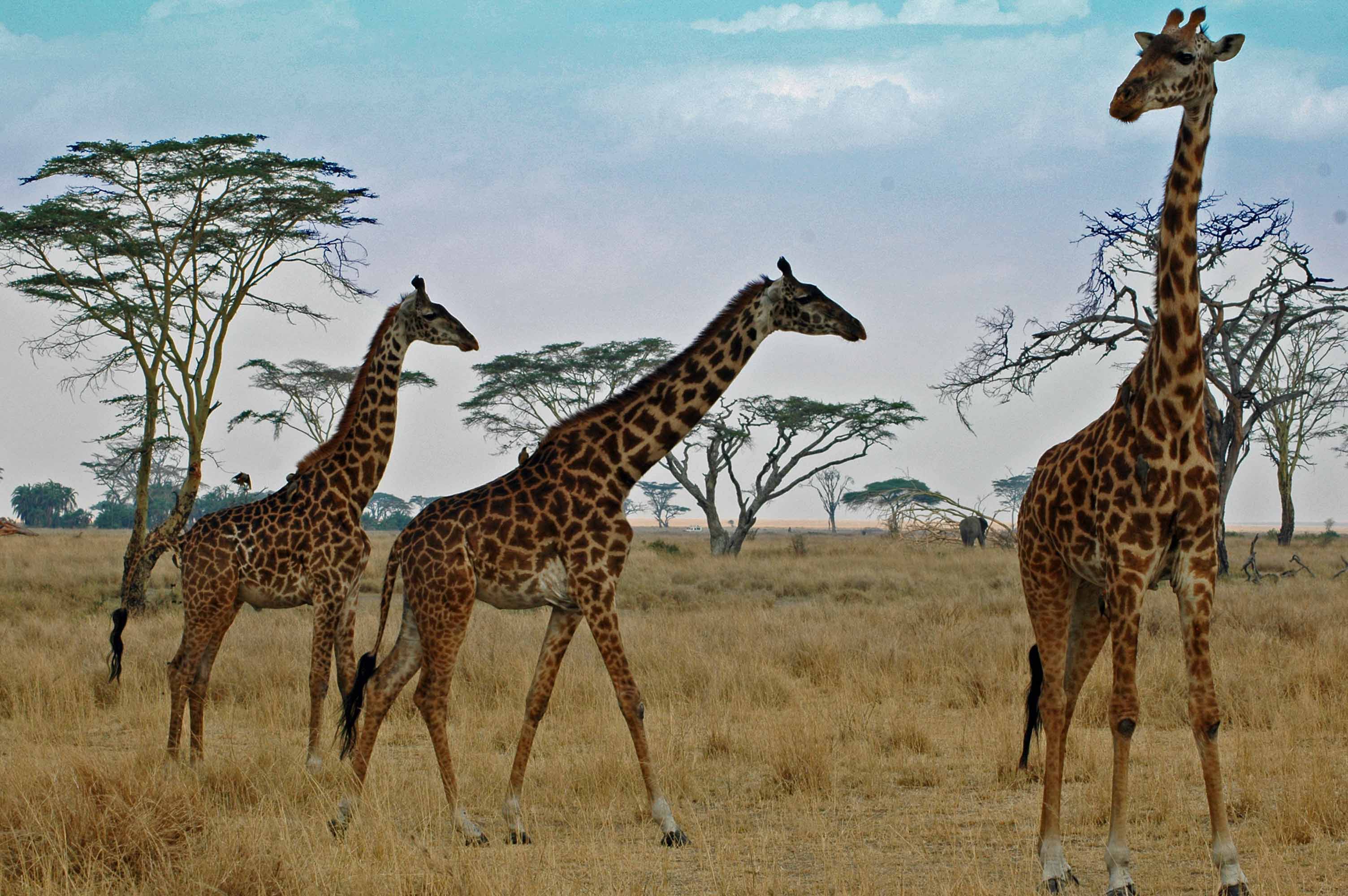


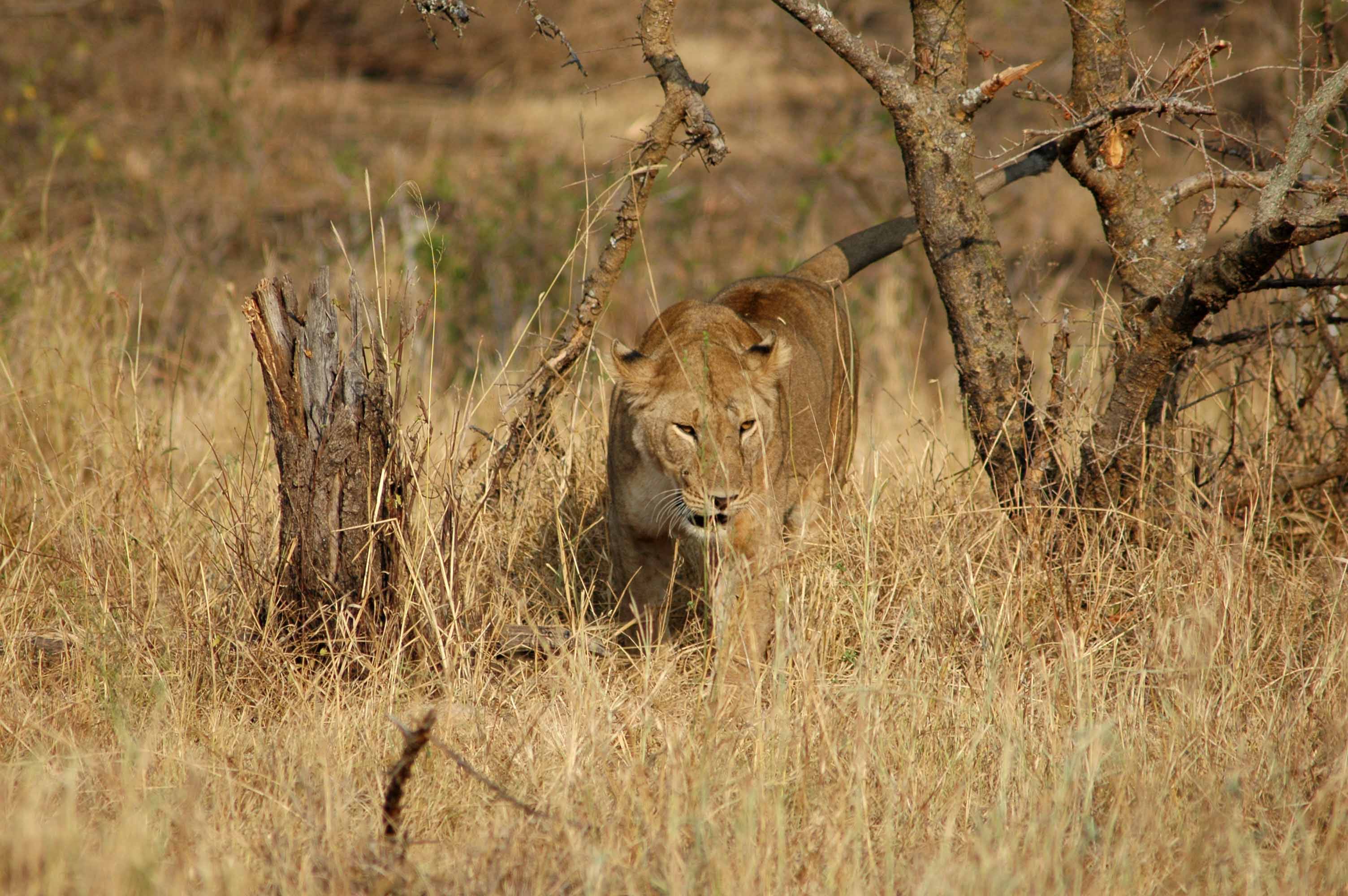

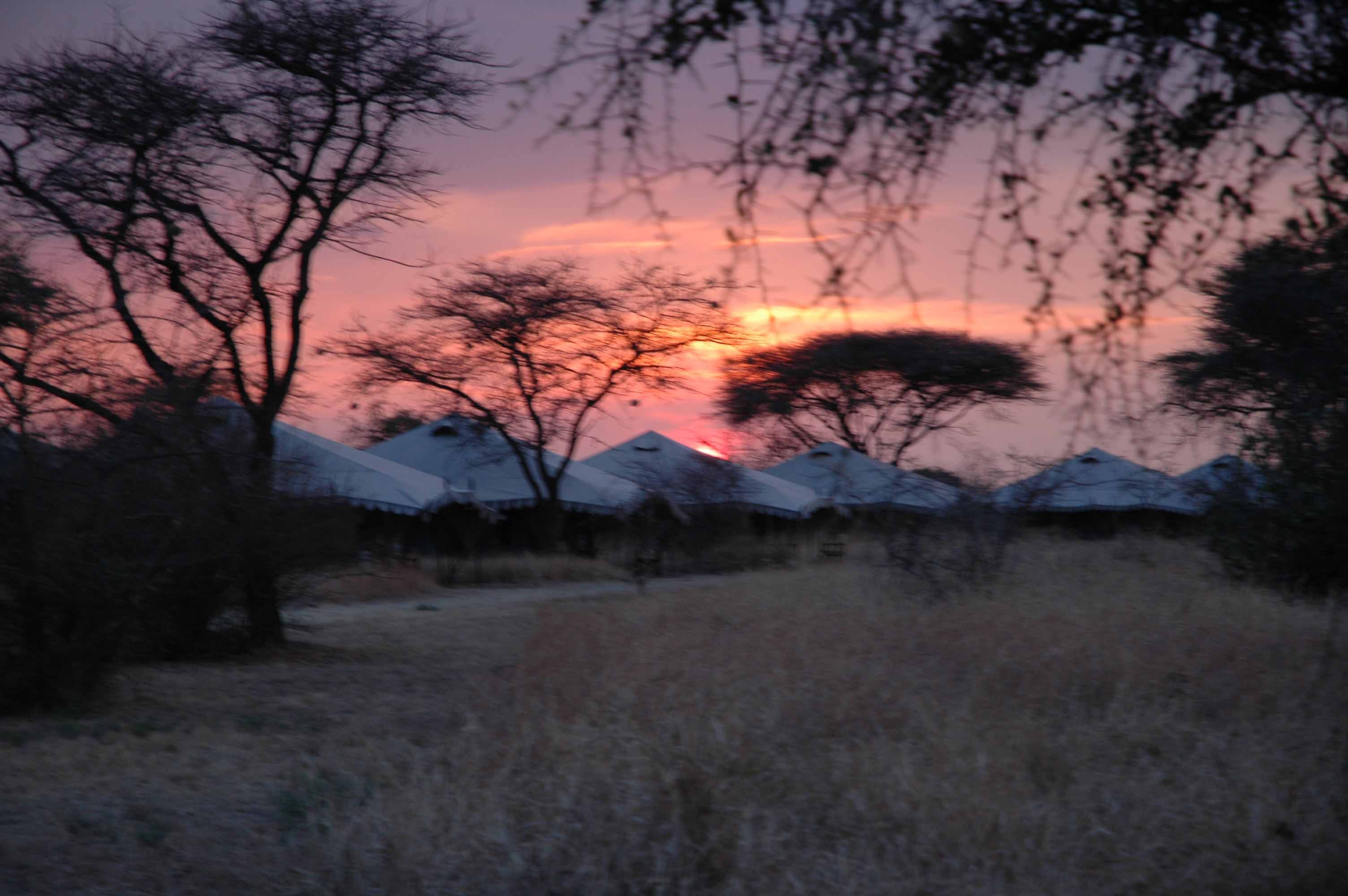
Click here for more pictures from Day 9
Day 10 - 8/16/13 - Friday.
Central Serengeti.
Today started very early. Up in time to get dressed and grab a quick cup of coffee before leaving the camp at 4:30. It's balloon day! It was about an hour's drive to the launch site in the National Park. The trip was sleepy and uneventful except for the moment of terror when we rounded a corner and nearly ran into a couple of hippos lying in the road. Remember the stinky hippos? Yeah. Them. The driver slammed on the brakes and there we were, face to face with the hippos. They completely blocked the road and there wasn't a way to get around since they were right at the beginning of the bridge to cross "stinky creek." Apparently the rule is to let sleeping hippos lie. So we waited and wondered if we would get to the balloons in time. As it turned out we only had to wait a few minutes until the hippos decided to get up and wander off.
We got to the launch site and had our flight briefing. The balloons were inflated and the breeze started blowing them the wrong way, so there was a delay while everyone shifted around before continuing. The baskets were on their sides and we boarded them like astronauts lying on our backs. As the balloon heated and righted itself, we slowly turned upright and then lifted into the dawn sky.

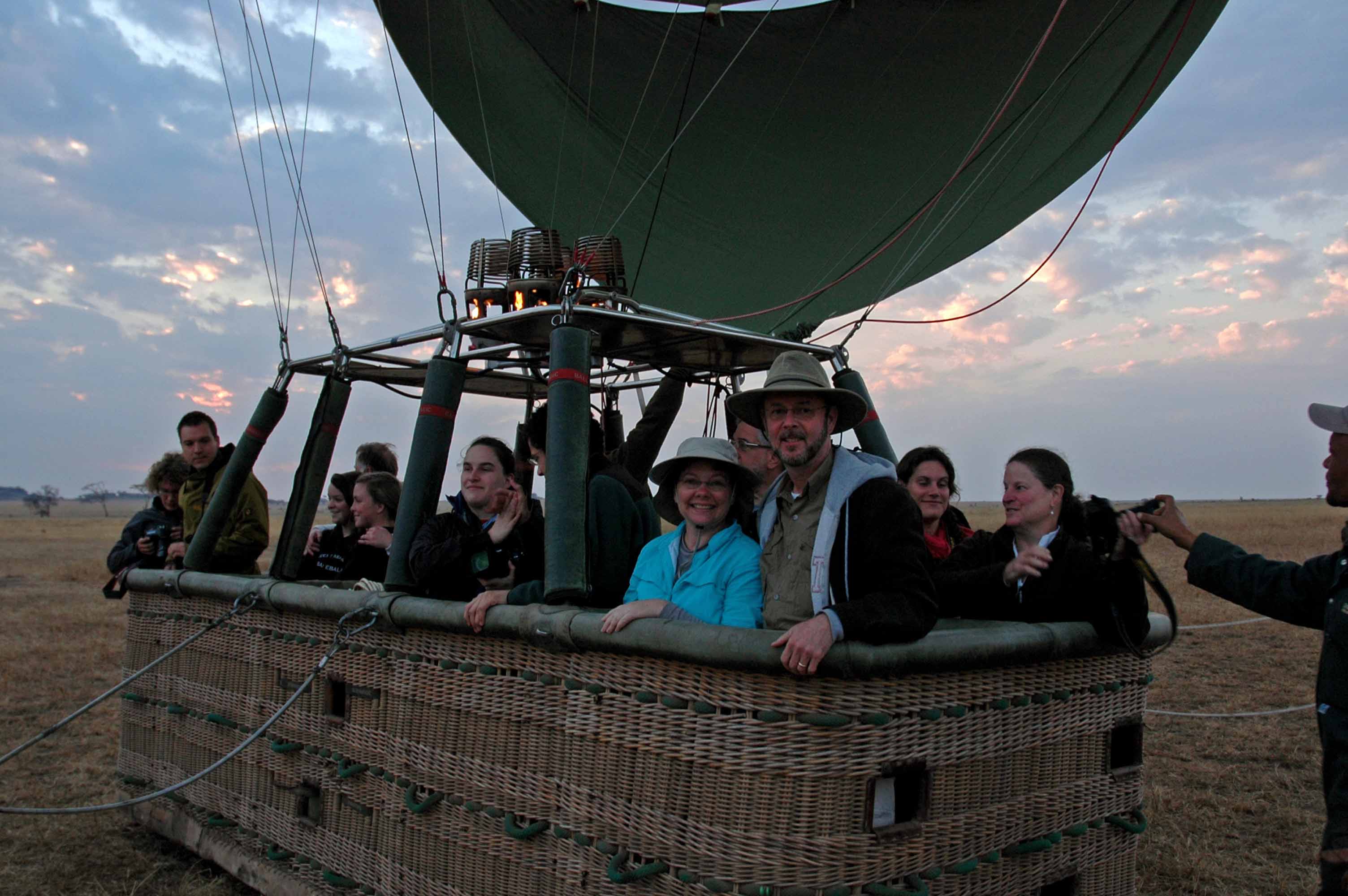
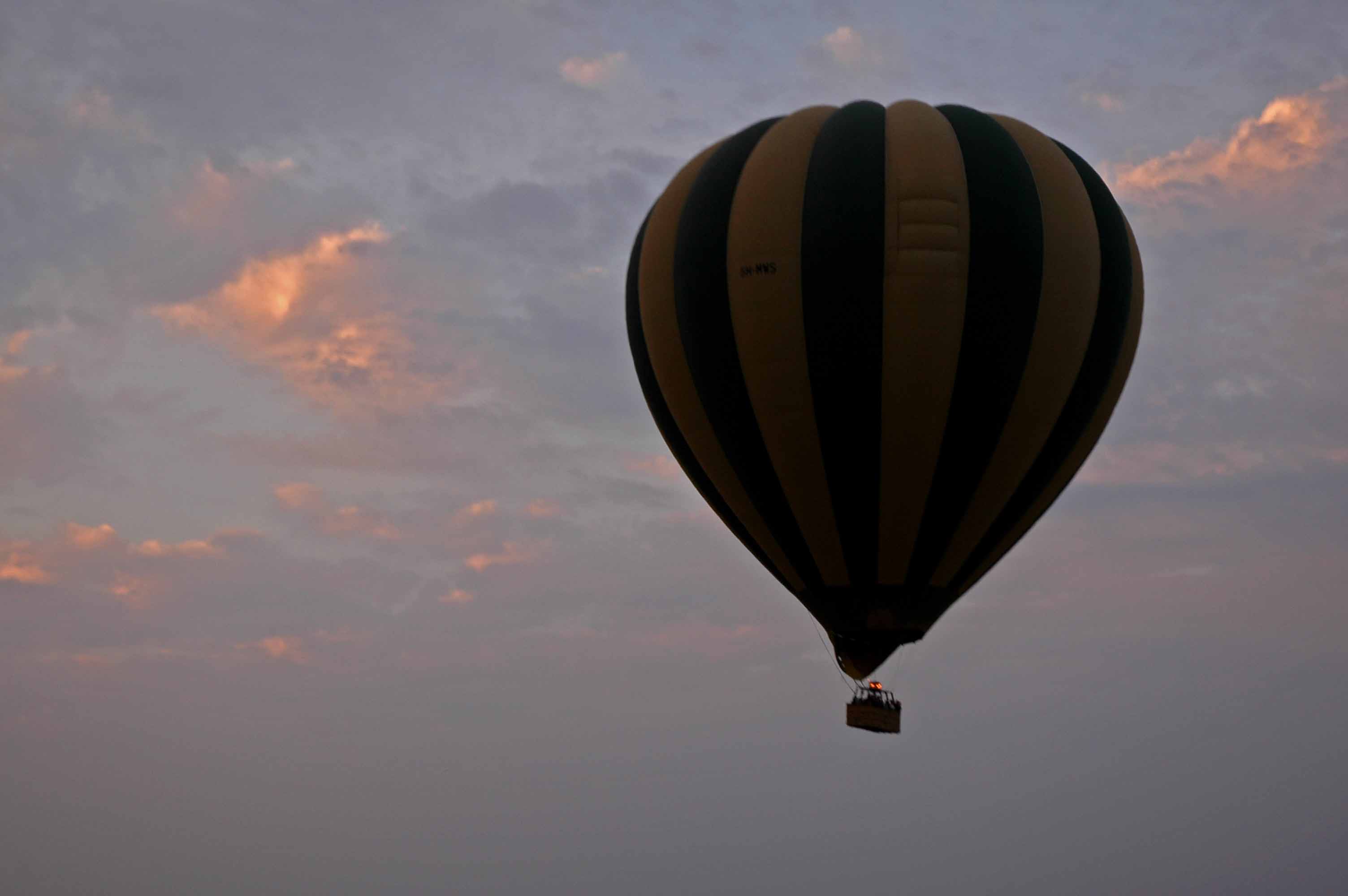
(Click photos to see larger size)
Ten days ago we cast off from our usual lives, our usual routines and civilization as we know it. I haven't seen a paved road in over a week. Or electricity. Or running water. The dust of the Serengeti has permeated everything I have. Everything I am. Finally, this morning we cast off from the world itself and floated above it. Looking down on it. Completely separated from everything we know. The balloon is very quiet and still. I hear the words "be still and know that I am."



As we drifted higher and higher over the Serengeti, we stared at the rising sun and the expanding scene below us. No one spoke. Afraid of breaking the spell, I think. For a while we soared very high, and then we drifted down and skimmed the grass just inches off the ground. We watched hyenas, ostriches and gazelles in the morning mist. We even saw a lion beneath a lone tree with her kill. We were in the air about an hour or so but it seemed like just minutes had passed when it was time to land. Our pilot made it look so easy as we gently skimmed the ground and came to rest. The spell was broken.




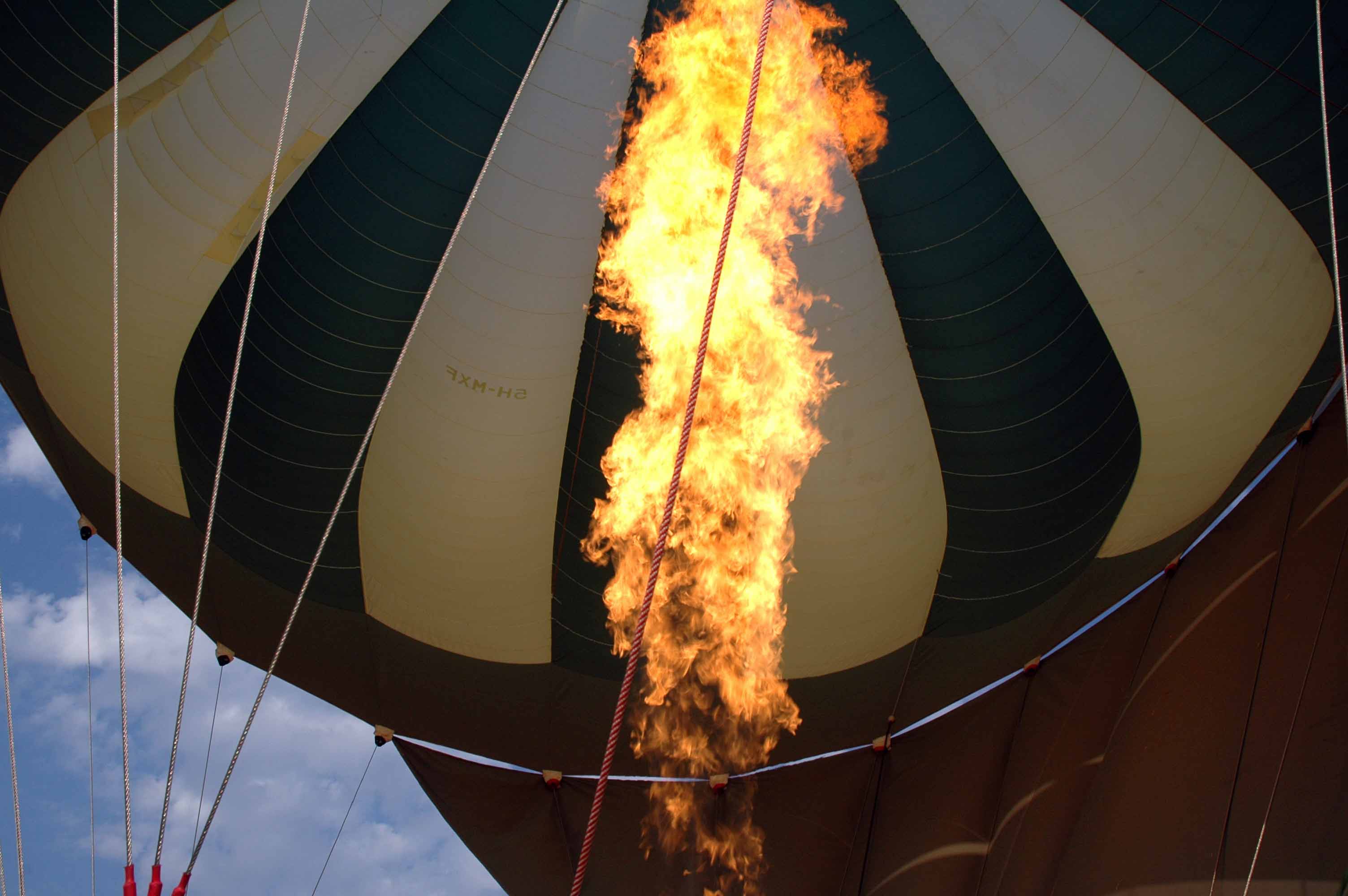
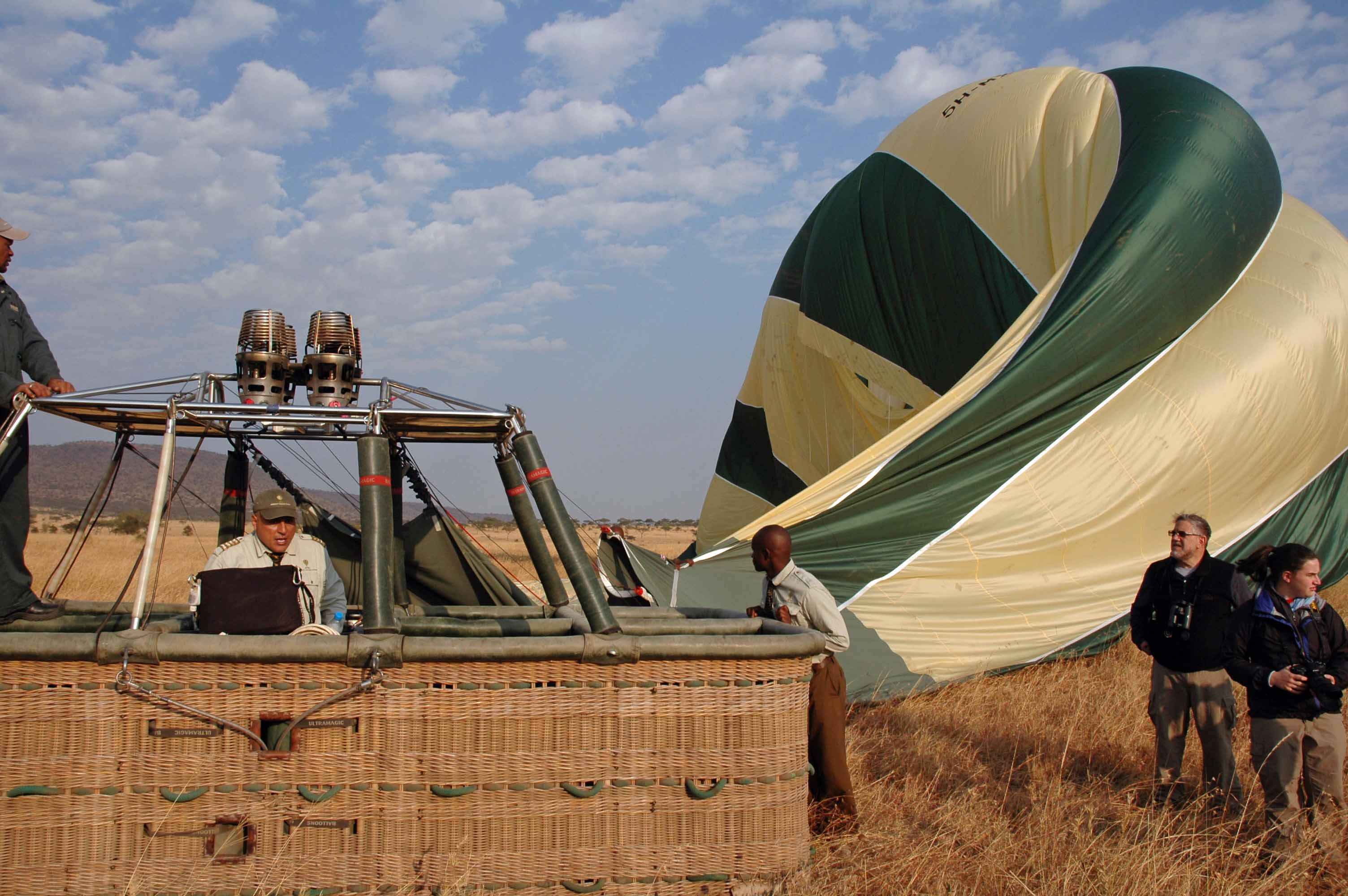
We didn't have much time to think about it though. The ground crew scooped us all up and we drove a short distance back to the lone tree with the lion under it. She seemed very unconcerned about all of us in our rovers. We also saw a hyena trot carrying its breakfast. Scraps collected from someone else's kill, no doubt. We drove on a little further, away from the animals, and we all assembled with the pilots and crew for a post flight champagne celebration. The head pilot treated us to a story of the first balloon flights and the tradition of bringing champagne. Apparently, it's to appease the fear and anger of the people wherever you land. It seems there were some incidents where the locals weren't amused by having unannounced aviators land in their gardens before someone had the brilliant idea to bring along champagne to share after landing.
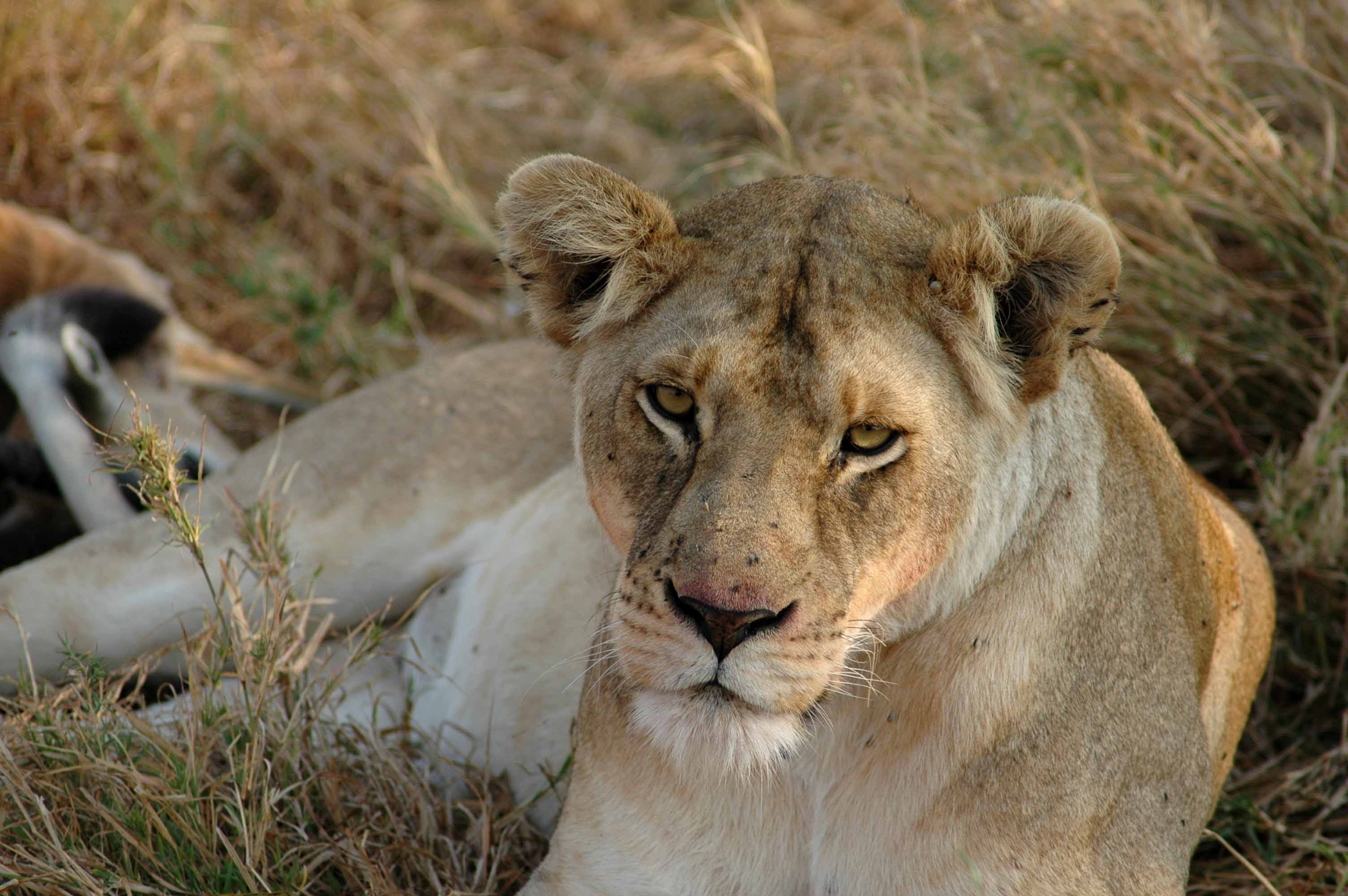

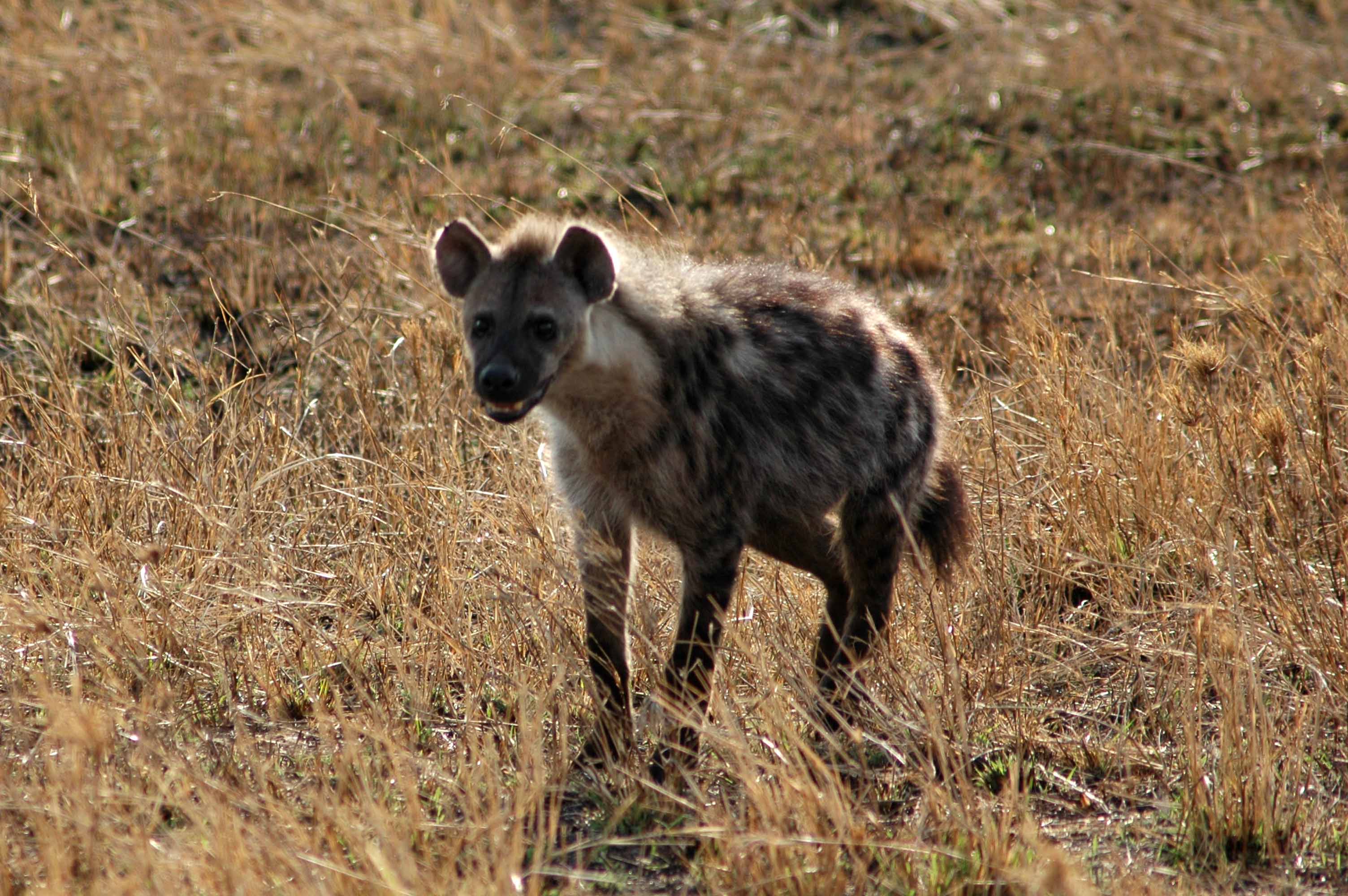
Then we were whisked away to a big breakfast under an even bigger tree. We ate a fantastic breakfast and spent quality time with our fellow balloonists, talking about the flights and comparing stories and wonder. Afterward, we all boarded our respective rovers and went our separate ways. For us, it was onward to the Serengeti Park visitor center for some shopping (and restrooms).



While we were walking around the area, enjoying the exhibits and so forth, a man approached us and asked if we'd been fortunate enough to see one of their famous Serengeti pythons. If not, they had one there on display if we were interested. Next thing we knew, we were following along behind this man through the building, then out the back, around a corner of another building, and warning sirens were going off in both our minds. We exchanged a look that spoke volumes, but basically came down to, "Run!" So we did. Pretty sure we were moments away from a proper mugging.
Having escaped to the safety of our rover and the watchful eyes of our guide, we set off for an afternoon in the park. More lions (walking right up next to the rover), a sleeping leopard in a tree, another leopard walking right past us (within about 5 feet), and an assortment of other hyenas, hippos, and giraffes.
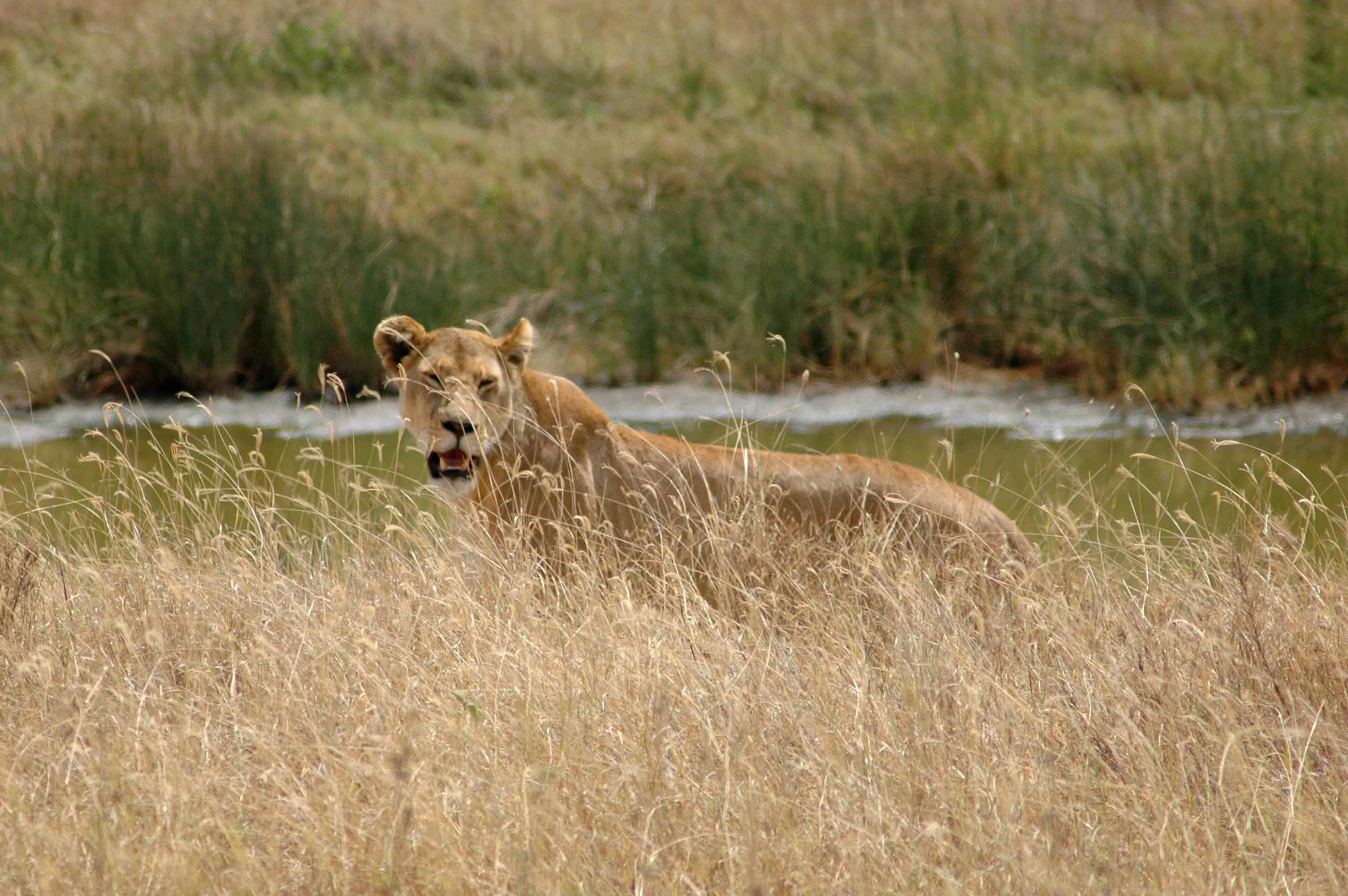
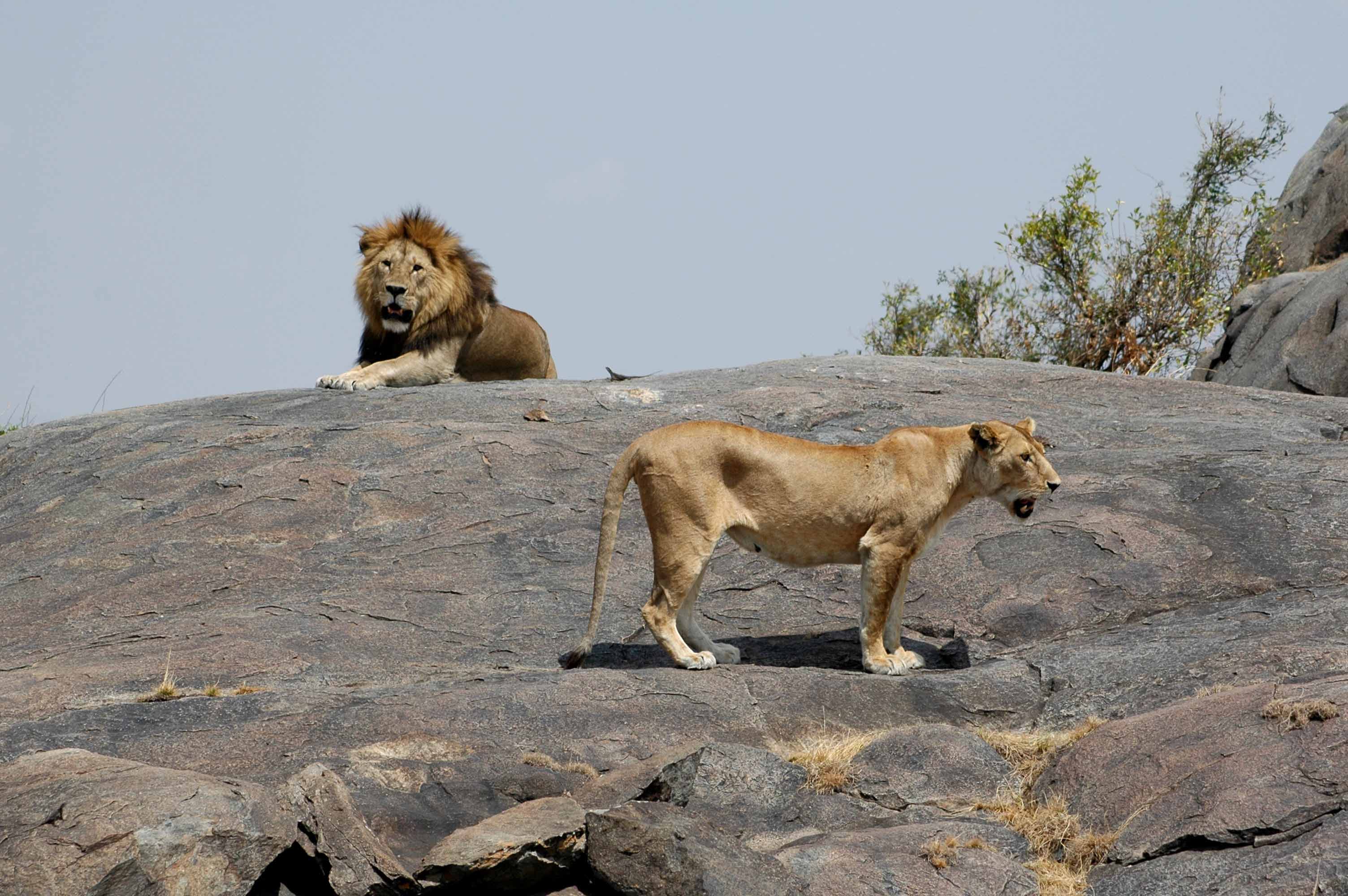


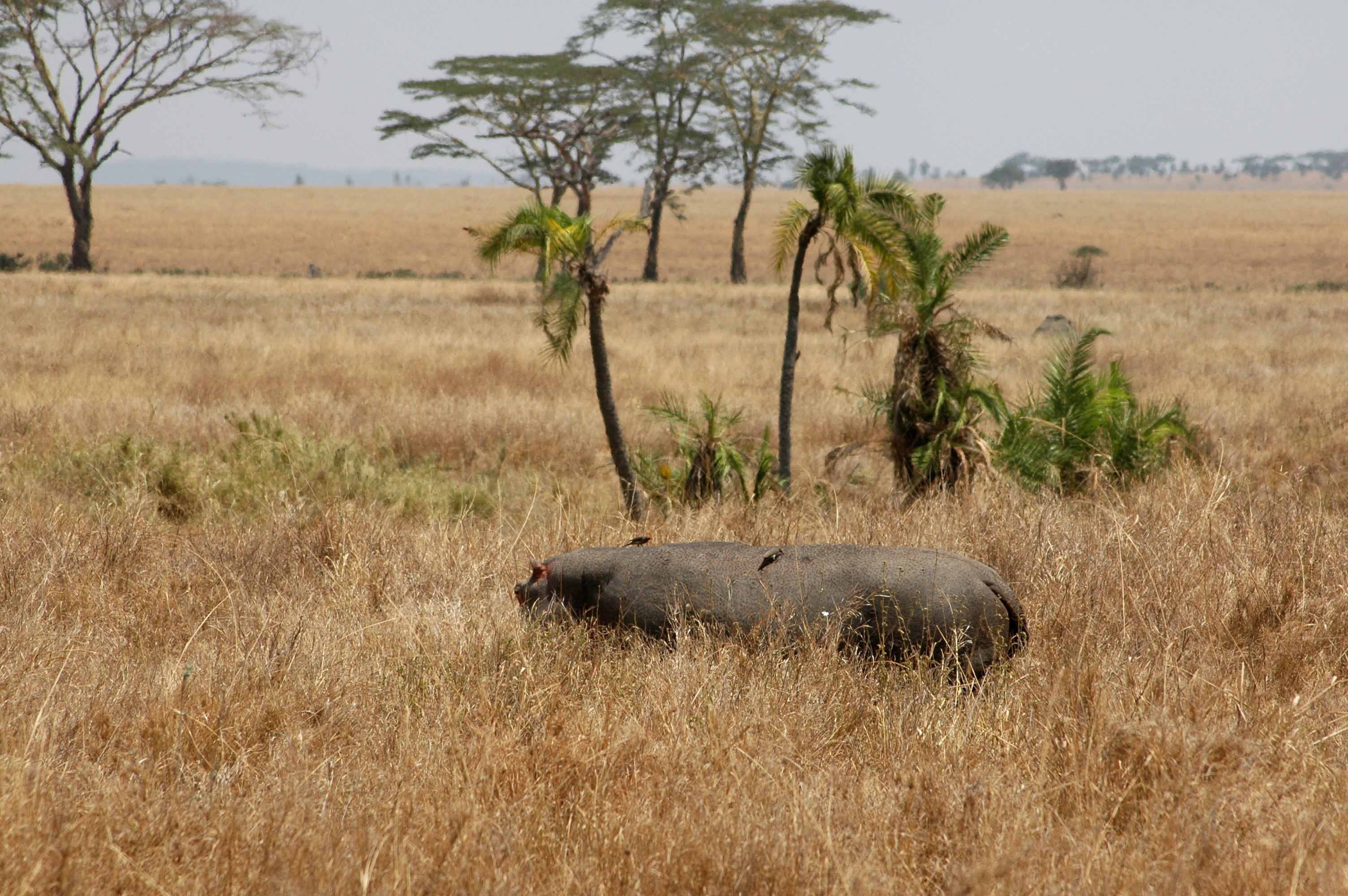
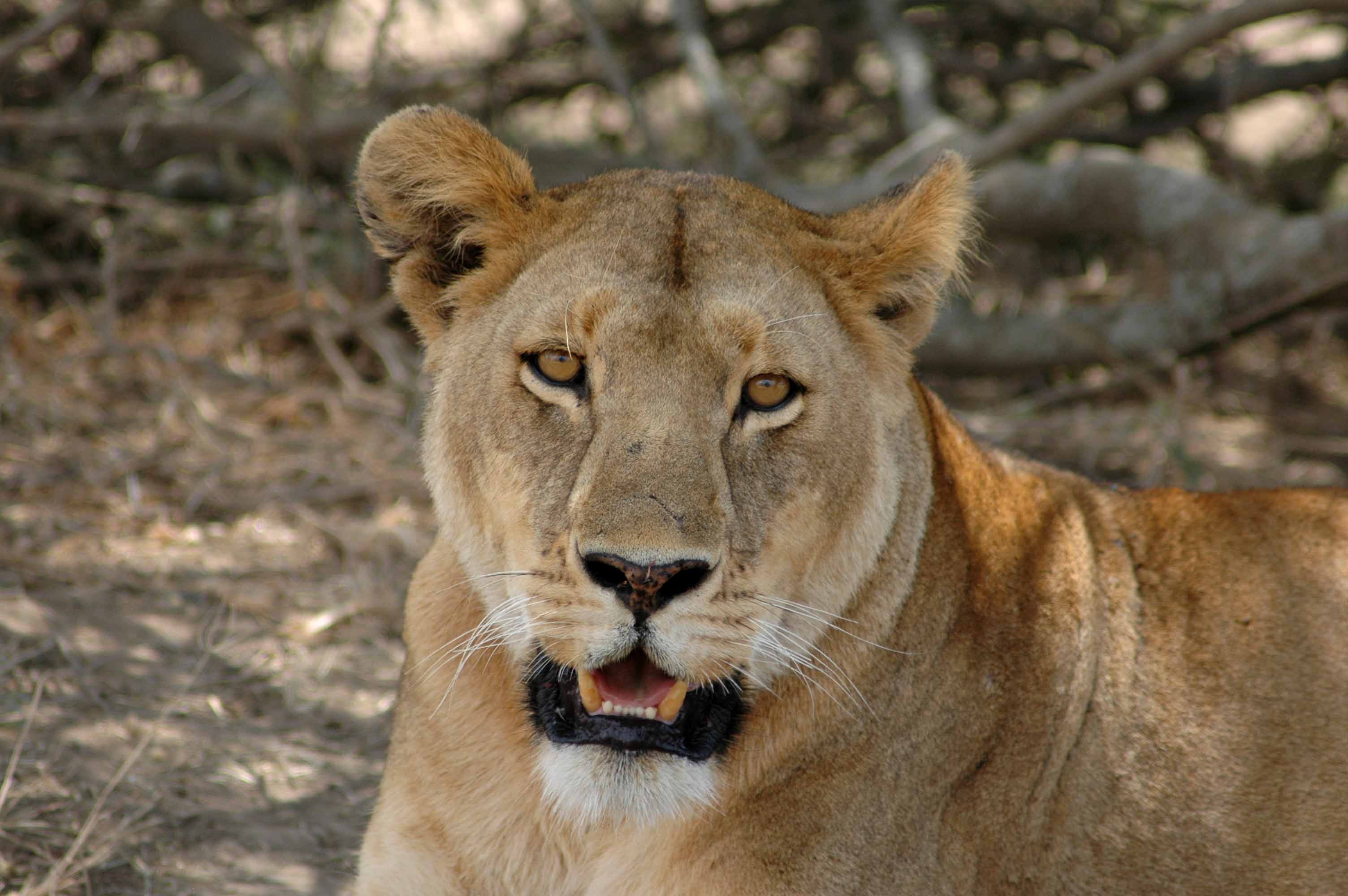
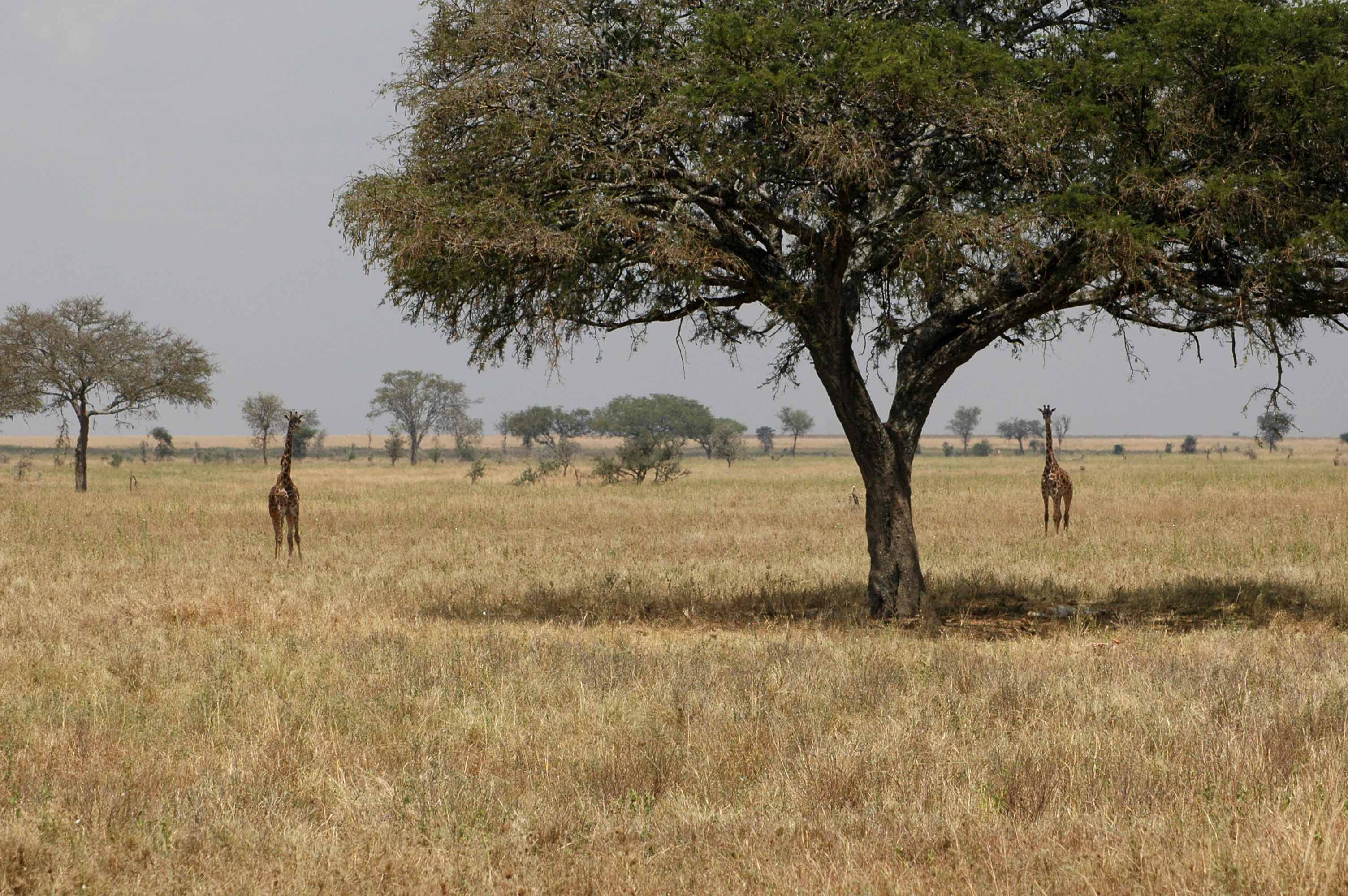

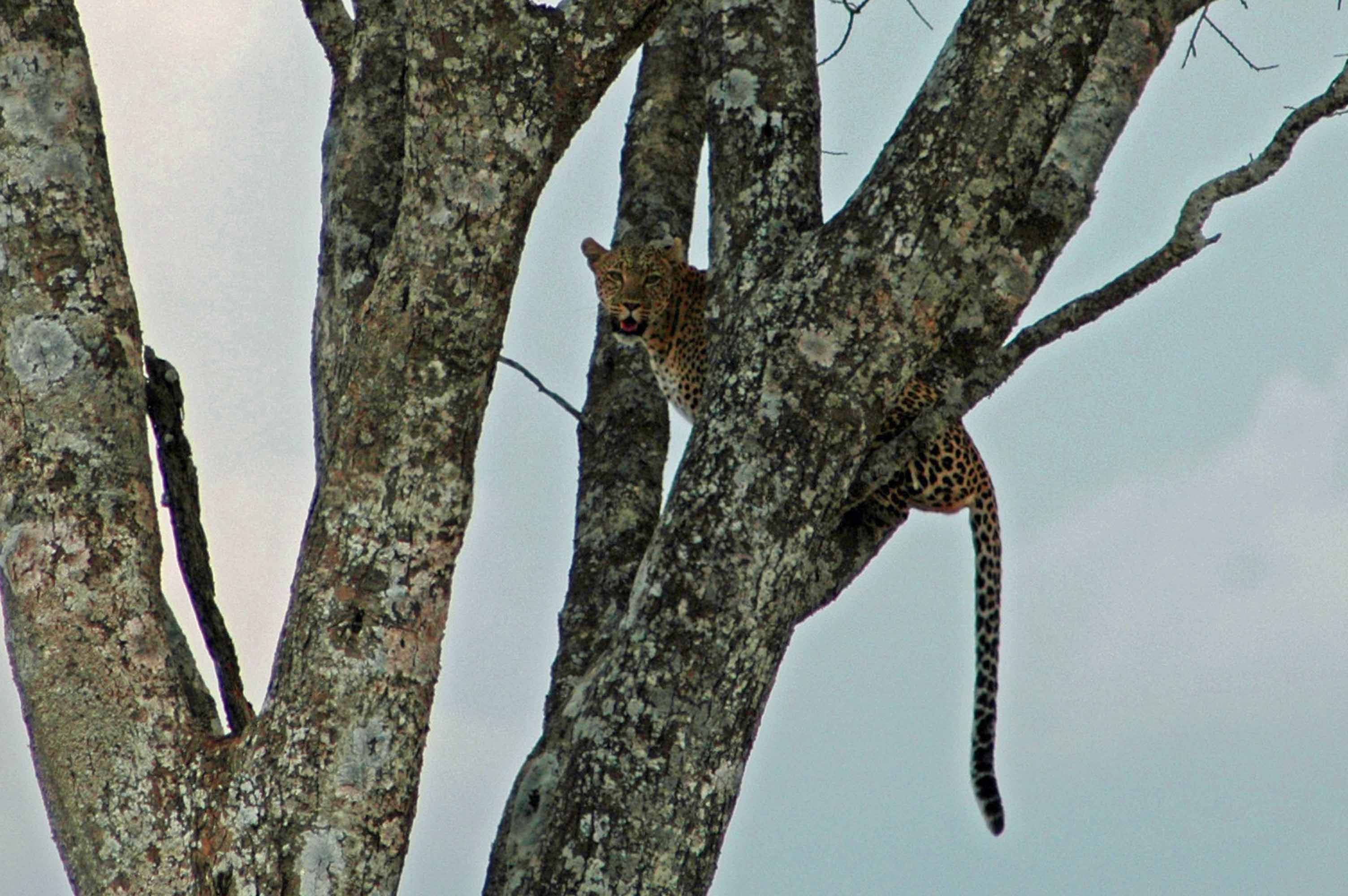
Later in the day, we watching a leopard stalk a herd of topi in a rainstorm. The topi were not only aware of him, but all lined up to face him and then slowly advance toward him as though to say, "You want to mess with us? Bring it. We're ready and we're not afraid." It was clear that their posture and the steady rain soaking everything made for a miserable leopard experience. He eventually just slunk off with his ears and tail down.
Morning balloon flight, champagne breakfast, lions and leopards and afternoon rain on the Serengeti. Whew. What a day.
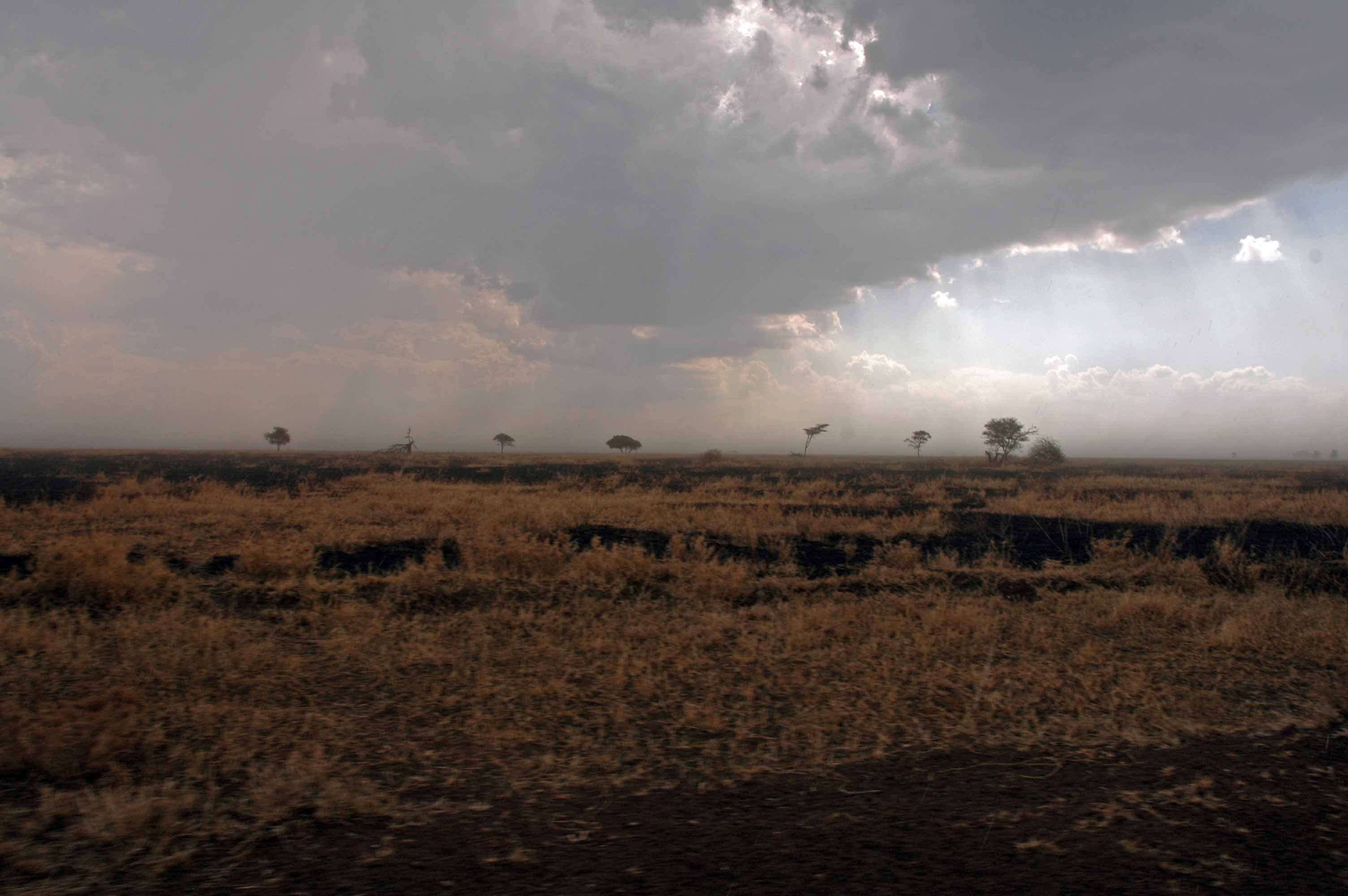
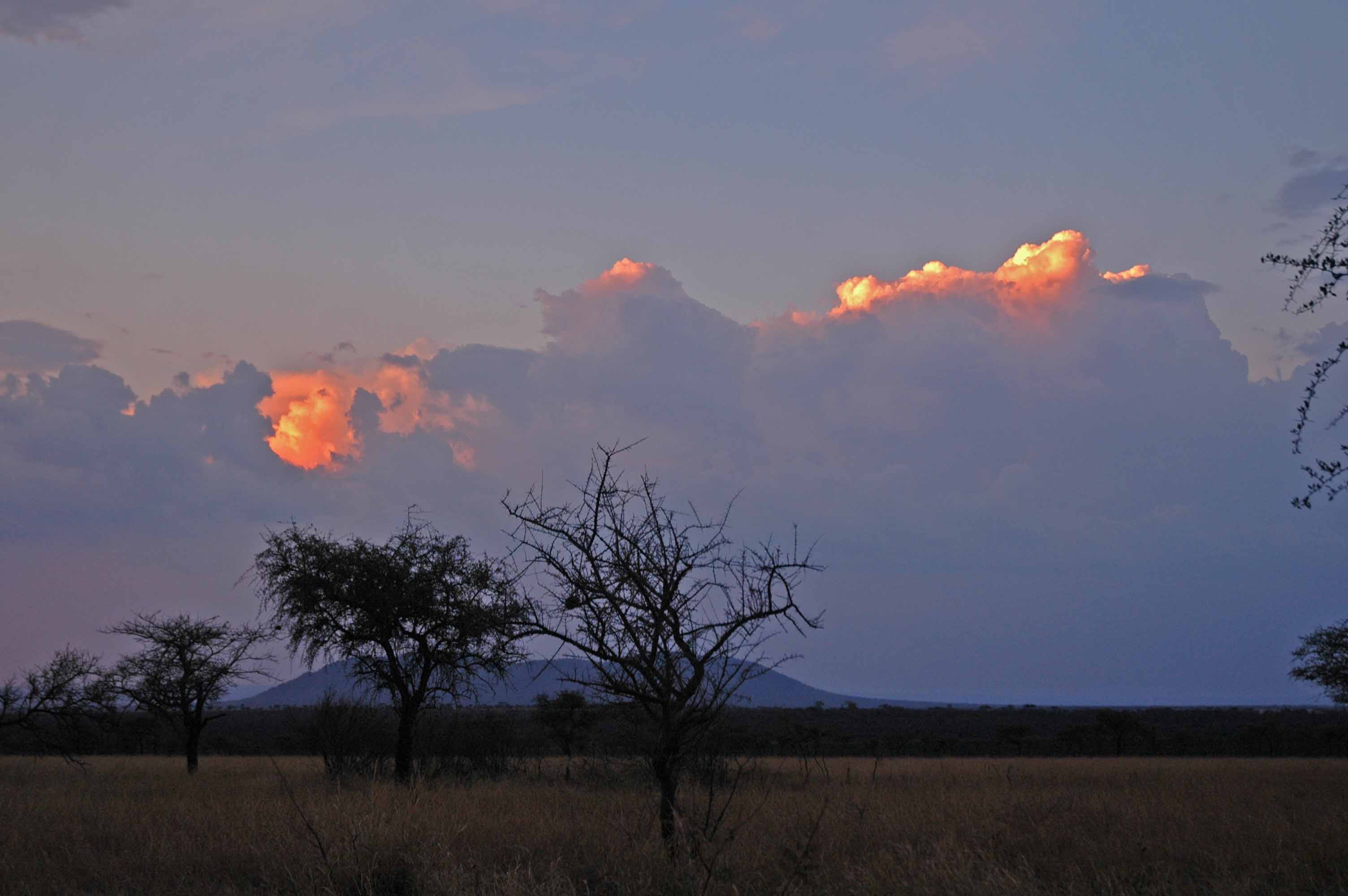
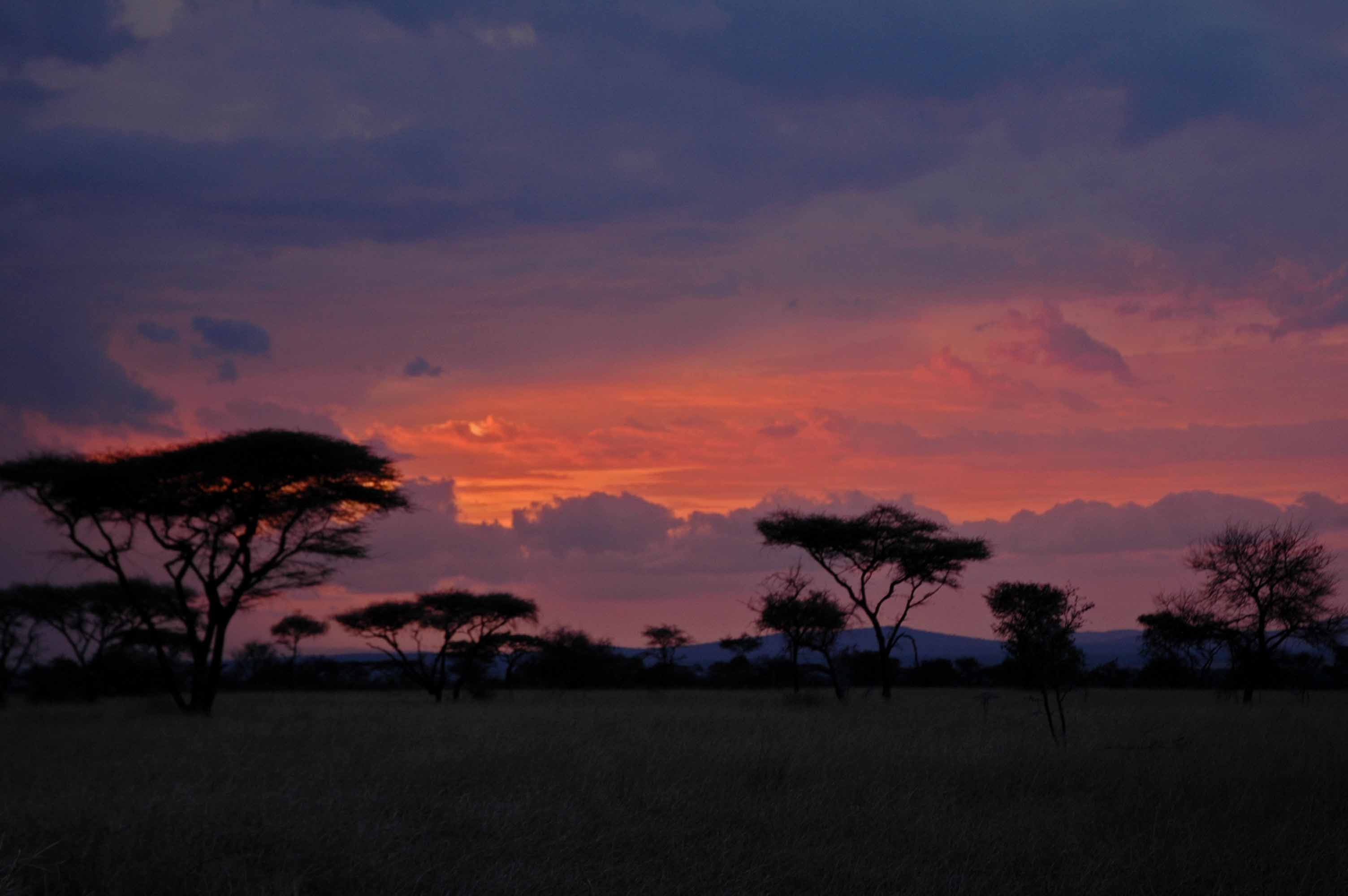
Click here for more pictures from Day 10
Day 11 - 8/17/13 - Saturday.
To Ngorongoro.
Up at dawn, packed, and on the move. We know the drill by now. Today we're leaving the Serengeti and traveling east to Ngorongoro Crater. Along the way we saw our first cheetah. He was at a distance, sitting up on an old termite hill, looking around for breakfast opportunities. Even though he had his back to us, he managed to stretch around and stare at us for a while. We also passed (and paused to watch) a variety of other local residents, including lions, jackals, birds and gazelles. The roads here are some of the worst we've encountered. Even though we're going very slow, we're constantly being tossed around inside the rover and have to hold on tight to stay in our seats.



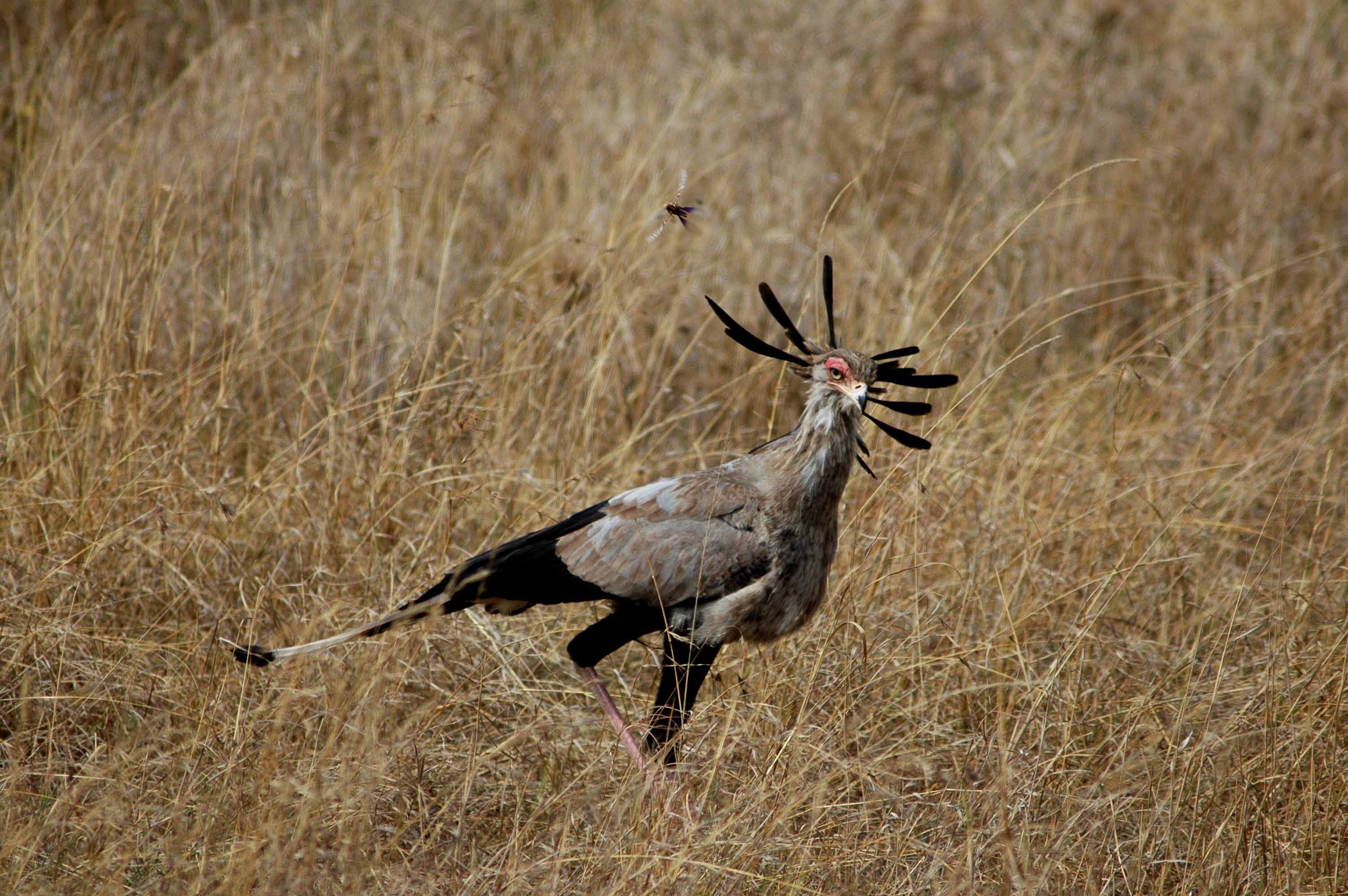

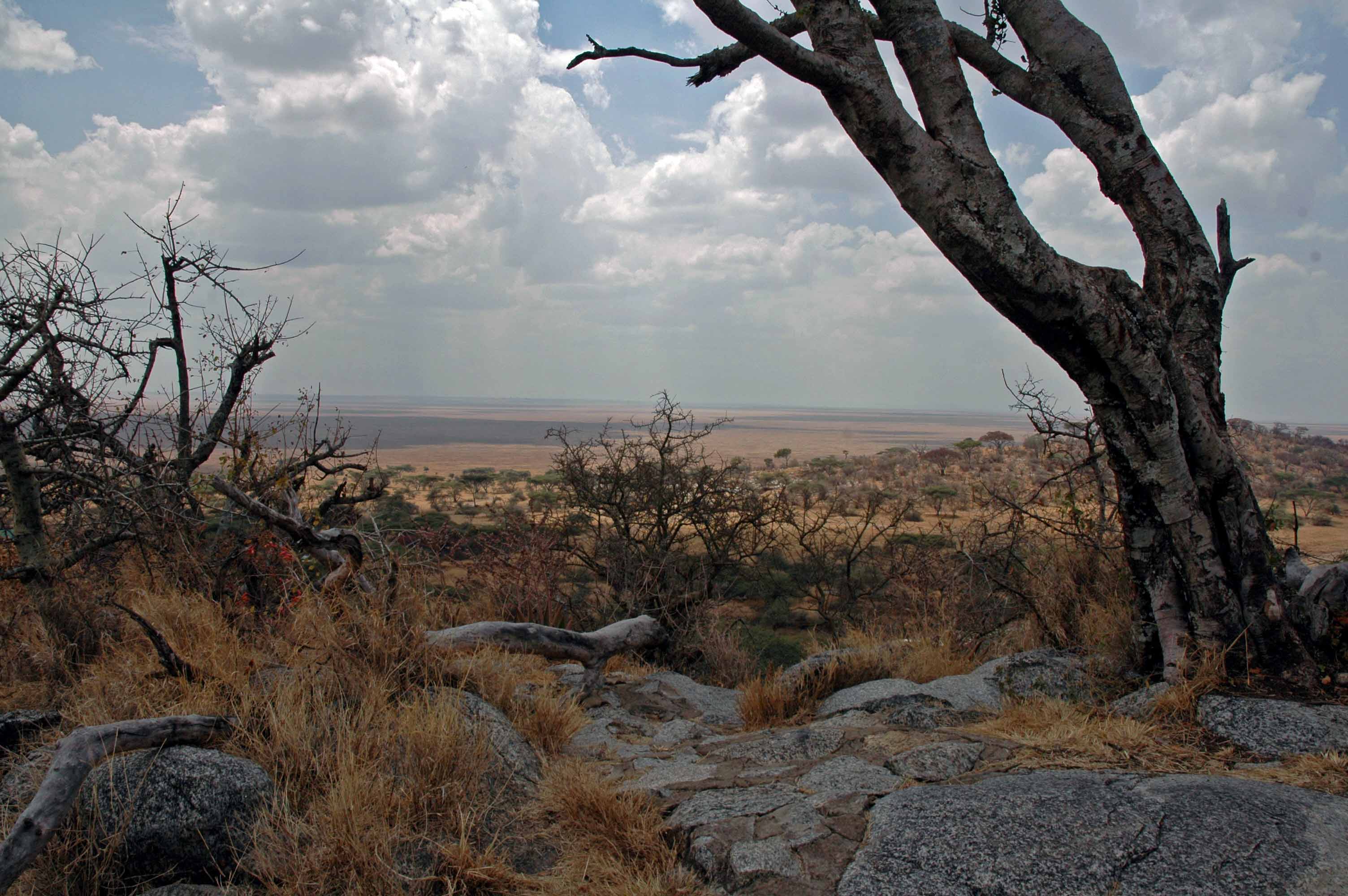
(Click photos to see larger size)
Finally, we got to the entrance to the Ngorongoro Park and stopped to take care of the necessary paperwork. Their payment system was down, though, and we ended up spending an hour and a half getting things squared away. While we waited for Kumbi to work his administrative magic inside, we ate lunch beside the rovers with Hashim.
Then, just when it all seemed to be coming together, Hashim discovered that the water pump in our rover had died. That launched a flurry of phone calls, lots of animated discussions in Swahili and eventually, it was decided that we (M and I) and our traveling companions (the family of 5) would all squeeze into the remaining rover and press on, leaving Hashim and the dead rover behind. So the 7 of us, and Kumbi, and all our duffel bags, and several cases of water (you simply do not travel in Africa without a lot of water, too) all loaded up and left. To say it was cozy would be an understatement.
Good luck, Hashim – we're outa here! (Poor Hashim.)



We spent the next 2 hours driving over more bad roads (have I mentioned the roads yet?) through very hot, dusty plains. Not a tree for miles. We did see a pride of lions along the way, though, which was very cool. Finally we reached the Oldupai Gorge visitor center. We toured a small museum and attended a short lecture from one of the folks there, who explained the archeological significance and work being done there. This is the site of some amazing discoveries of the first hominids from about 23 million years ago.



Then we all loaded back into our single rover and continued up the Ngorongoro Crater wall, along the rim, to our next camp. This camp is completely under the acacia trees, which form a canopy overhead. It's much cooler up on the rim and far less dusty. Hashim caught up to us at the camp with a new rover, but was too tired to join us at dinner.



Click here for more pictures from Day 11
Day 12 - 8/18/13 - Sunday.
Ngorongoro Crater.
Out of the camp by 8am and down into the crater less than a half hour later. The crater is about ten miles wide and is the largest unbroken extinct volcano crater in the world. It’s also home to about 25,000 animals, which makes it a great place to spot wildlife. It’s also home to about 30 black rhinoceroses so this is our best chance to see one.
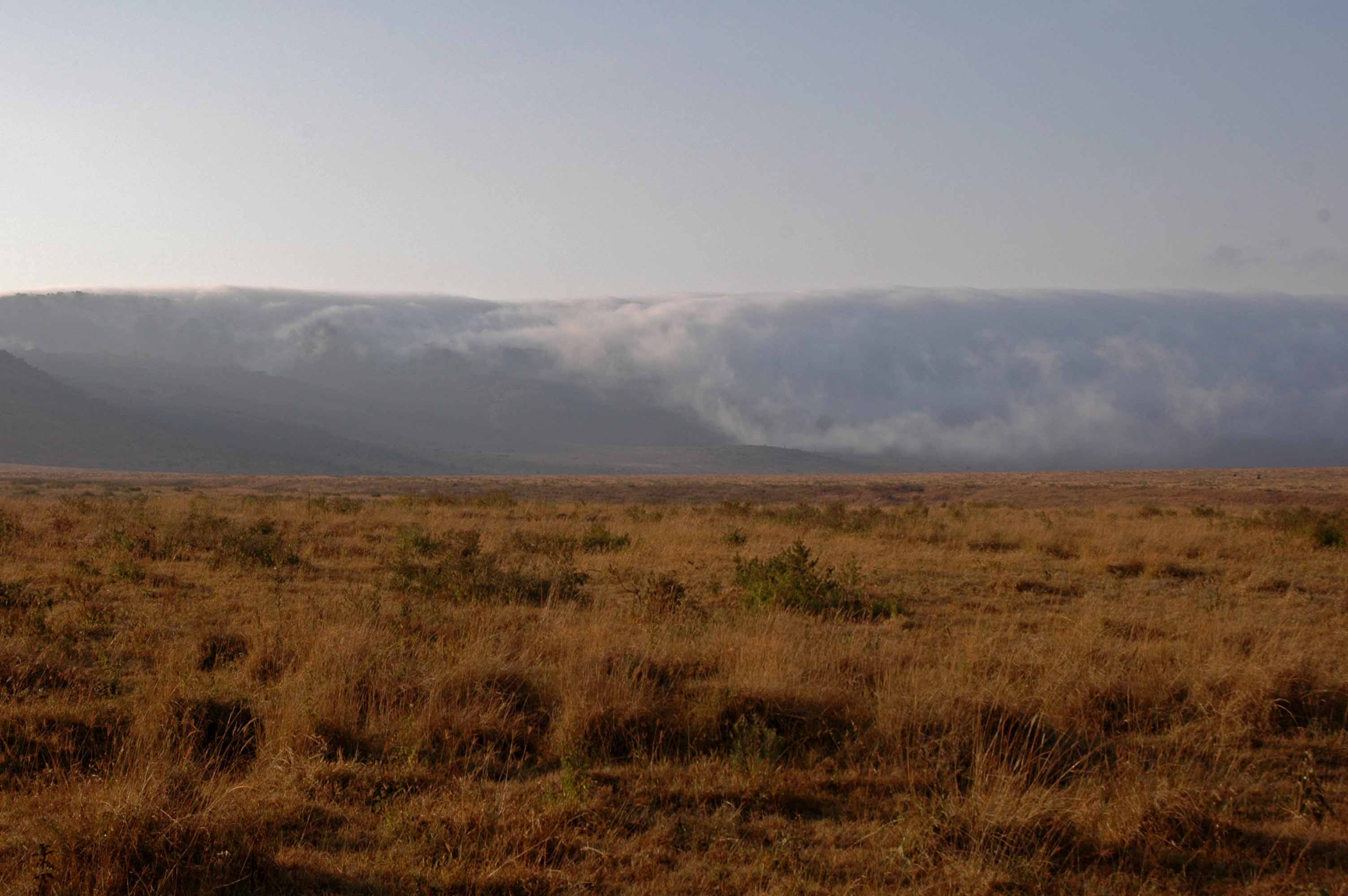

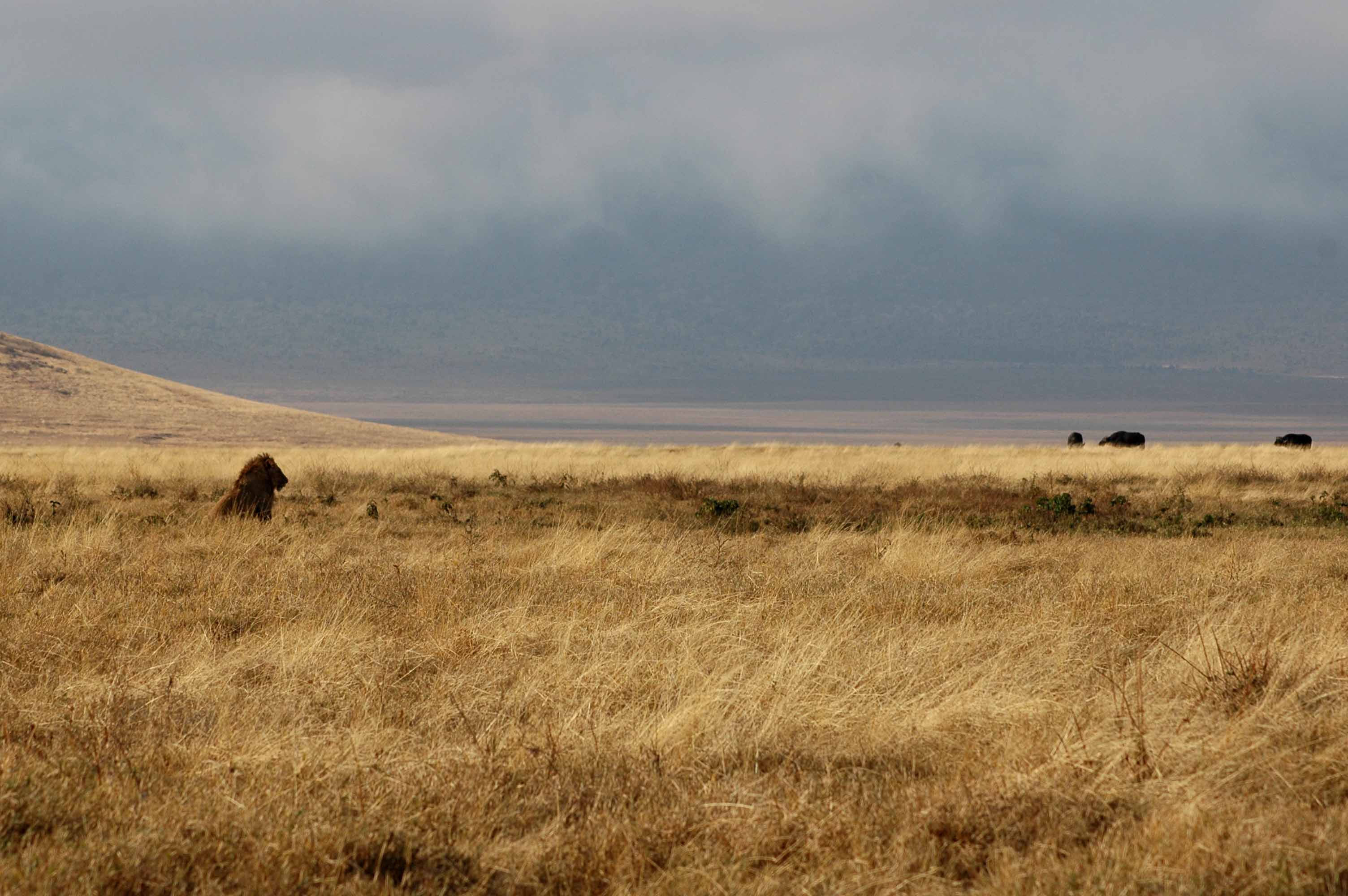
(Click photos to see larger size)
We were watching a pride of lions sitting around in the shade beside a small stream, when all of a sudden a warthog came trotting straight at them, completely oblivious to their presence. We all cringed and braced for the worst. The lions all slowly stood and got ready to pounce, and one of the lionesses started making her way off to one side to flank the warthog. If it weren’t for what seemed like the inevitable end of a warthog, this was a beautiful thing to watch. The pride acted as one and each instinctively knew their role. They tensed, we tensed, and the warthog trotted straight at them. Then, at the last possible second, he noticed the lions and froze. For a half a second, the entire world stood still. And suddenly everything was in motion – the lions running, the warthog running (away this time). The speeds involved were amazing. I had no idea a warthog could run that fast and if I hadn’t seen it myself, I wouldn’t have believed it. Just as suddenly, it was all over and the warthog escaped with his life by a matter of inches. The lioness that was flanking to the side very nearly got him in her last burst of speed.
We were all stunned at what we’d seen, what we’d almost seen, and that we were there to see it at all. Even our guide was surprised, but mostly at how lucky that warthog had been. This is definitely not the place to be trotting about unaware of your surroundings.



We stopped for lunch beside a large pond with hippos in it. Just us and 71 other vehicles filled with fellow safari folk. We’re told that they allow only 200 vehicles into the crater each day. It seemed to be a little crowded at times, but everyone is very considerate and, not only does it not seem to bother the animals, but it didn’t interfere with our own experience, either. At times there can be a dozen or so vehicles right next to you watching the same thing, and you could hear a pin drop.
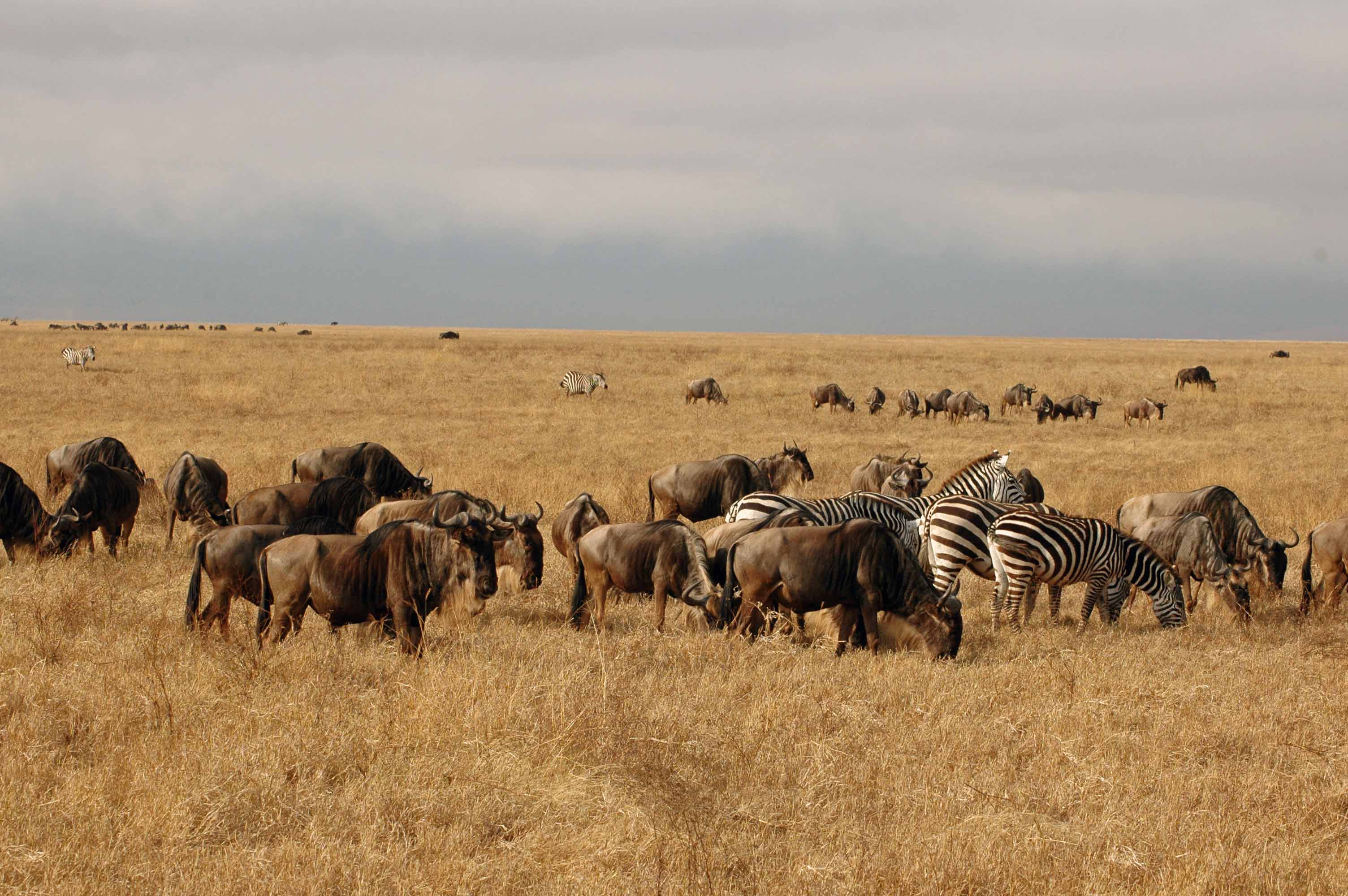




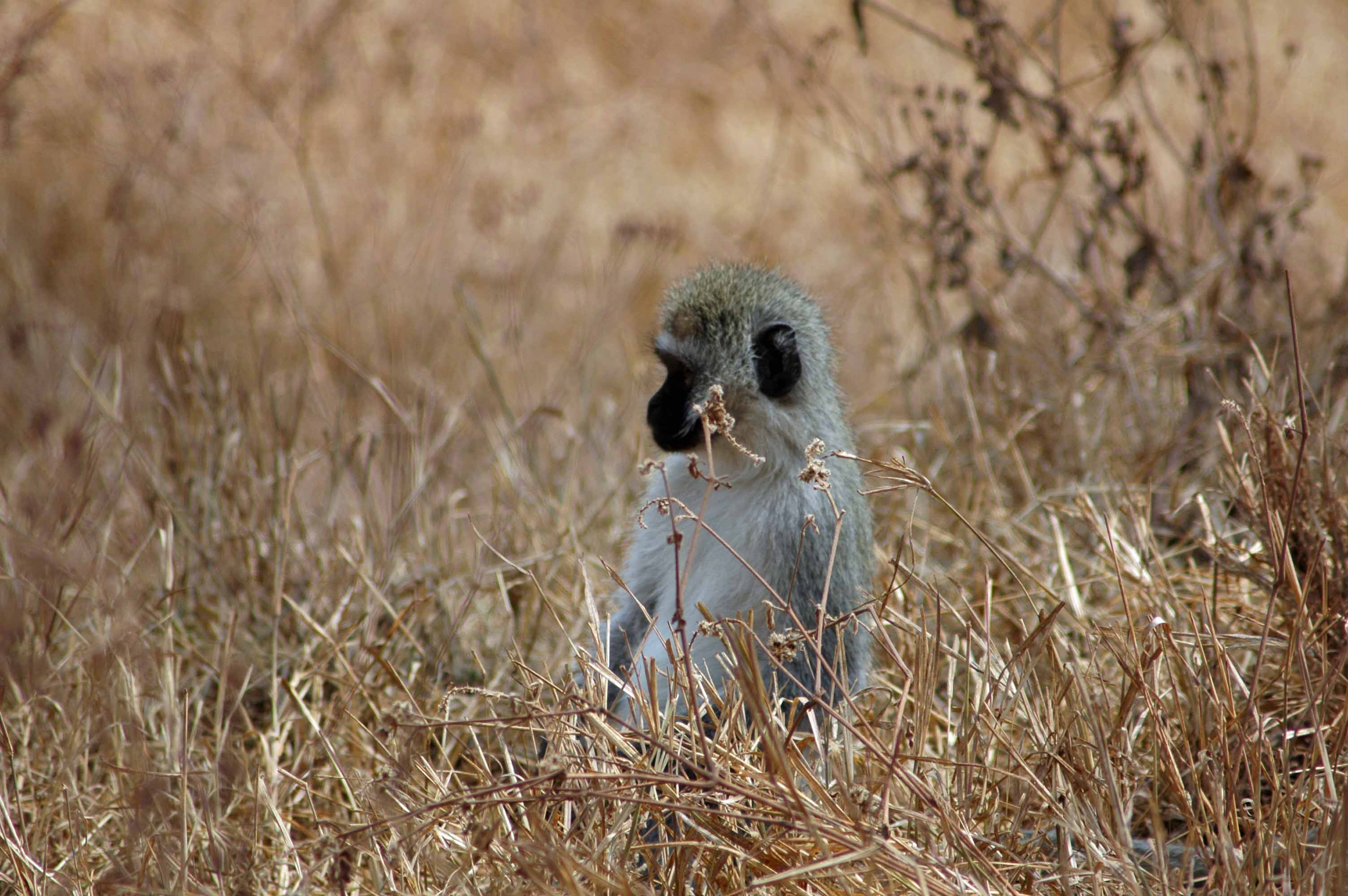
After lunch we went back to searching for the rhinos. All of the guides (about 200 vehicles, remember?) were on their radios to each other sharing what they saw and didn’t see so others could focus on the right areas. Unfortunately, no one spotted any of the rhinos that day, including the park rangers in the crater.

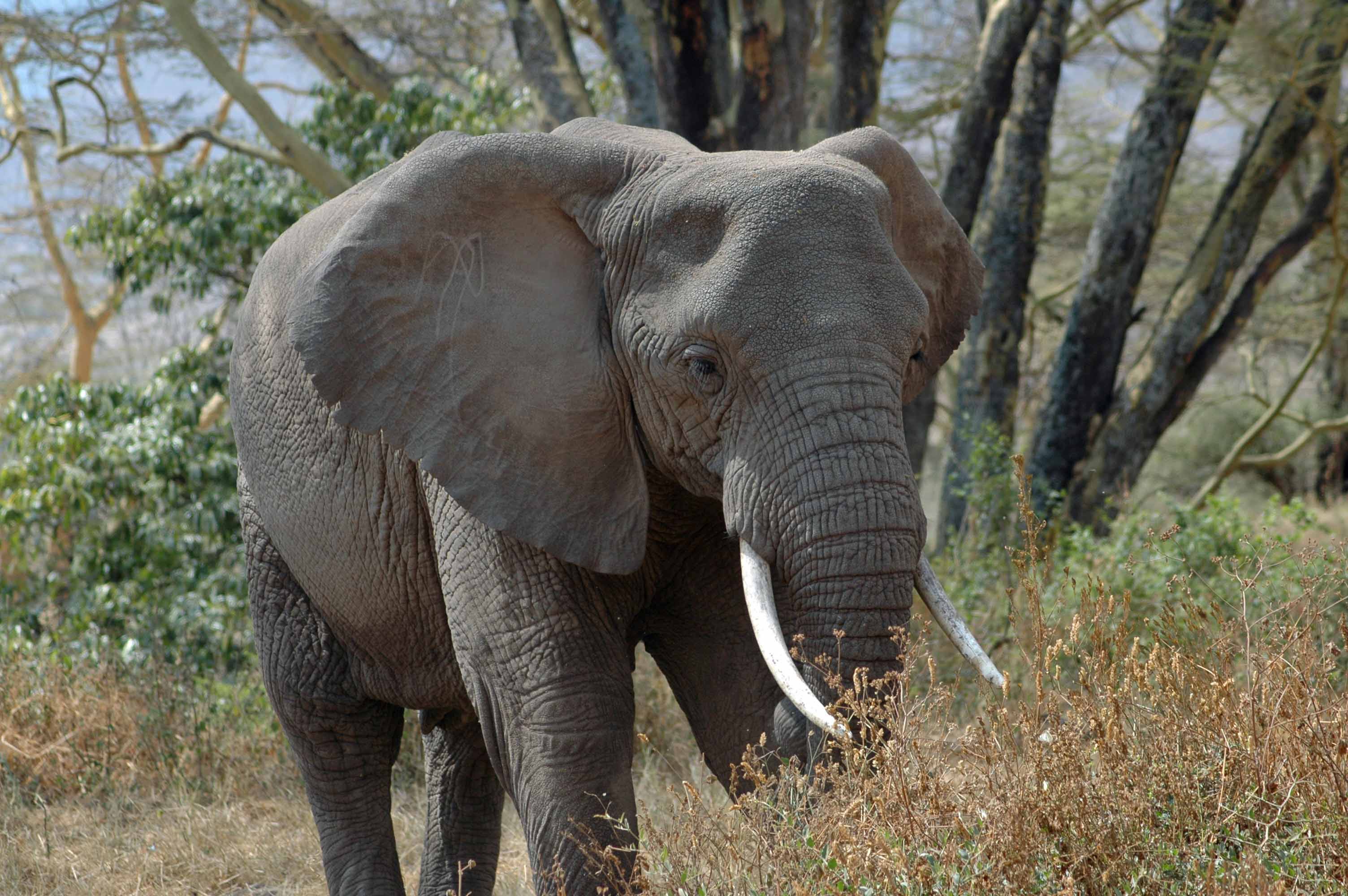
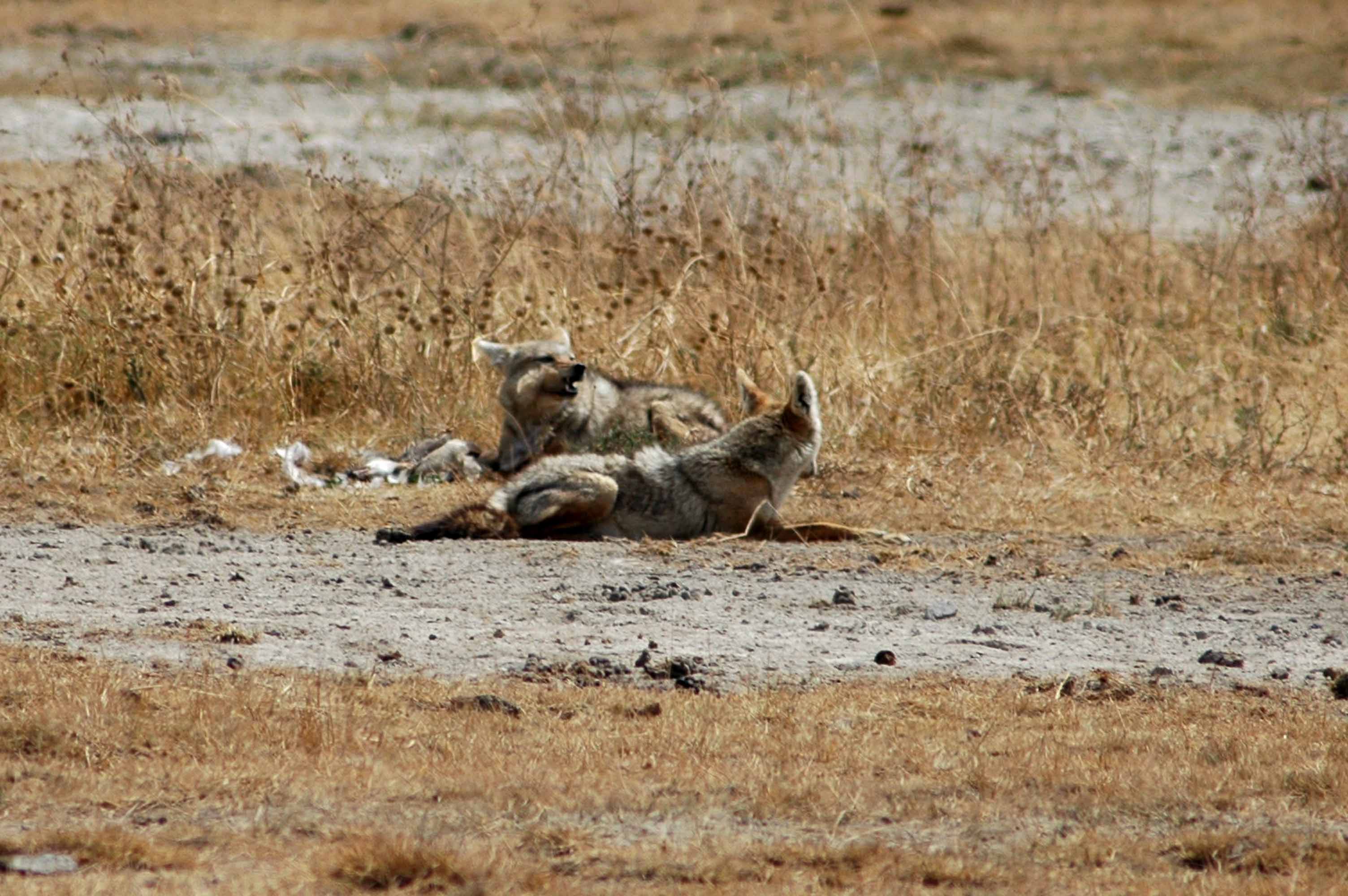

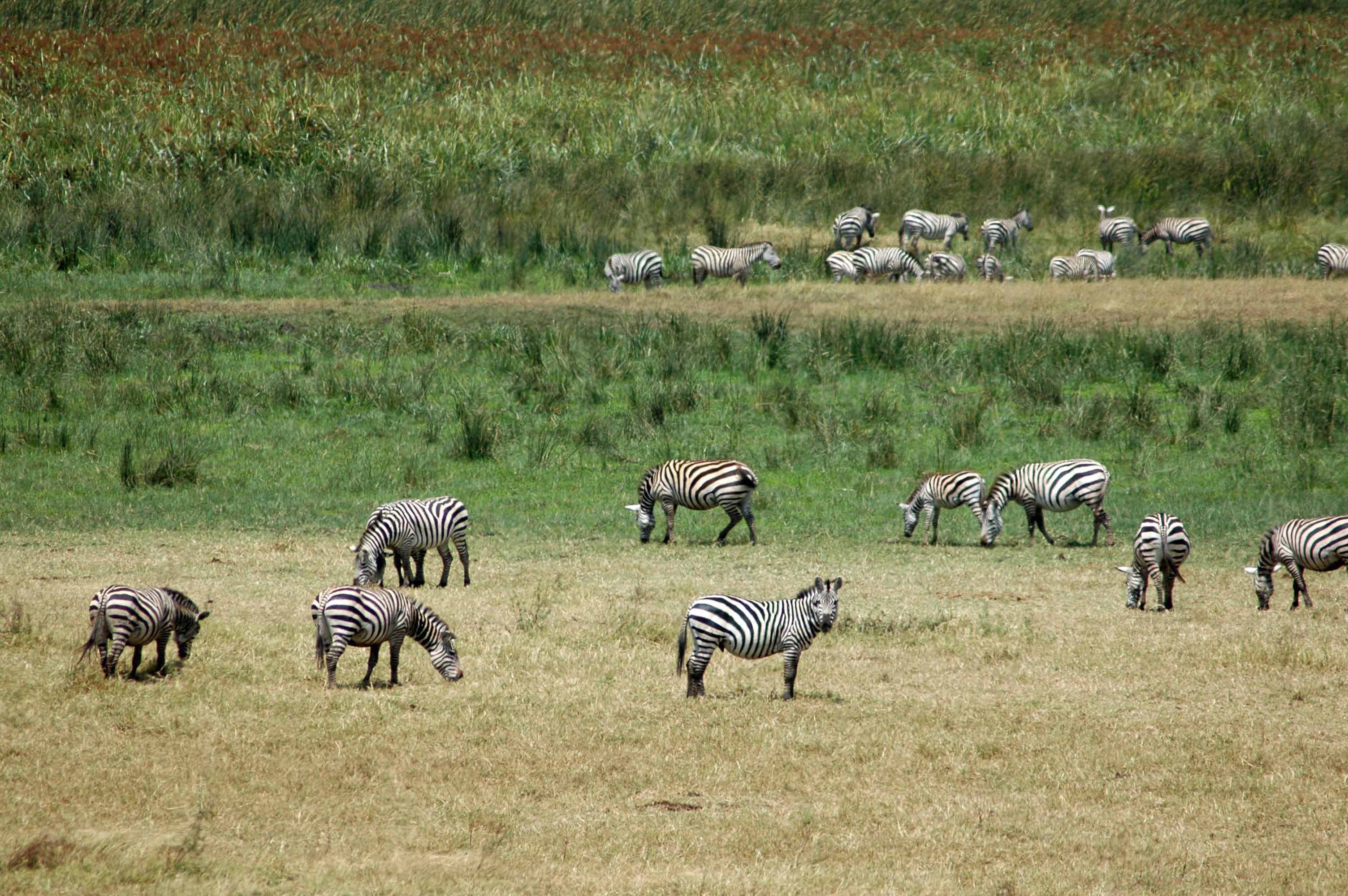
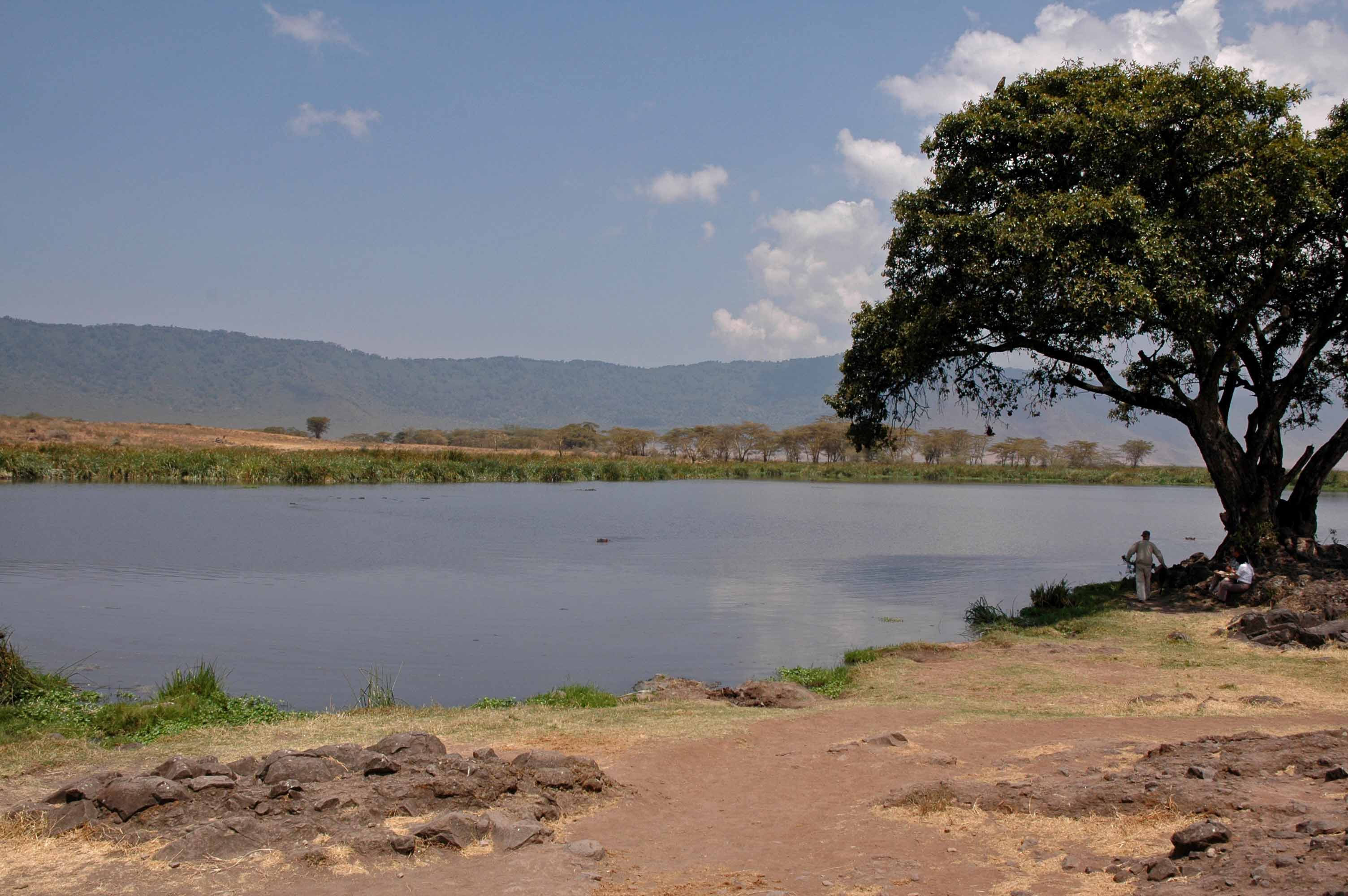
We finally called it a day and climbed back up the crater rim to get out. Suddenly, Kumbi got a call from Hashim, who was following a little ways back in the other rover. Apparently his rover had just quit. We reversed course and found him on the side of the road. Troubleshooting, cell phone calls and lots of very animated Swahili later, they declared it dead. (Déjà vu!) Something with the electronics this time. Weird, two rovers in two days. Usually, Land Rovers are very good vehicles, and are designed for this landscape. Well, once again all seven of us safari’ers, plus Kumbi, plus duffle bags, plus water squeezed into one rover and left Hashim stranded beside the road. (Poor Hashim!)
Continuing on, we hit the first paved road we’d seen in about a week. What a difference. I didn’t feel like my teeth were shaking loose. We reached Gibb’s Farm and were shown to our room. This is a very nice lodge snuggled in a garden oasis. Our "room" was an entire cottage all to ourselves. Running water, hot showers and electricity. Quite a difference from the last seven days. Honestly, it felt strange to be in such a nice place after a week in the tents. Nice, but maybe too nice. We both felt a little uncomfortable and admitted we sort of missed the tents. We slept well, though.
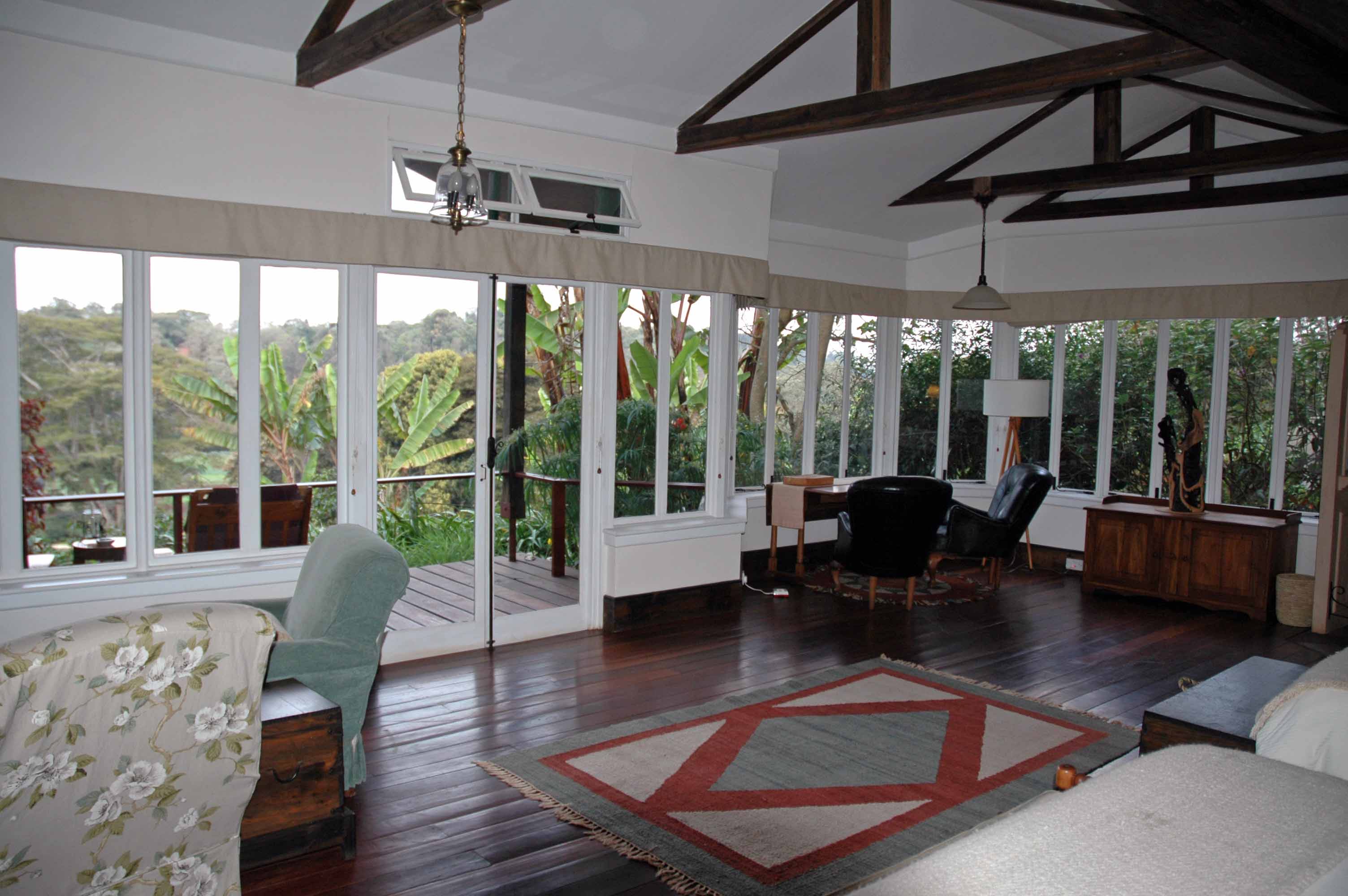

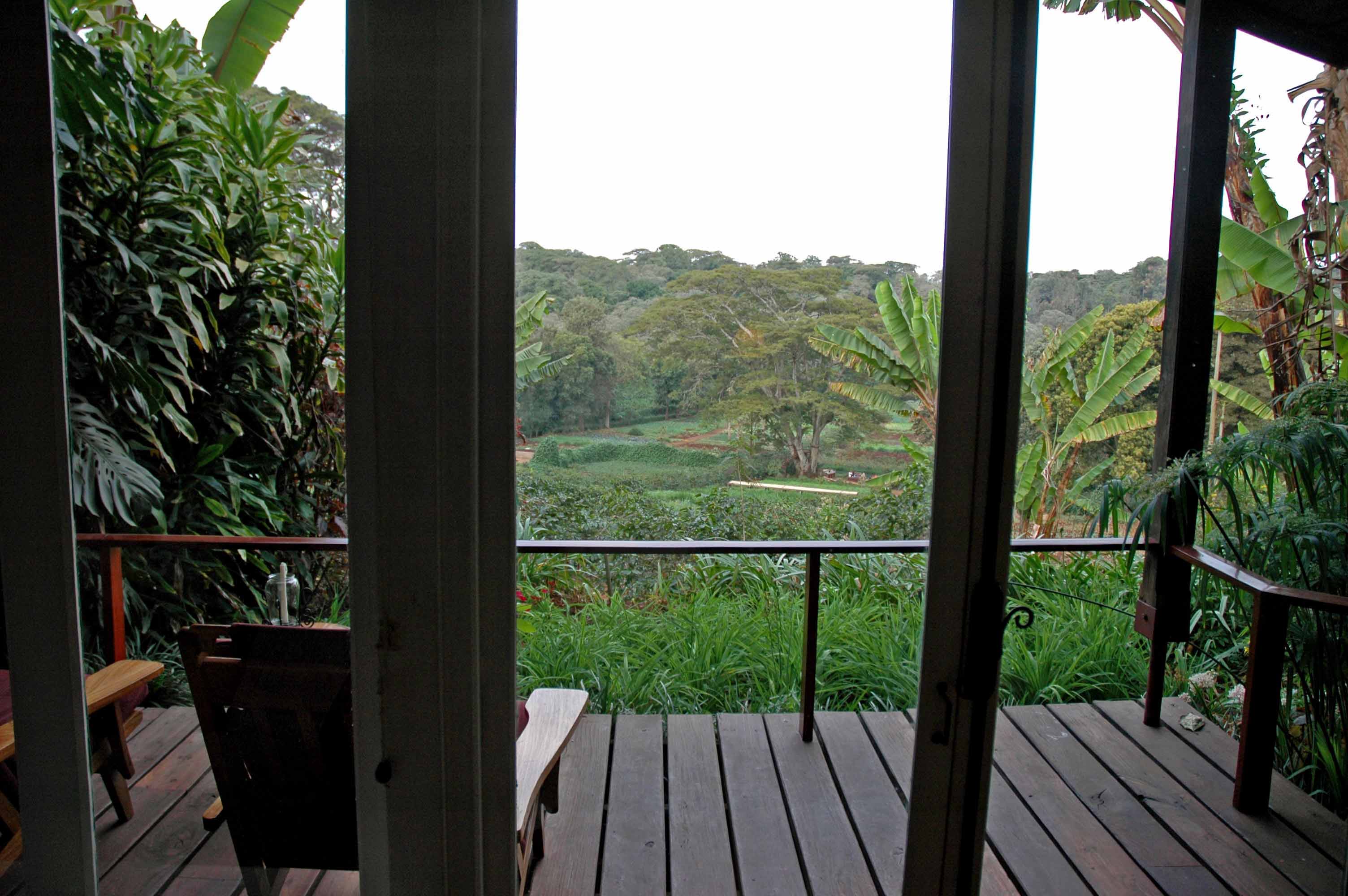
Click here for more pictures from Day 12
Day 13 - 8/19/13 - Monday.
Rest.
Today we slept late, got around to breakfast eventually, and then met our guide for a trip into town. We met a storyteller named Daniel there. He turned out to be part historian, part politician, part professor and fully passionate about his people and their history. He is from the Iraqw group of tribes. He talked about their history and customs, and showed us a traditional home that he built himself to show the next generation how their ancestors had lived. The house is built partly underground and is largely designed to protect them from the Masai. He said that the Masai would come in the night and steal the cattle. A much different story than we had heard from the Masai. He also showed us how they generated methane for their lights and cooking from cattle waste.

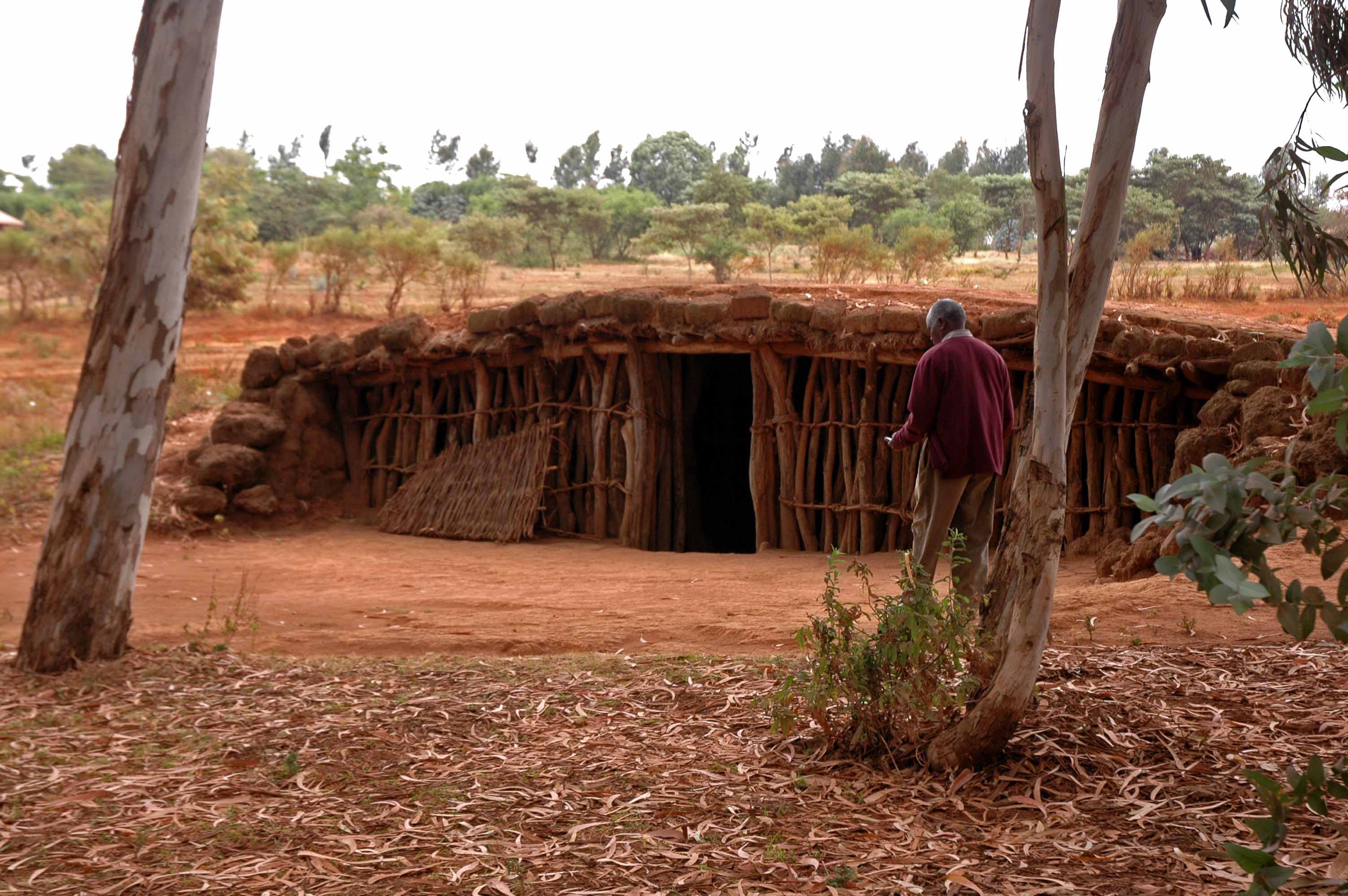
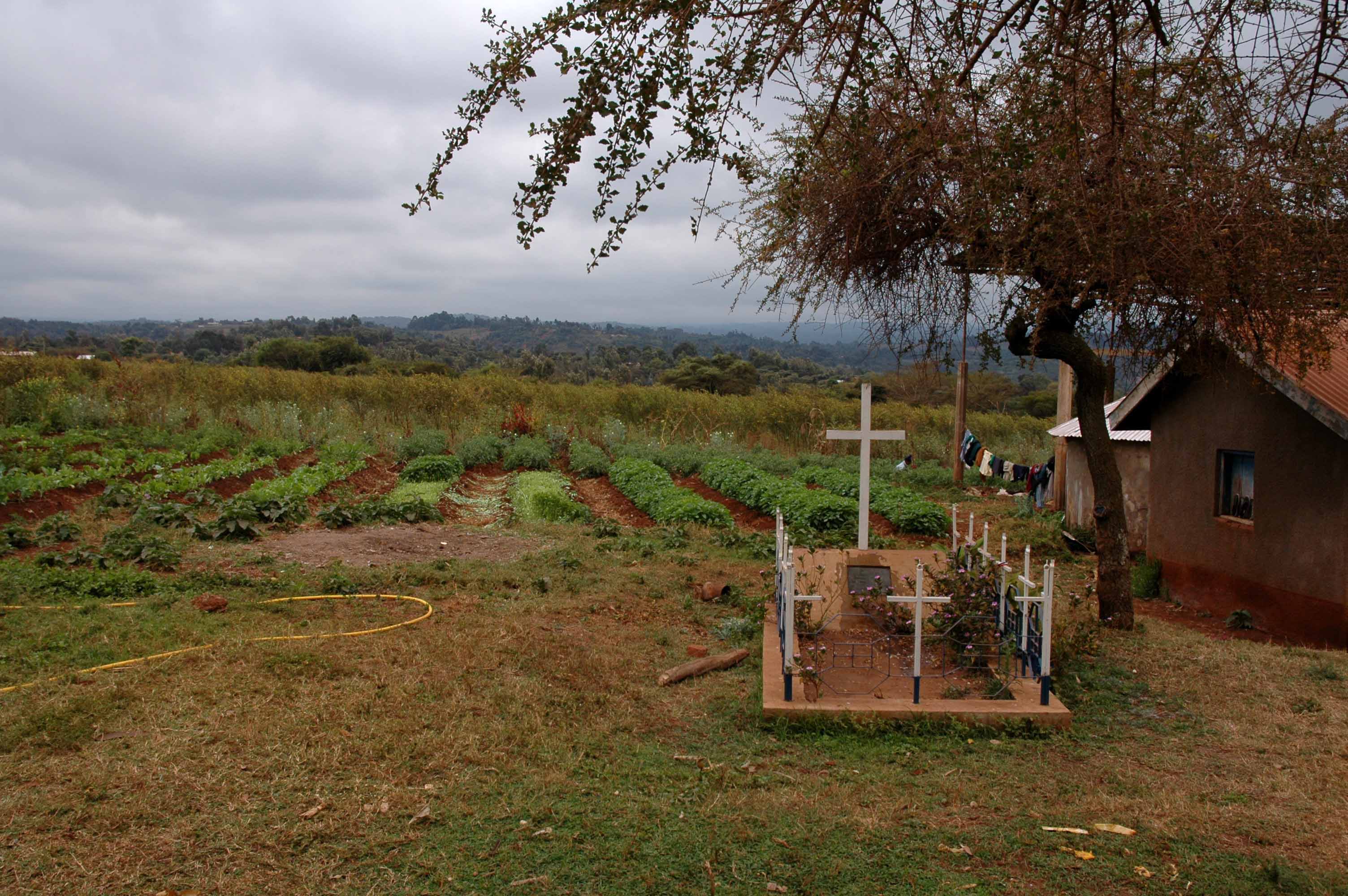
(Click photos to see larger size)
At one point while we and our fellow travelers were all sitting in a semicircle listening to Daniel, one of the farm dogs came over to check us out. After a quick sniff at the others, he snuggled up to M and asked for a neck scratch. We'd been warned before that the African dogs were working dogs, and served as an alarm system and defender of the livestock. They were trained to stand up to lions, and were NOT to be petted. No problem. A dog that isn't afraid to take down a lion? I have no problem not reaching out to HIM. But then along comes this one and immediately picks M to be his new best friend by putting his head in her lap. And after spending a few minutes with her, he came over to me and did the same thing. What were we supposed to do? We didn't want to be rude and do anything to interrupt Daniel, and we sure didn't want to lose a limb, but the the dog was clearly wanting to say hello. So, we snuck in a few surreptitious scratches to the neck and ears, and eventually he wandered off.
We went back to the farm for a big lunch and then to our cabins to rest for the afternoon. We were sitting on our veranda, enjoying the afternoon, M reading and I was cleaning my camera. Minding our own business. Then I dropped my lens brush and it fell through the boards of the floor. No problem – it was easy to reach with a stick. I nudged it out and noticed there were some ants on it. M picked it up and suddenly there was a swarm of ants all over her. Attack of the Killer Ants! And, they bite! A coordinated counterattack of brushing,stomping, and liberal use of insect repellent finally pushed the enemy lines back. Unfortunately, M got bitten about 8 or 10 times. We retired to the cabin to tend to battle wounds.
One nap later it's time for a late afternoon stroll through the gardens, chatting about elephants at the Tembo Fire, and dinner.

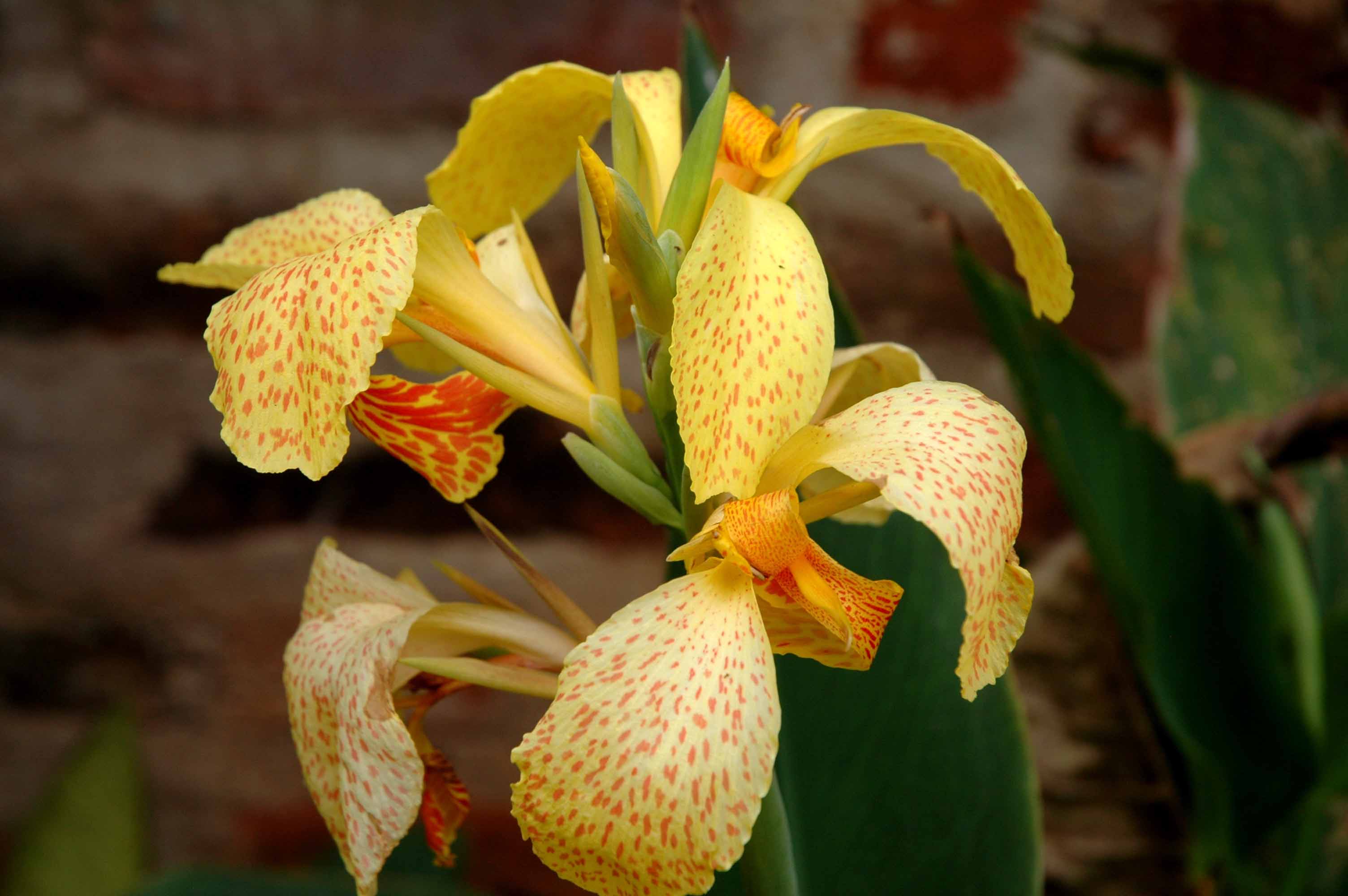

Click here for more pictures from Day 13
Day 14 - 8/20/13 - Tuesday.
Tarangire National Park.
Today we set off for Tarangire National Park. We stopped along the way for a little shopping first though. We visited a woodcarving group of about five men who had escaped the civil war in Mozambique. They do amazing hand carving, from simple bowls up to elaborate six-foot tall sculptures from a single piece of ebony wood. Then we drove into town again and visited a fabric shop, where M found some nice fabric.
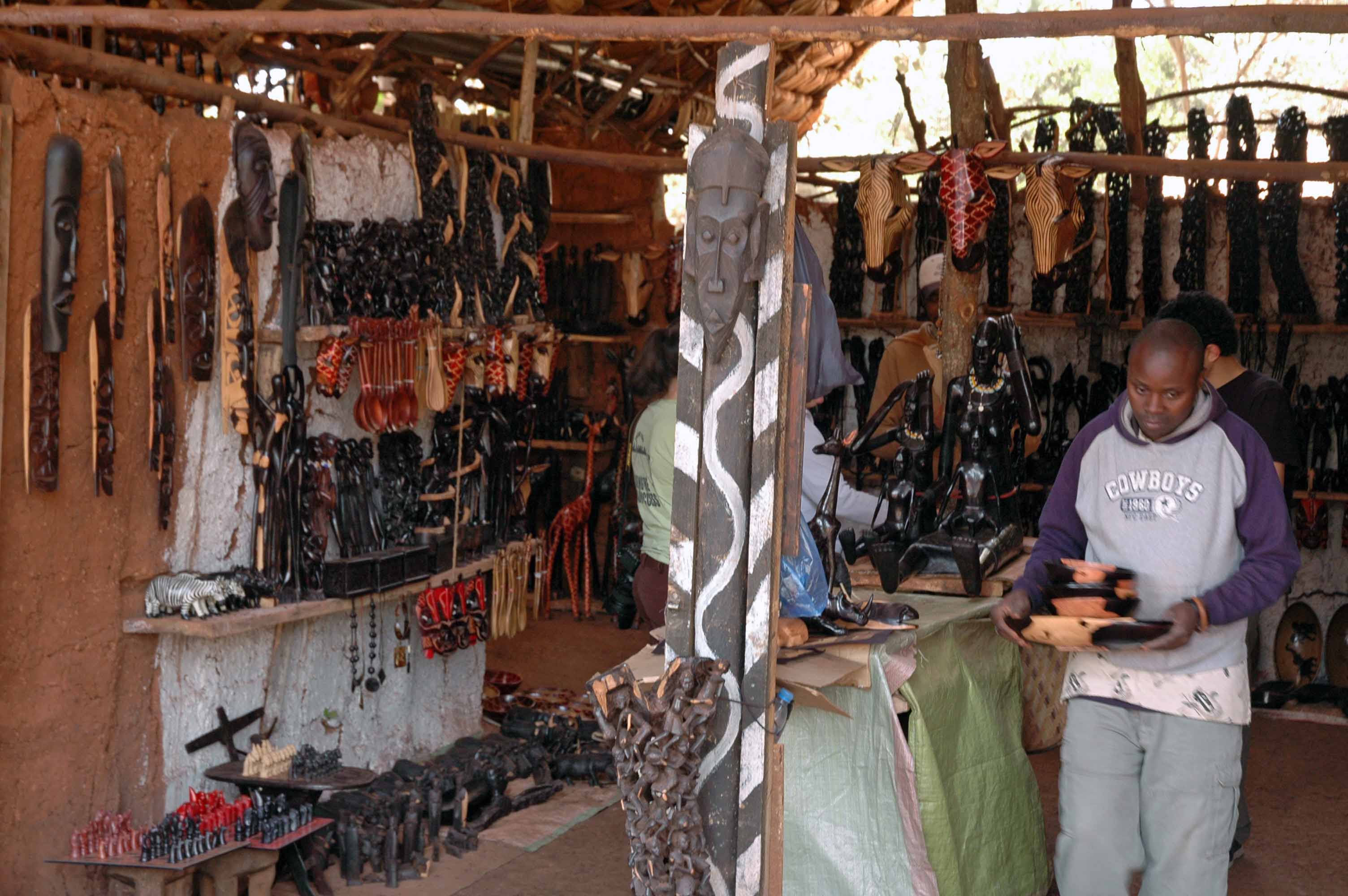

(Click photos to see larger size)
We left town, and stayed on paved roads until about lunchtime, when we stopped to eat at the entrance to the national park. We squeezed in a little more shopping there at the entrance, then spent the afternoon slowly making our way through the park. We saw more wildebeests, zebras, lots of elephants, a leopard in a tree, and several varieties of antelope.
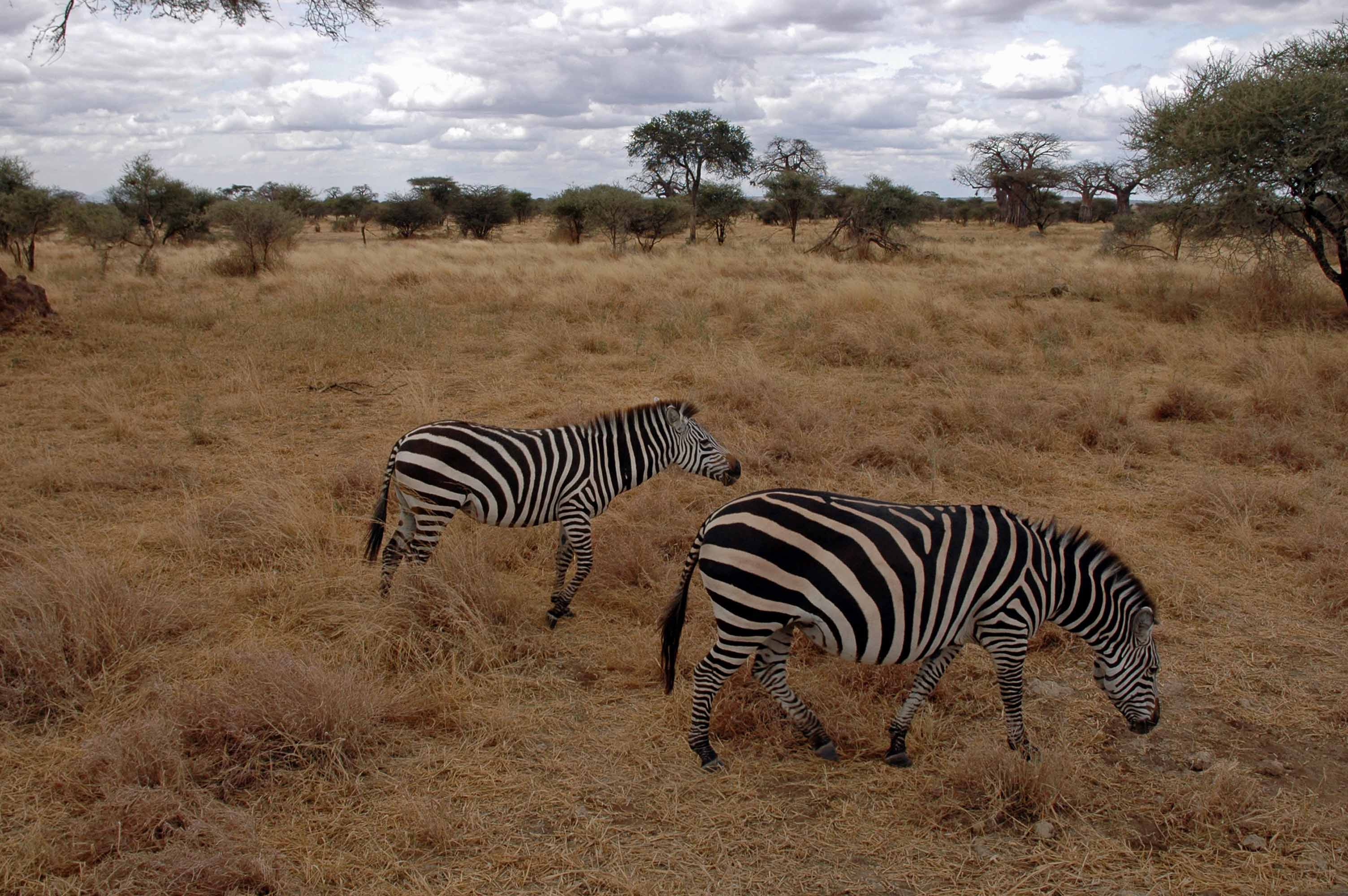
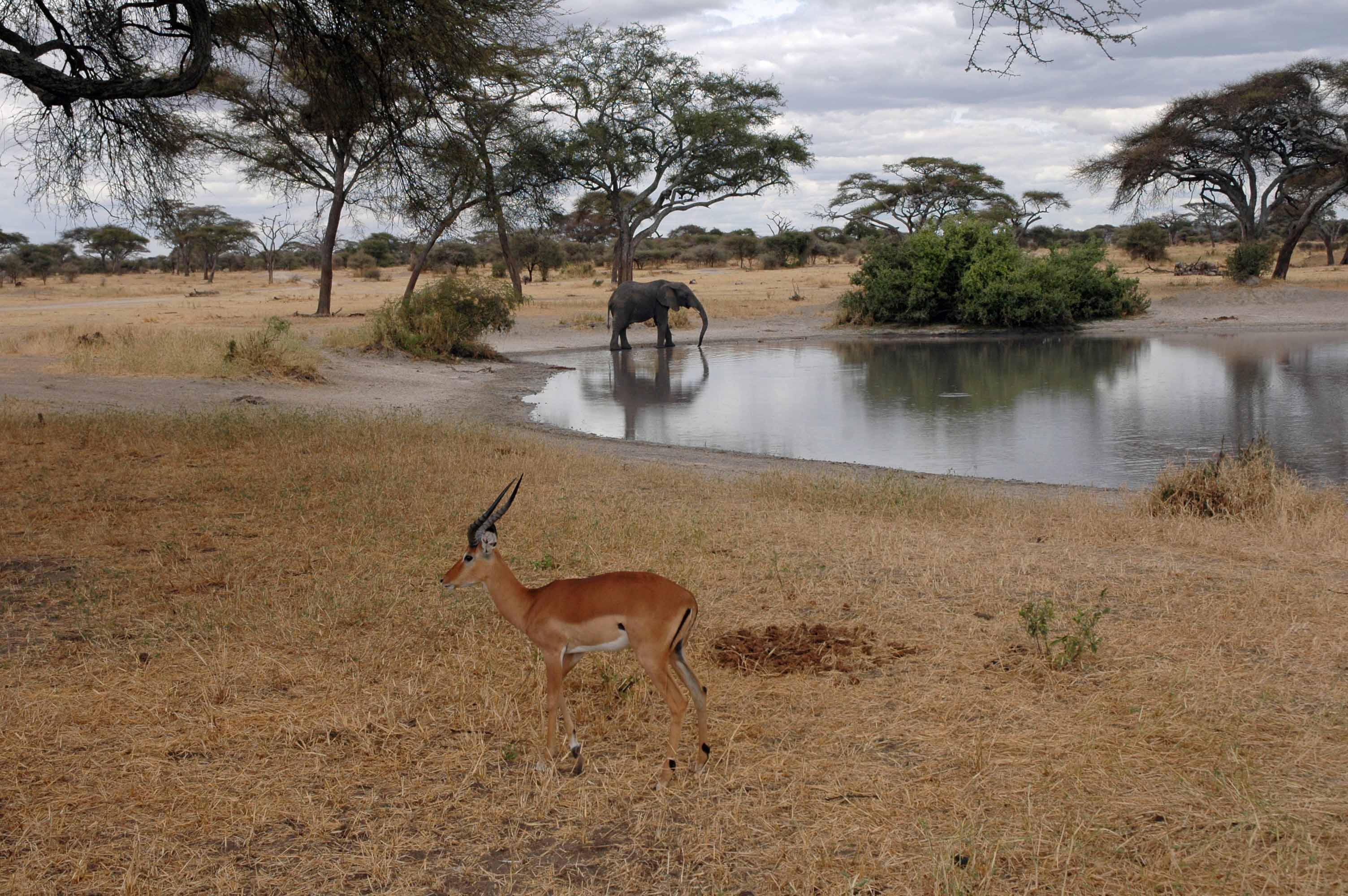

We saw a group of elephants at one point moving in a single file, and our guide quickly positioned us ahead of them and turned off the engine. We sat in wonder as they slowly marched across the road in front of us, the only sound that of their footsteps in the grass. There were several young with them who were kept in the center for protection. There was no doubt the older ones would fight to protect the younger ones, even to death. Magical.
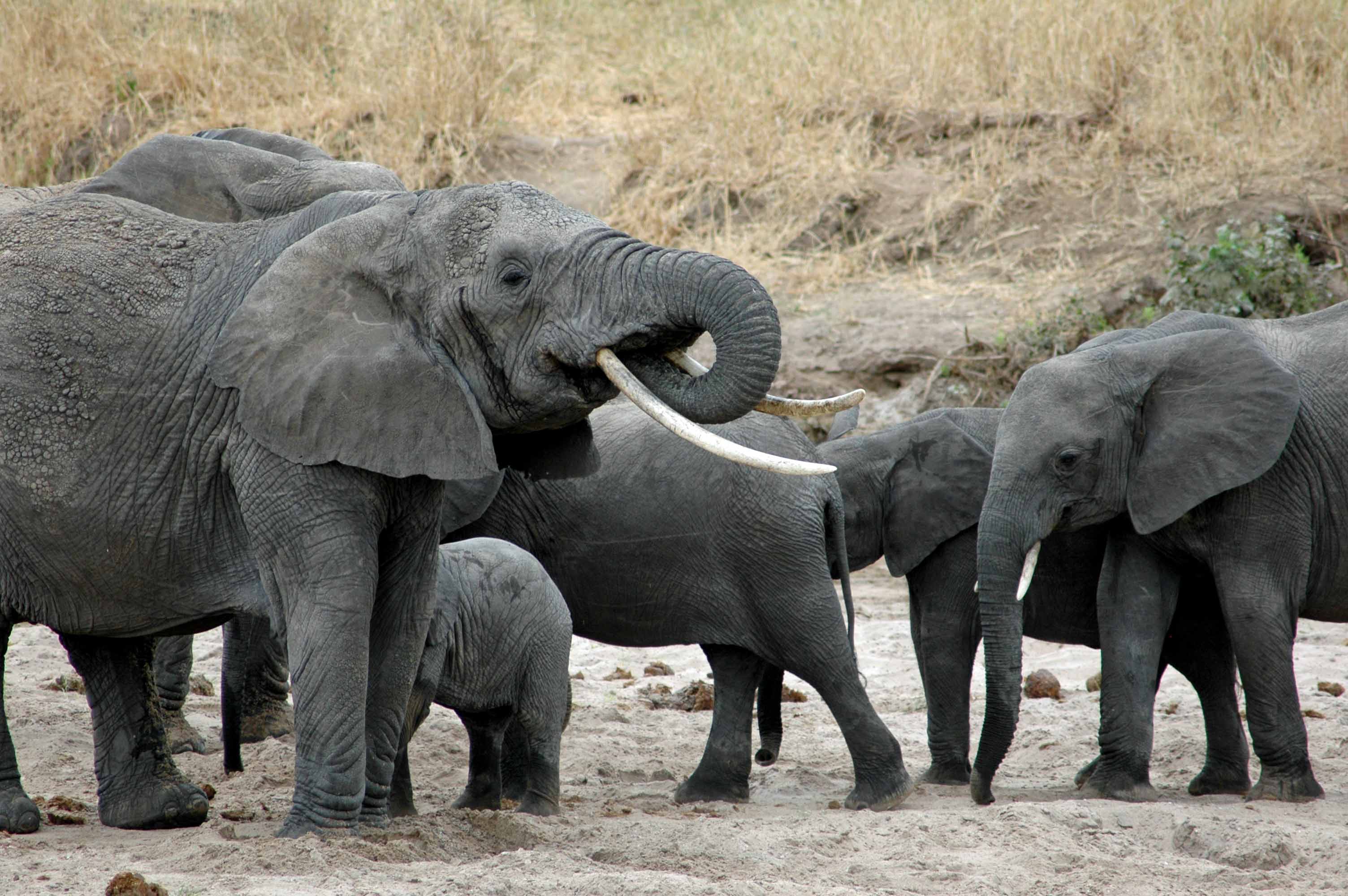
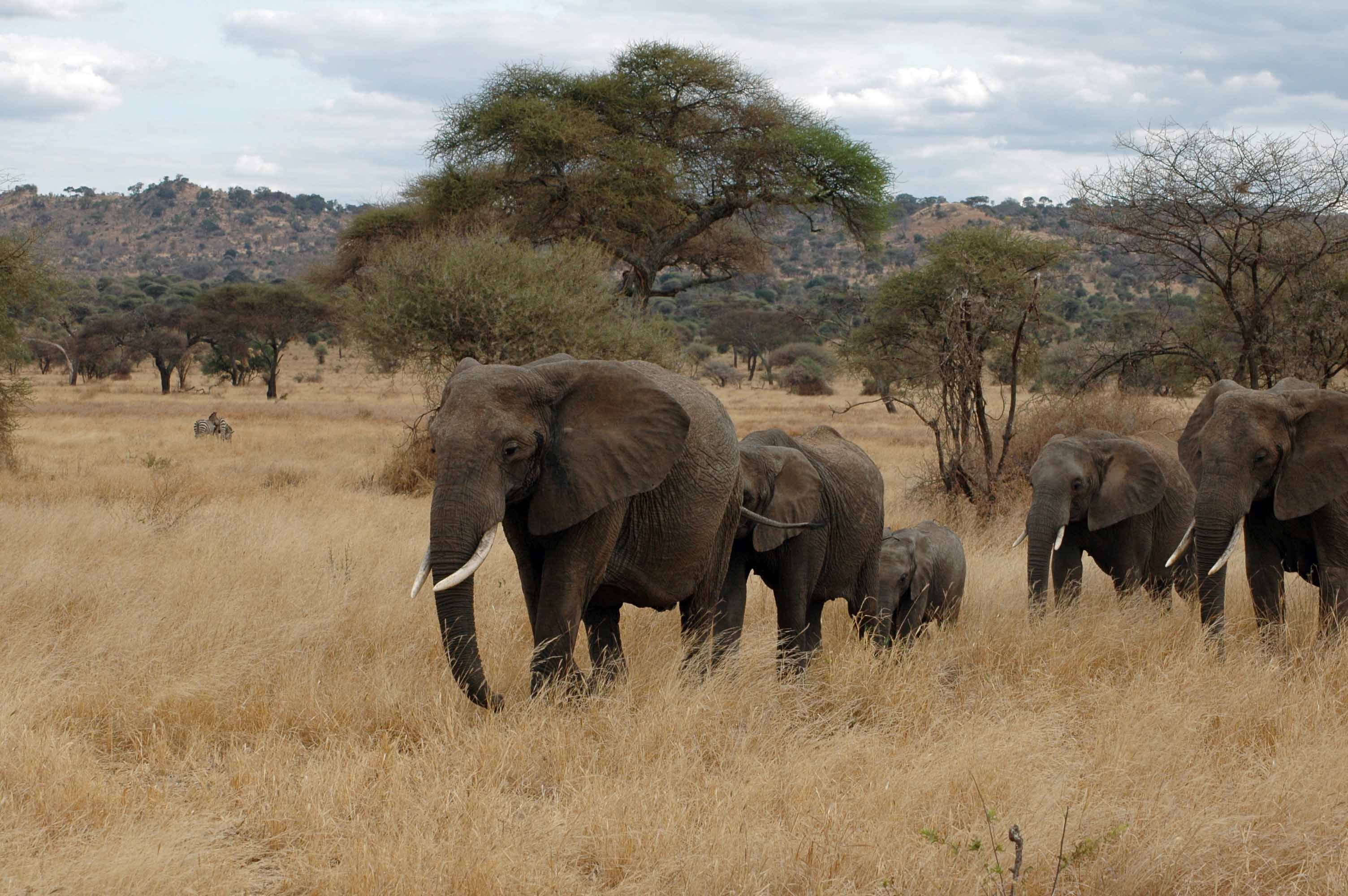

Finally it was time to make our way to our new camp. Back to tents. Oddly, leaving the luxury of Gibbs Farm to return to the bush a life in the tents seemed a lot like coming home. We finished the day relaxing under a baobab tree to watch the sunset.



Click here for more pictures from Day 14
Day 15 - 8/21/13 - Wednesday.
Tarangire National Park.
Today we spent all day touring the Tarangire National Park. So many animals! Cape buffalo, wildebeests, zebras, impalas, water bucks and a male lion lying under a tree. And elephants. Lots of elephants. The is the place to see elephants.

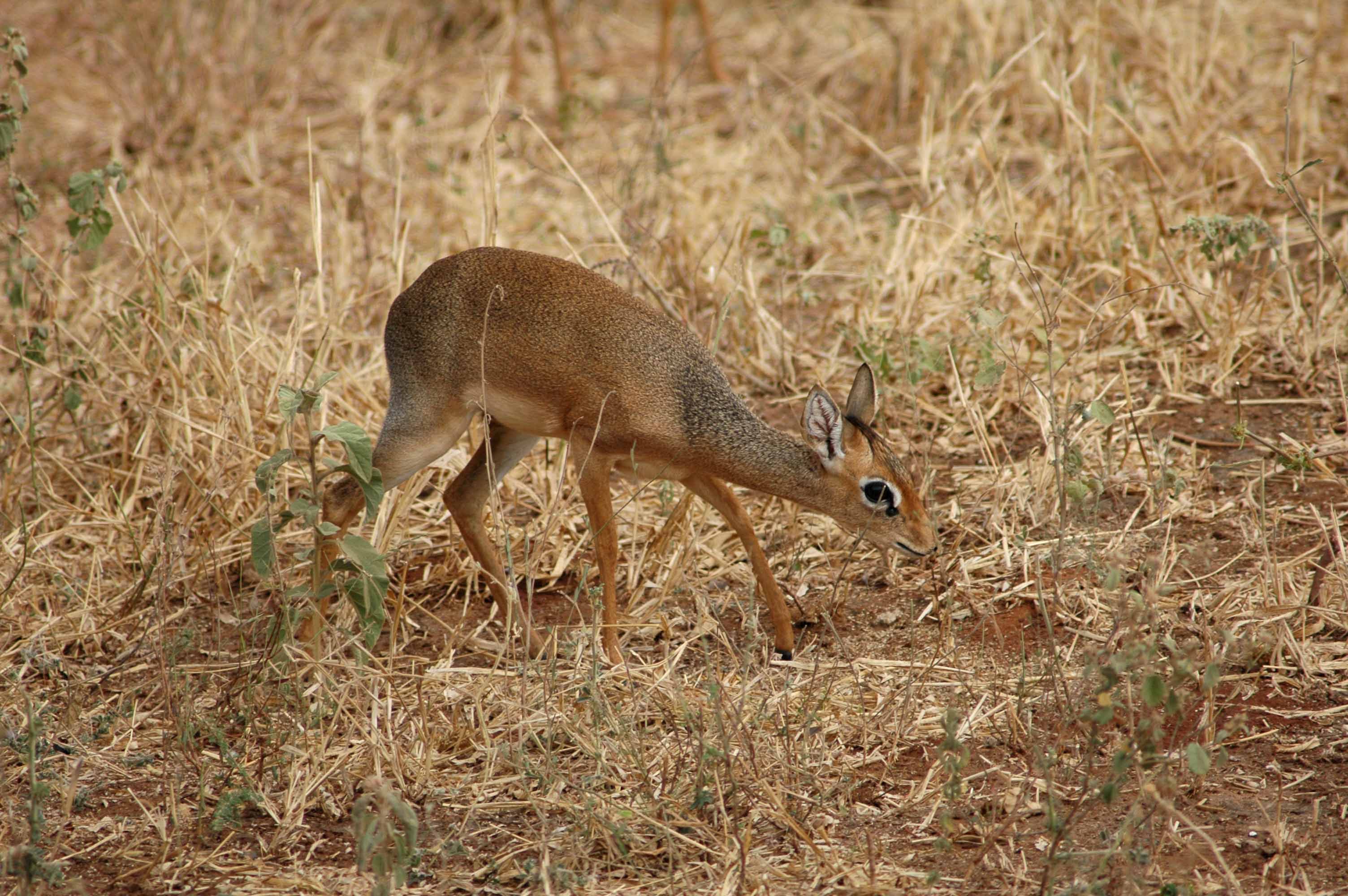

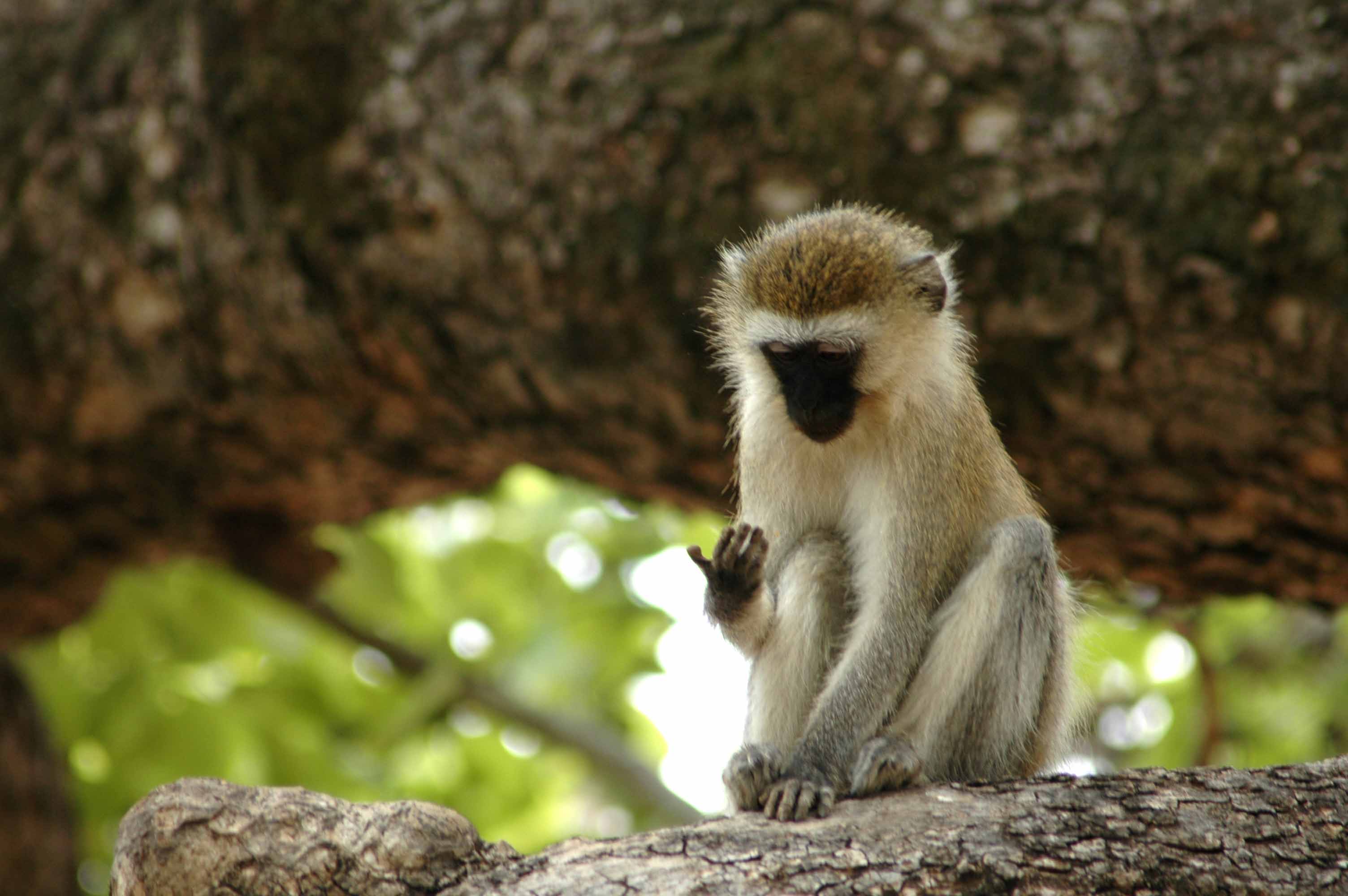

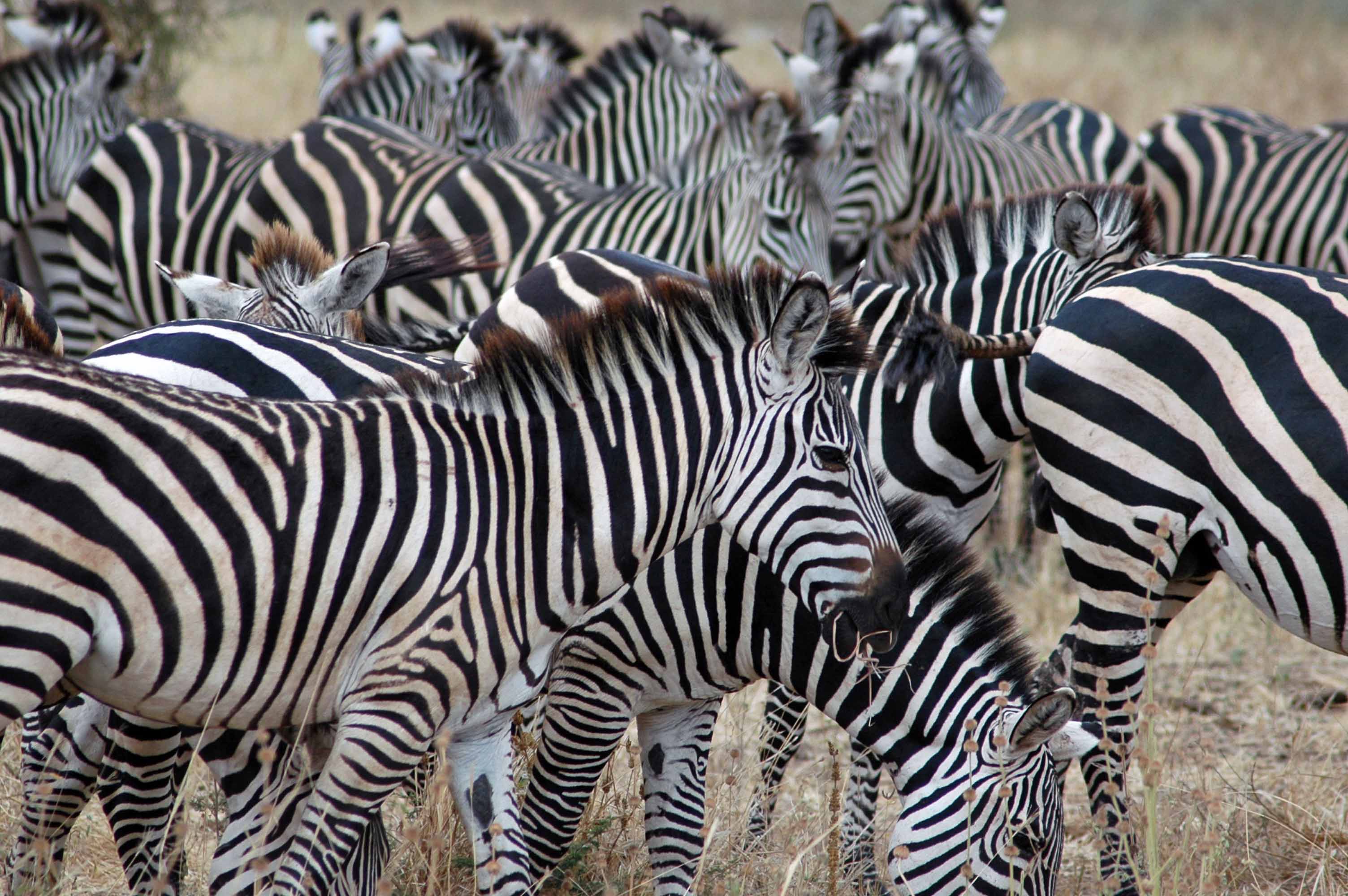



(Click photos to see larger size)
On two separate occasions, we watched groups of elephants coming down to the water in a large marshy area. They were playing, splashing, spraying water on each other and generally frolicking in the water, having a great time. They were dunking themselves entirely so that only their trunks were above water to breathe. It got so deep in spots that the smallest babies were completely under water except for their tiny little trunks. The elephant groups are all adult females related to one another (sisters, aunts, daughters, etc.) and young ones. The adults are very protective of the young elephants. We watched as they formed together with the young in the middle as an unwelcome male approached.
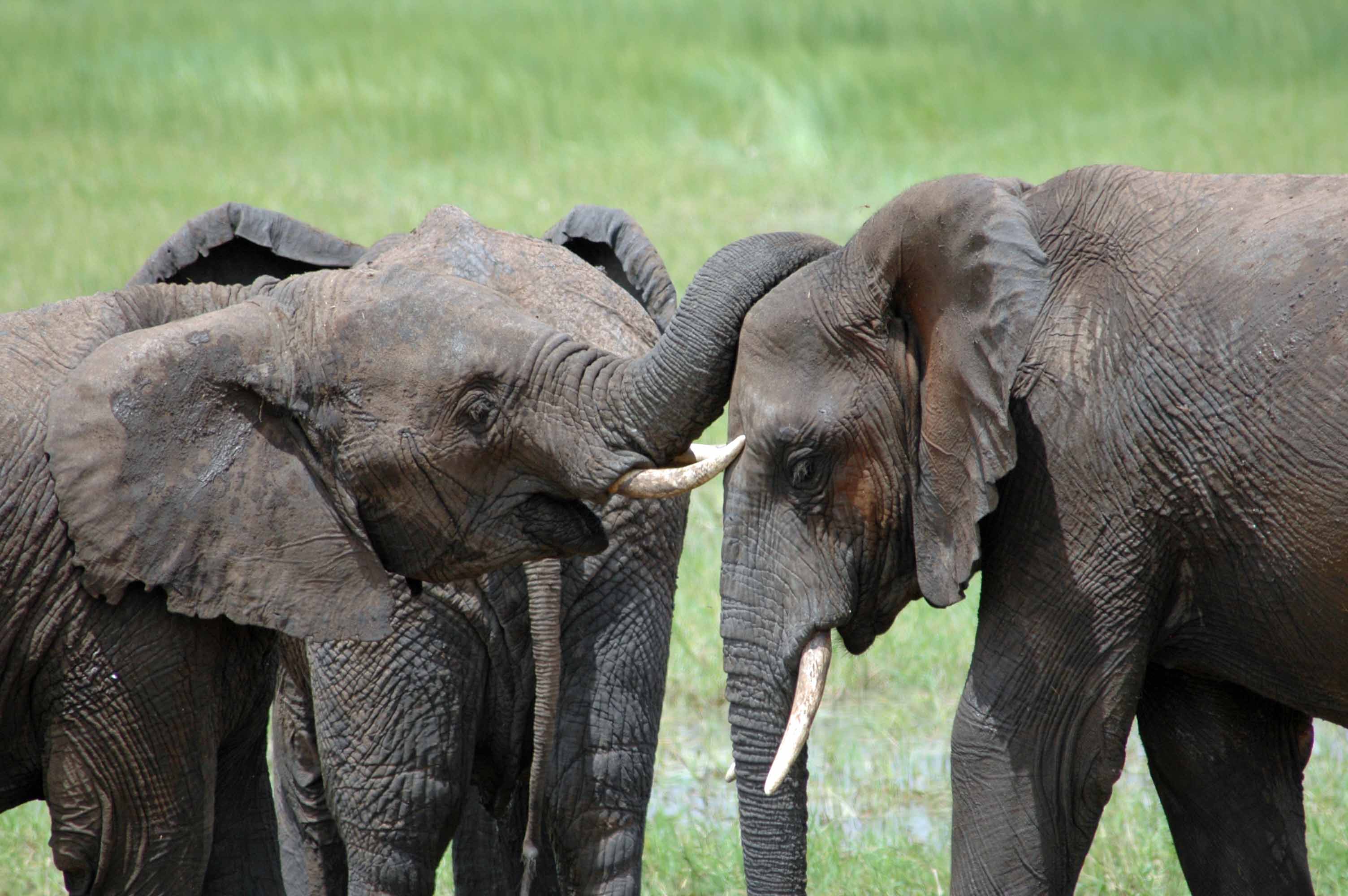
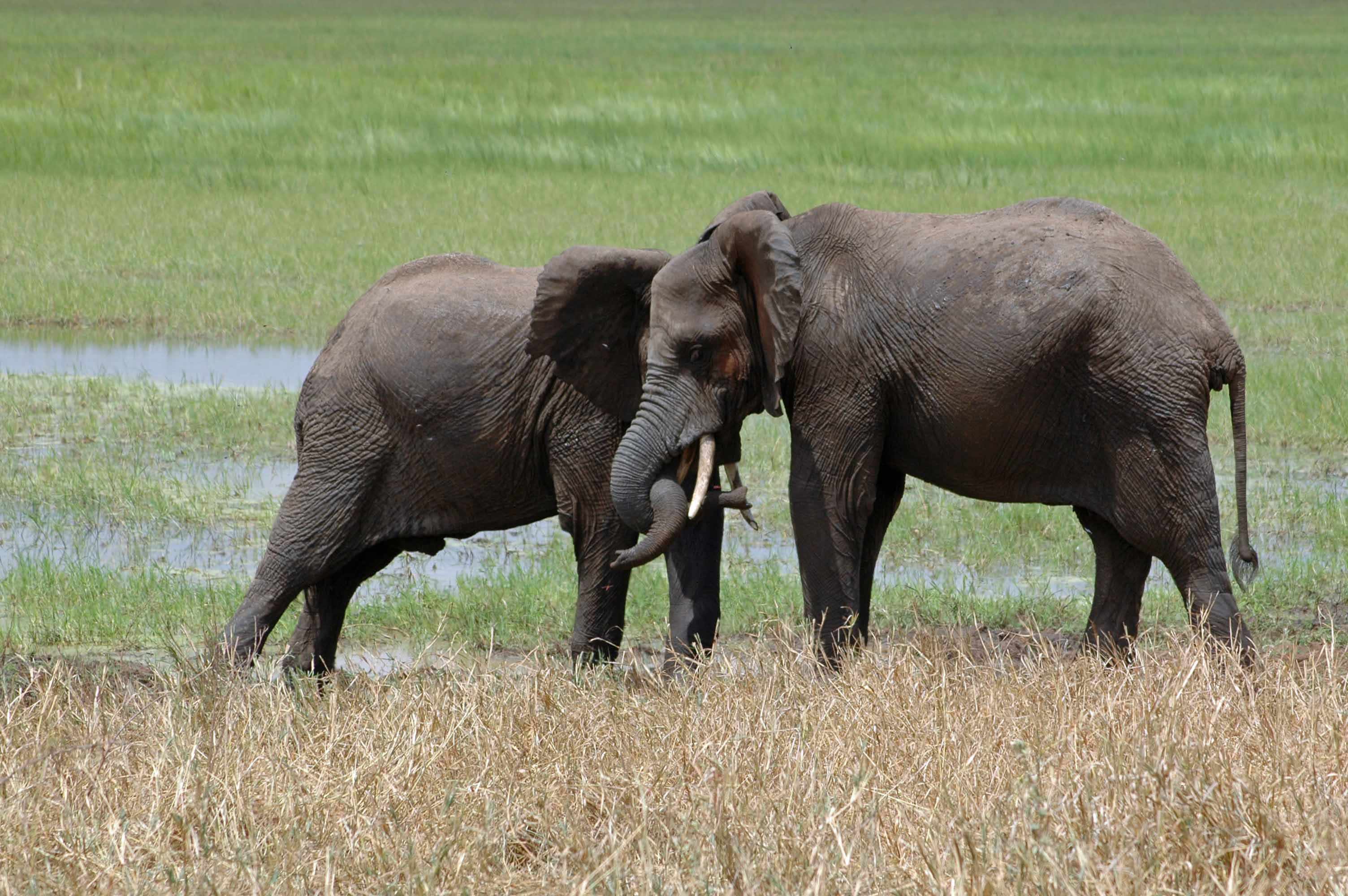

In the morning we saw a pride of lions spread across at least an acre, all lying down. A small stream ran through the middle of them and we saw one of the females was wearing a radio collar. Our guide explained that researchers kept track of her. Also that she was probably the leader so that wherever she went, the rest of the pride follows. Thus, with one collar, the researchers were able to track the whole pride.

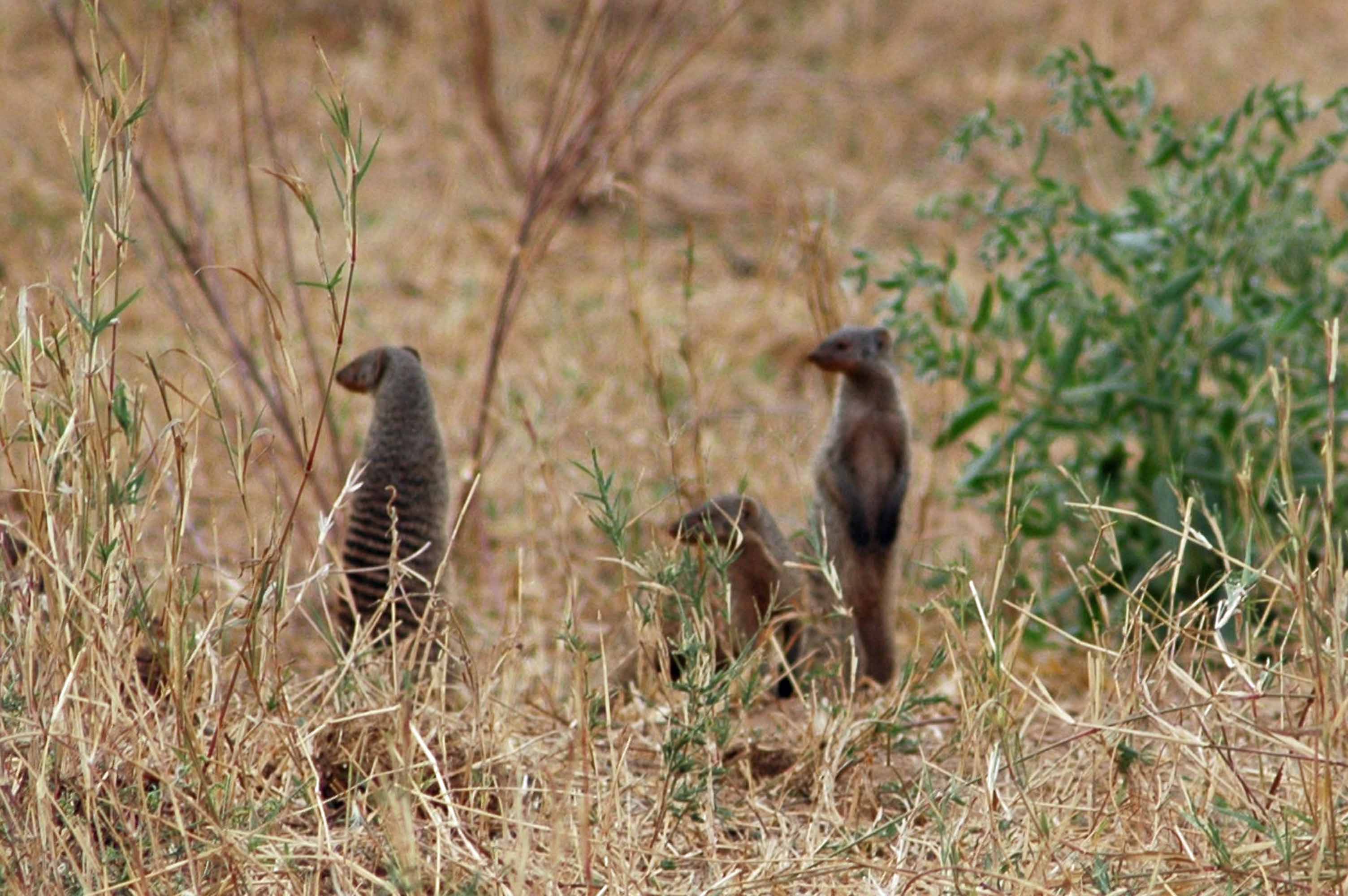
As we were watching, a bunch of mongooses came through on both sides of the stream. It was like being handed a gift, and the lions took advantage of the opportunity. There were a couple of quick chases, and we watched as the mongooses closest to us got away. Things went differently on the other side of the stream. We didn't see it all because of the tall grass, but there was a lot of sudden activity and then nothing. Our guide confirmed that the lions had won. He also said they must be very hungry to go after the mongoose because they're very fast, and very small, so they're not worth the effort.
Life and Death. We've seen it go both ways over the last couple of weeks. We're so far removed from this in our usual lives, that it's a shock when we do see death first hand. Here, it's part of every moment of every day. Life for one means death for another. Oddly, they are the same. Life and death are not two sides of a coin, but two reflections of the same truth.
Lunch was a boxed meal under an awning overlooking the marsh. Just a brief pause to get out of the cars. To rest. To eat. Then onward. As the afternoon passed, we finally turned around and made our way back to the camp. Dusty and tired.

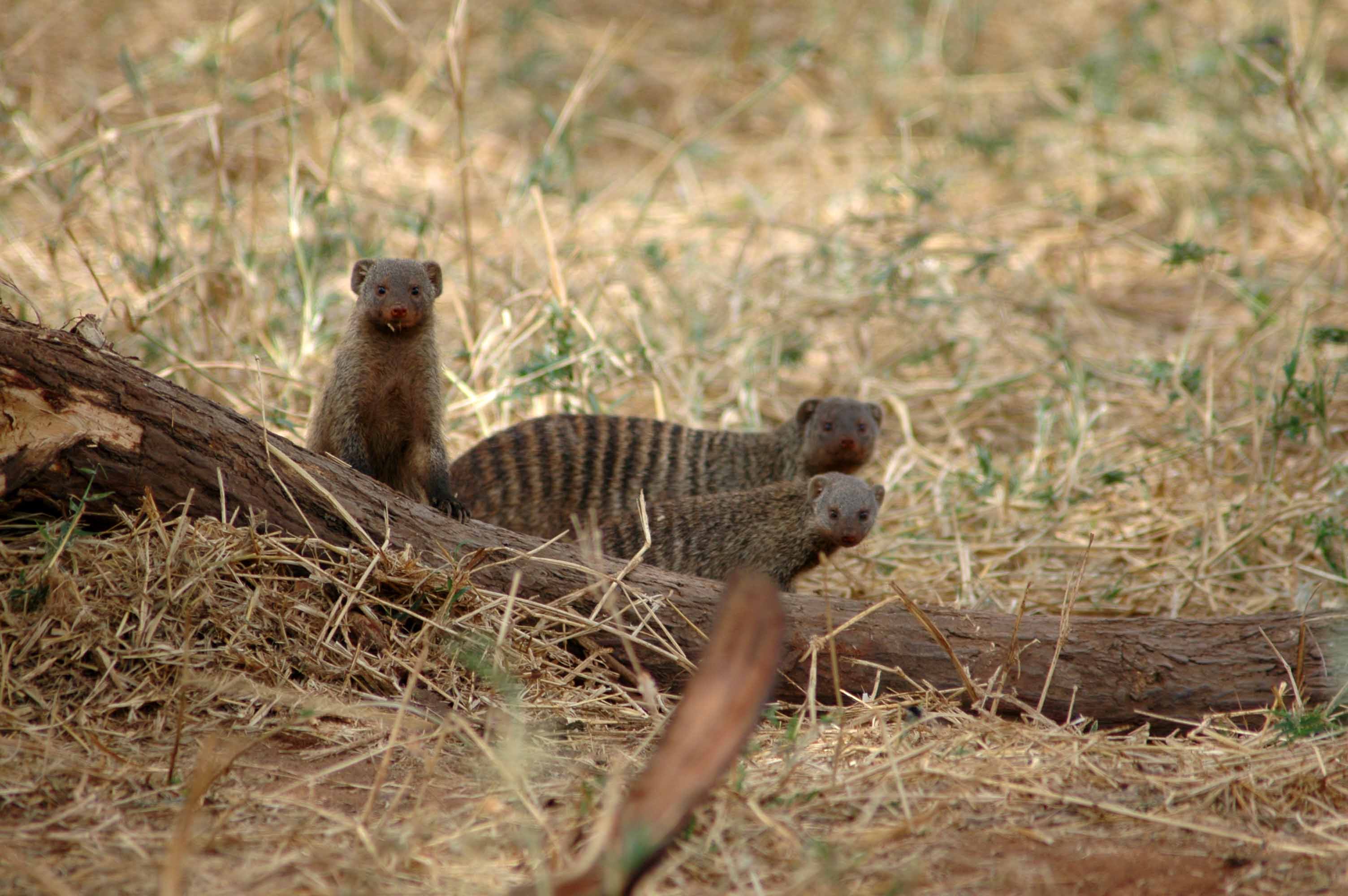

That's when they attacked.
What followed was an epic battle of humans vs. insects. They came in two waves. First the tse-tse flies.. Only a mile or two short of our camp, they swarmed in massive numbers. The slapping sound of battle punctuated by the occasional "Ow!" defined the next 30 minutes. We fired back with everything we had: hands, fly swatters, deet and citronella. There were casualties on both sides and I myself was wounded by friendly fire, slapping myself in the face and launching my glasses several feet. Eyes closed tight against the constant onslaught, we mercifully arrived at the camp. We executed perfect shoulder rolls out of the rover before it came to a stop and ran for our lives for the safety of our screened tents. Finally reaching sanctuary, we lay in our tents, gasping for breath, and feeling lucky that we'd survived.
Little did we know the battle was not yet over.
We rested, washed, changed, and fell into a general state of smugness over our "victory." Before heading out for the usual gathering at the campfire before dinner, we drenched ourselves in deet and citronella. (We weren't complete fools.)
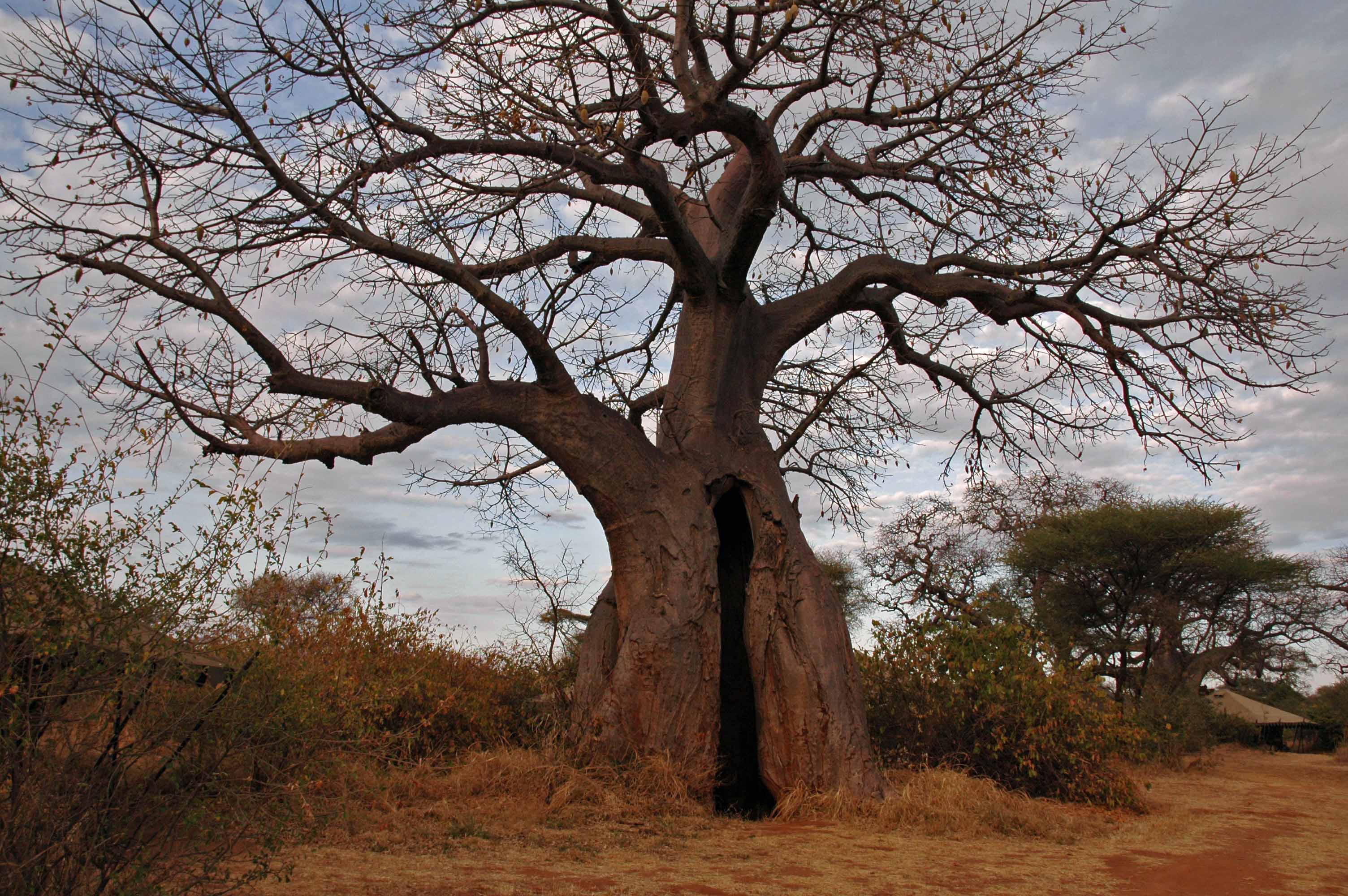
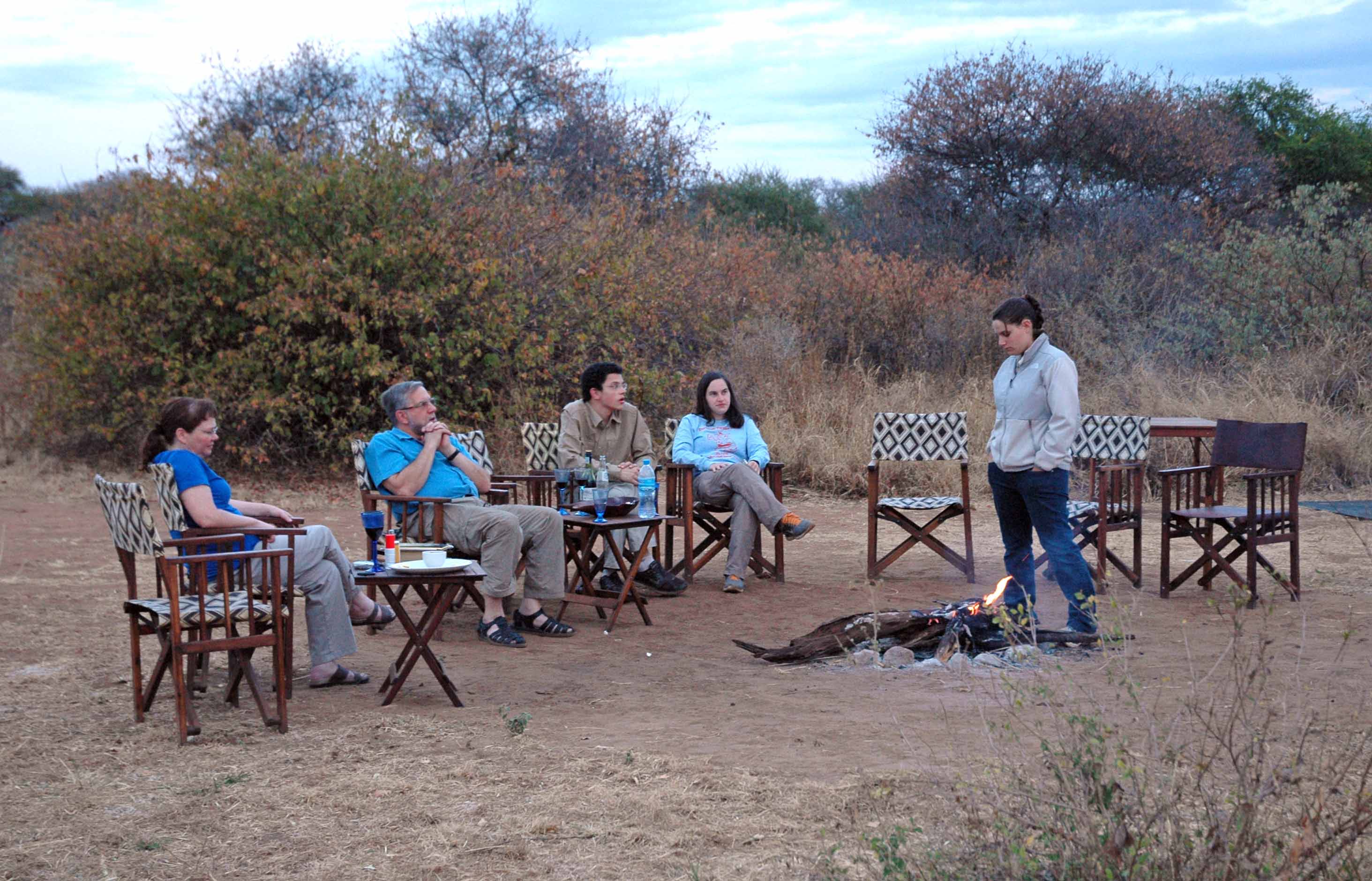

Sitting there by the fire, I noticed that the previous clouds of tse-tse flies were now replaced by a large number of bees that weren't attacking, but were hovering and buzzing about in a most annoying way.
That's when it happened.
Like an assassin’s bullet, one of the bees landed on M's arm and - totally unprovoked - stung her. "Ow!." "*@%#!" She brushed the bee away and we both gaped in horror as we saw the stinger still in her arm. She quickly plucked it out, but the damage was done. Apparently, African killer bees really ARE more aggressive! (Don't worry... M survived.)
Click here for more pictures from Day 15
Day 16 - 8/22/13 - Thursday.
Departure.
Today we drove back to Arusha, having left it by plane 11 days ago. We went straight to the Cultural Center and had lunch. At the center, there are a large number of local artists who work mostly with old recyclable materials, like glass bottles and scrap metal. They melt down the old bottles and such, and craft amazing pieces of art. They sell the art to tourists like us for the most part, earning a living for themselves. Perhaps the most interesting part of this story is that they are disabled people – blind, wheelchair bound, etc – and have been cast off from society as... well... cast offs. Despite this, they have found a way to turn old trash into inspiring art, and support themselves in the process. Take that, society!
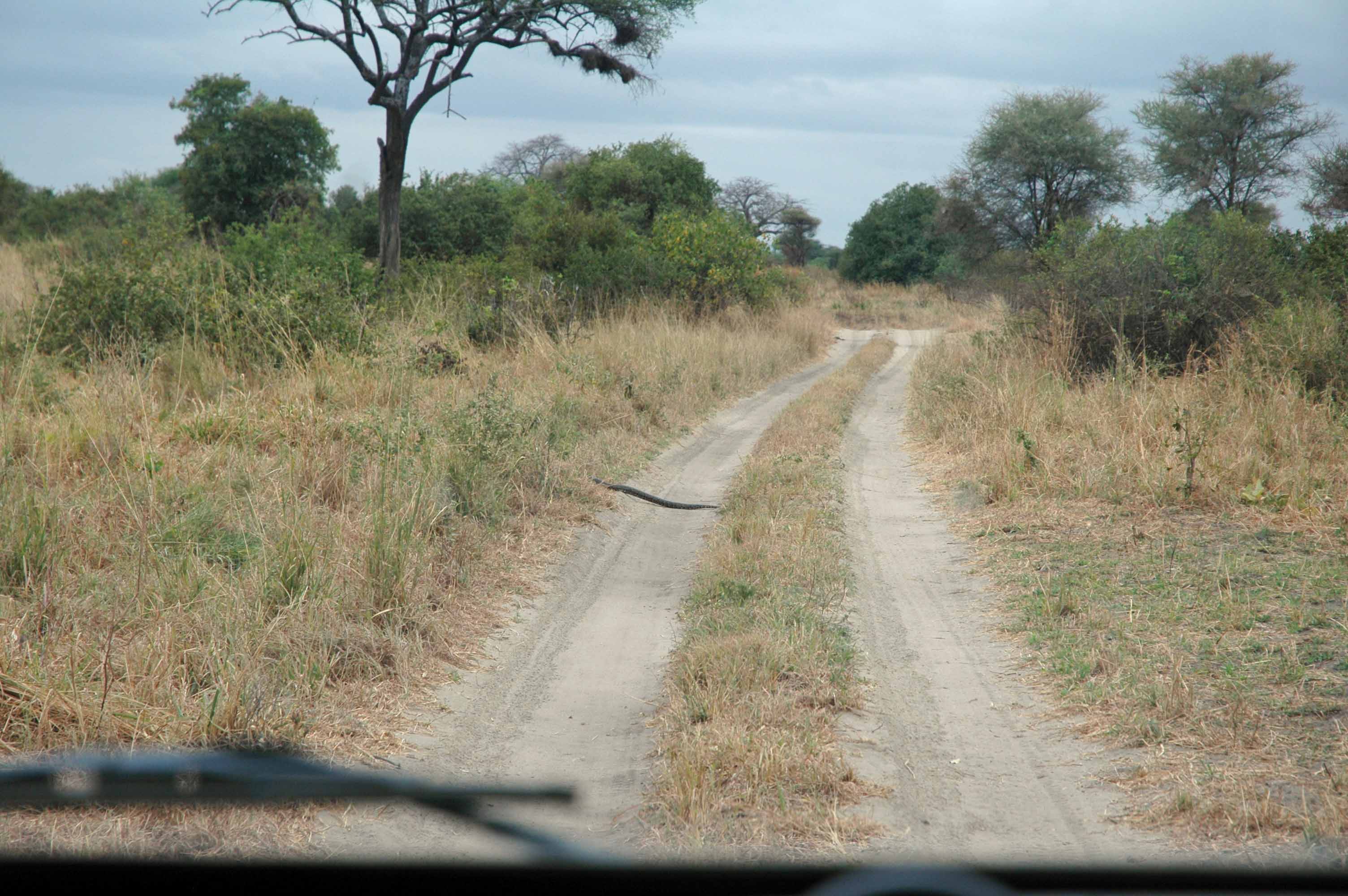
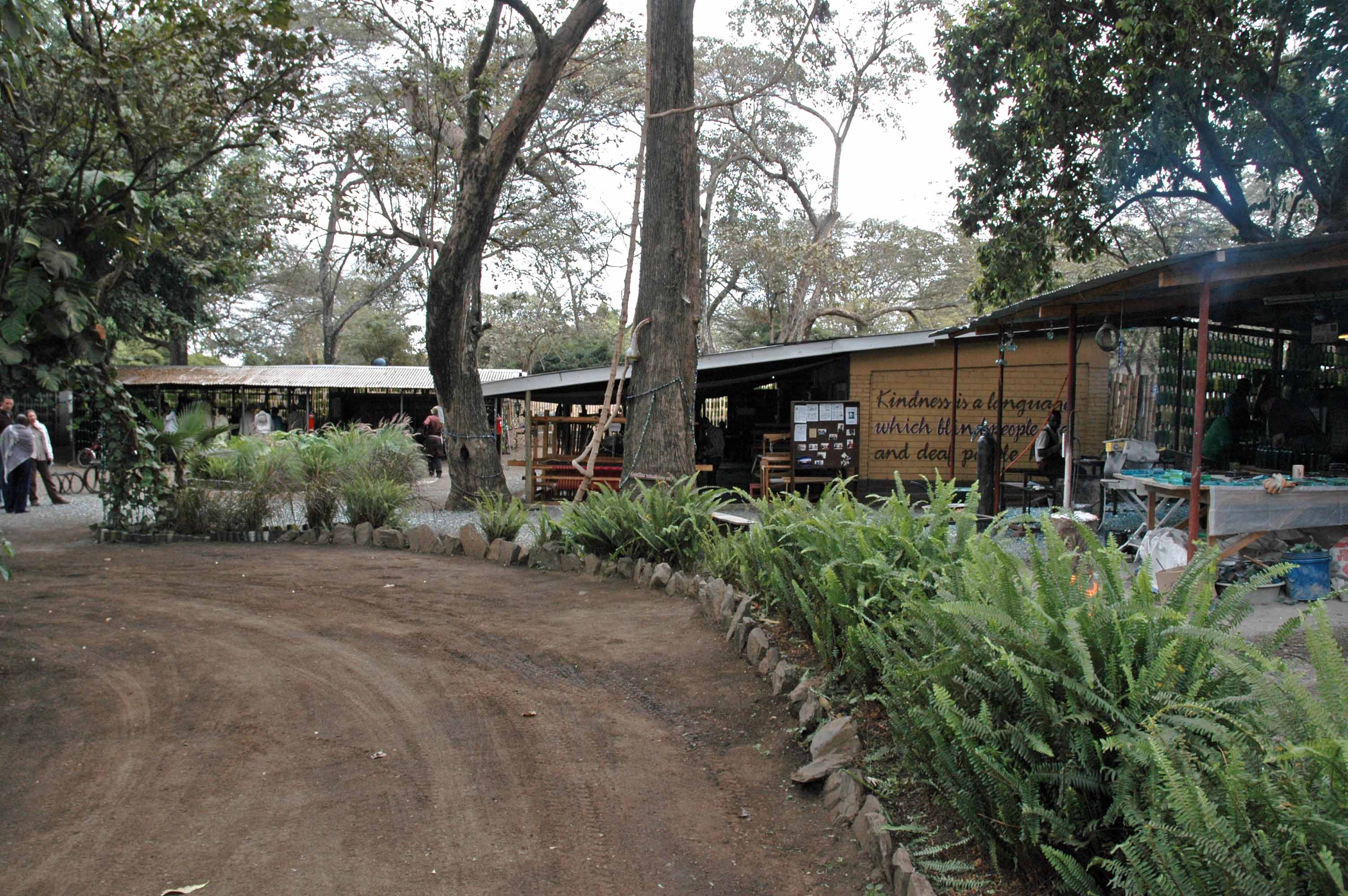
(Click photos to see larger size)
We left the cultural center and proceeded to a hotel to spend a few hours in a "day room," pulling ourselves together, bathing, repacking, and resting for the many hours of travel before us. There was a TV in the room. The first we'd seen in 16 days. We'd retrained ourselves to live without it, and now that it was back, it was strange. After just a few hours, we left for the airport. Along the way we watched the sunset. Our last sunset in Africa, At the airport, there were lots of hugs and goodbyes, and perhaps even a tear or two. How do you say goodbye to people you've just spent 16 life-changing days with?
We squeezed back into airline economy seats, headed down to Dar Es Salam to pick up more passengers, and then started the long journey through the night back to Europe.
Click here for more pictures from Day 16
Day 17 - 8/23/13 - Friday.
Home.
The sun rose on us today in Amsterdam. We said goodbye to our new safari friends, who took a different flight back to their home. We're so glad they were with us for the last couple of weeks. The whole experience was much better in the company of friends. The final flights home were relatively uneventful. We touched down 26 hours after leaving Tanzania. So, so tired. Glad to be on the ground finally. Bodies drained. Souls full.
Epilogue
M and I have now had the privilege to visit all seven of our world's continents. We've met so many people of so many cultures, we've learned a few words in their languages, we've shared meals with them, we've seen and felt and known them at a level beyond language. We've seen their children play in the streets and fields and villages. We are all different, but we are all one people. All seven billion of us. We know the same joys, we feel the same happiness, we've been through the same sorrows. One people. One of the greatest sorrows is that too many of us don't see what unites us. Too many of us see only what separates us, and are filled with hatred for what is different. If only they could see what we've seen. If only they could walk where we've walked. If only they could understand what we've had the grace to discover. If only.
 We arrived in Amsterdam without incident and made our connection to Kilimanjaro. After 9 hours crossing the Atlantic, just about the last thing we wanted to do was get on another plane for another 9 hours. Especially in coach. Africa IS really far away. We watched the sunset in flight over Kenya, which was really nice. Oranges, blues, grays... beautiful. Finally got to Kilimanjaro airport and when we stepped off the airplane, I looked at M and said "7." She knew. We've now been to all seven continents. In fact, I realized that we'd set foot in three different continents in less than 24 hours. Then I realized that this wasn't a first for me. I once did the London to Sydney run with a refueling stop in Singapore. I'm not sure whose life I'm living, but it's pretty cool and I hope he doesn't find out.
We arrived in Amsterdam without incident and made our connection to Kilimanjaro. After 9 hours crossing the Atlantic, just about the last thing we wanted to do was get on another plane for another 9 hours. Especially in coach. Africa IS really far away. We watched the sunset in flight over Kenya, which was really nice. Oranges, blues, grays... beautiful. Finally got to Kilimanjaro airport and when we stepped off the airplane, I looked at M and said "7." She knew. We've now been to all seven continents. In fact, I realized that we'd set foot in three different continents in less than 24 hours. Then I realized that this wasn't a first for me. I once did the London to Sydney run with a refueling stop in Singapore. I'm not sure whose life I'm living, but it's pretty cool and I hope he doesn't find out.
 Africa? Why Africa? That's the question M and I kept hearing as we planned for our trip to the Serengeti. First of all, it's really far away. And, as we discovered, we were limited to only one 33 pound duffel bag each because of the small plane we'd be taking as our last leg. And, for most of the 16 day trip, we'd be without electricity, the Internet, phones or even running water. And we'd be in tents. And lions might eat us. Why Africa? Read on...
Africa? Why Africa? That's the question M and I kept hearing as we planned for our trip to the Serengeti. First of all, it's really far away. And, as we discovered, we were limited to only one 33 pound duffel bag each because of the small plane we'd be taking as our last leg. And, for most of the 16 day trip, we'd be without electricity, the Internet, phones or even running water. And we'd be in tents. And lions might eat us. Why Africa? Read on...





































































































































































































































